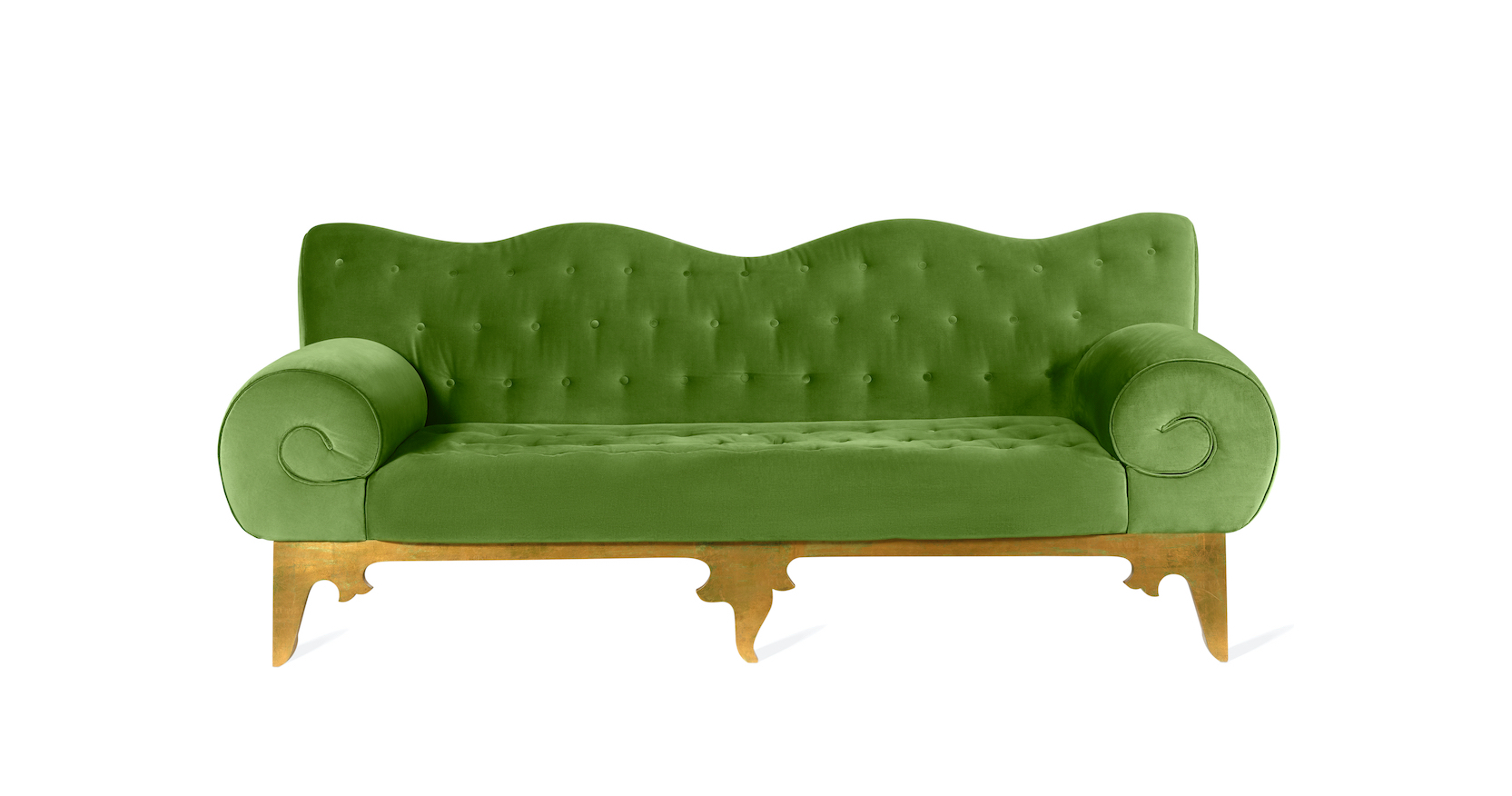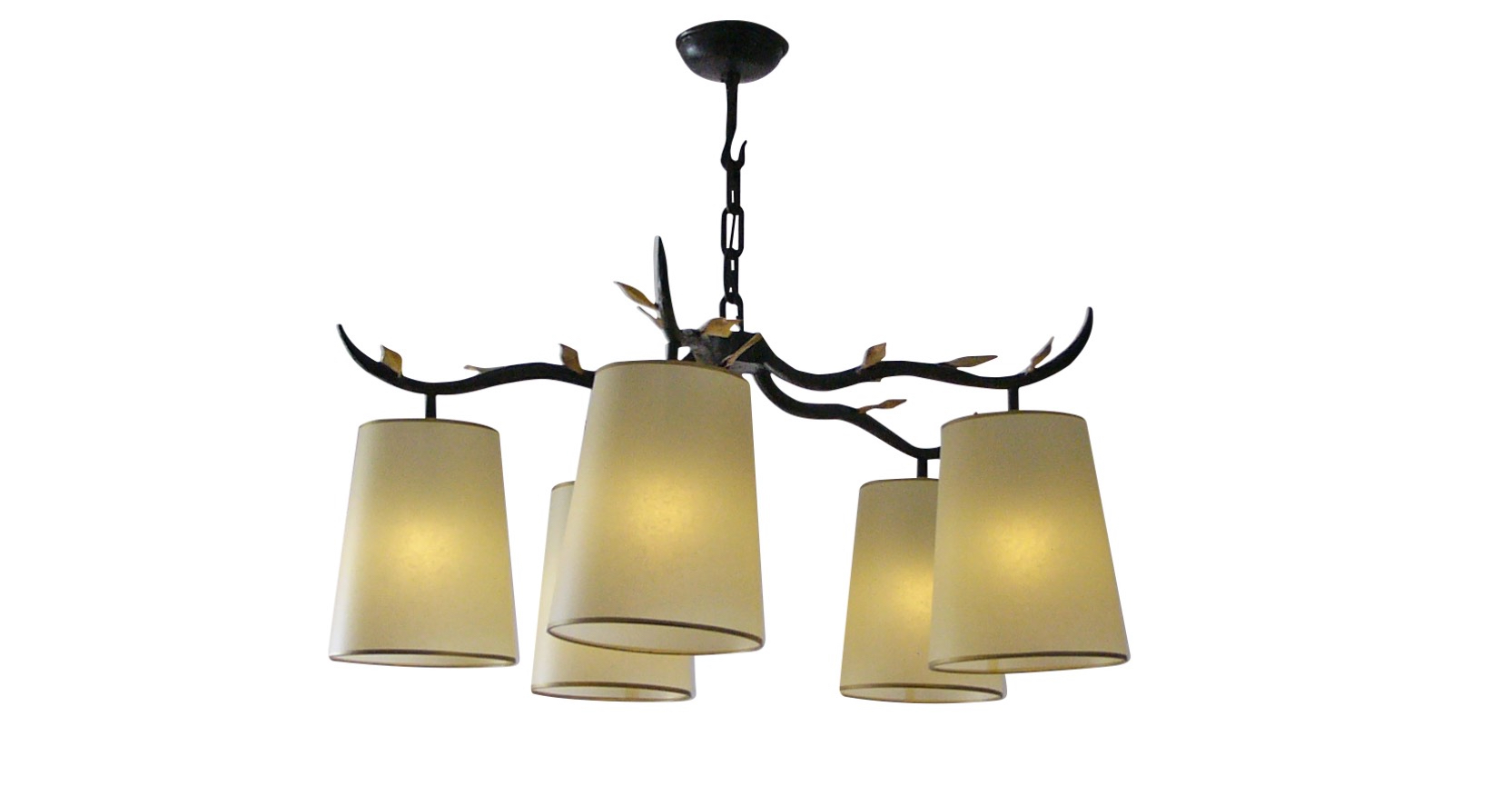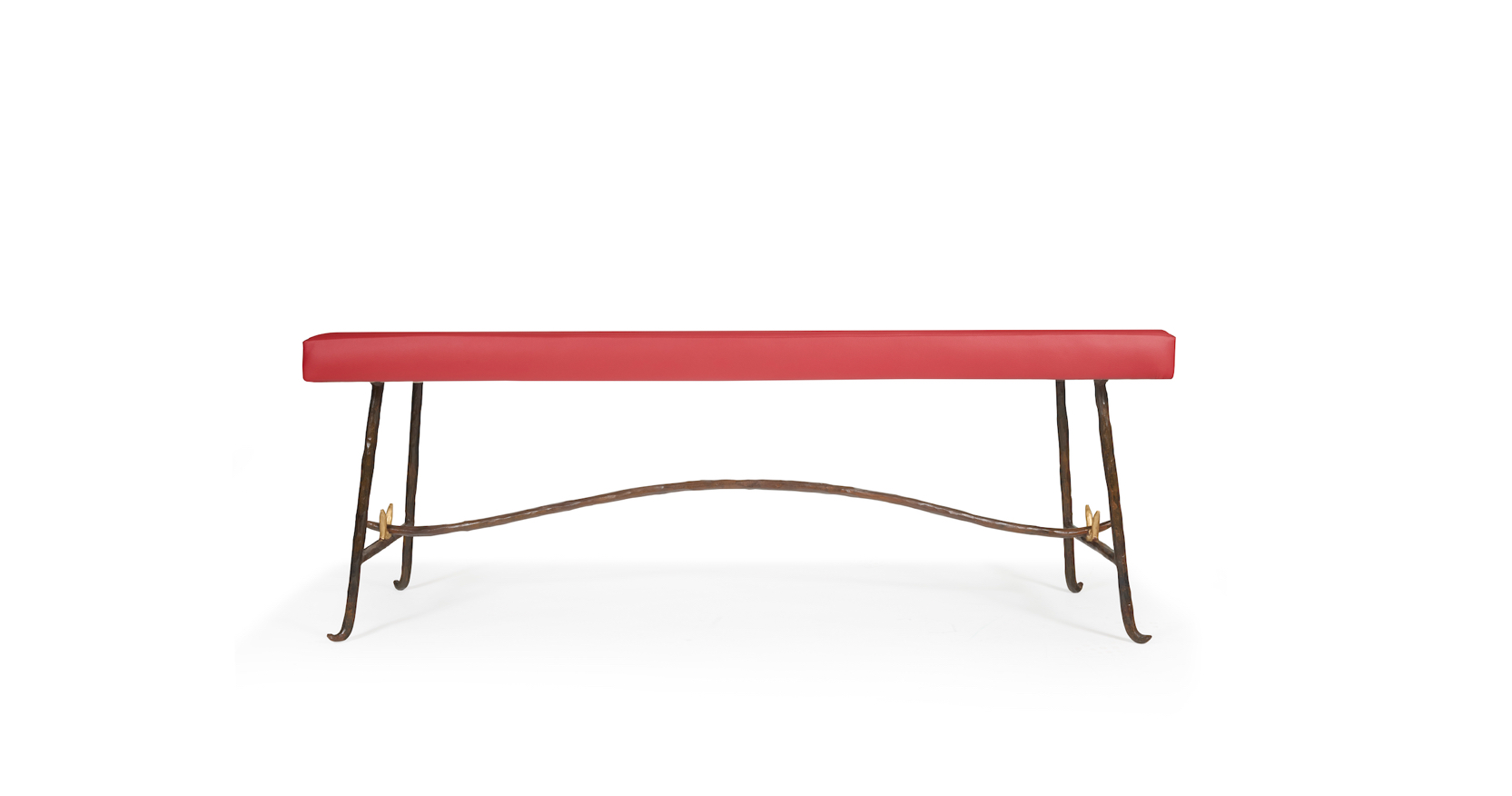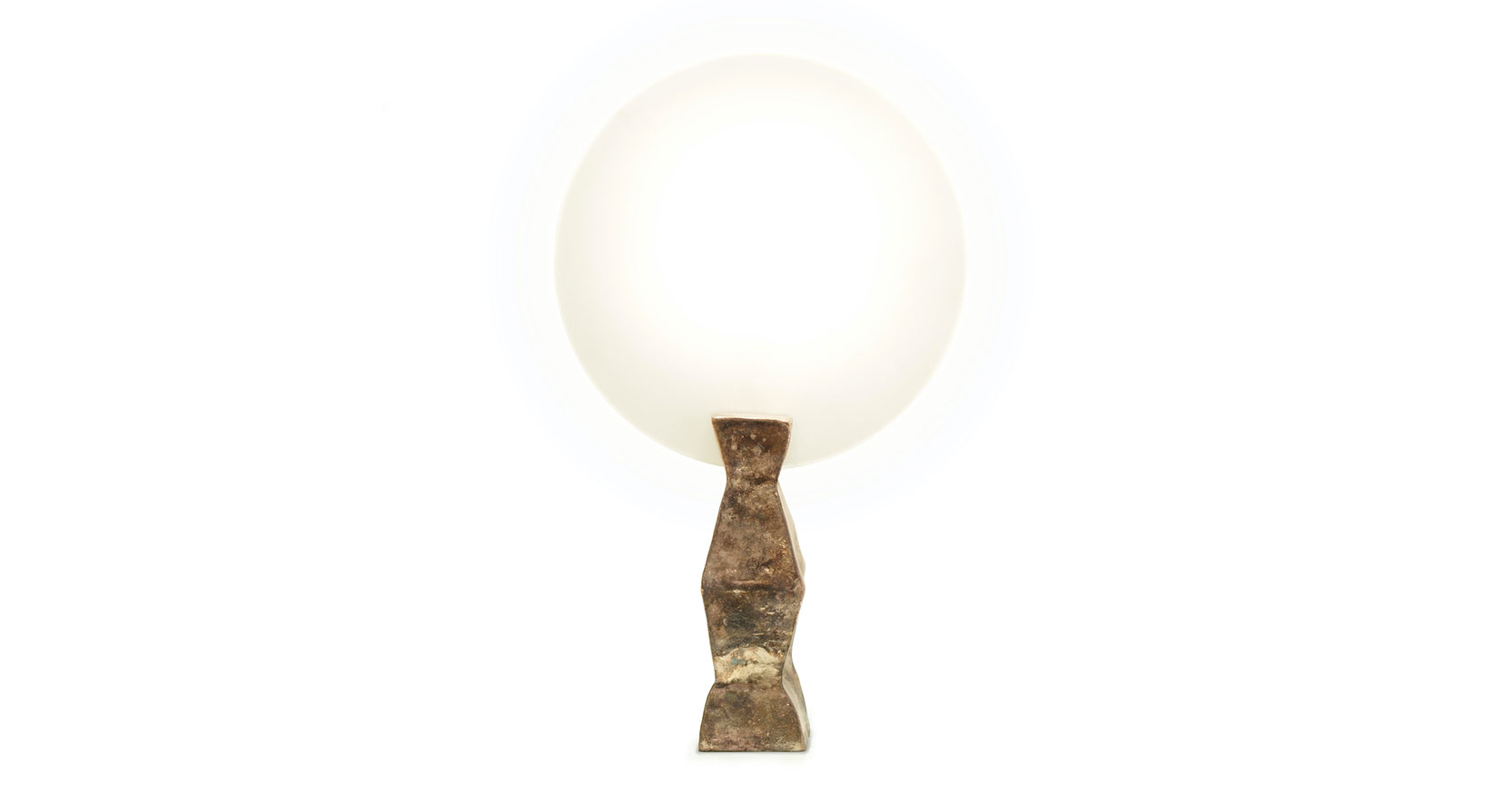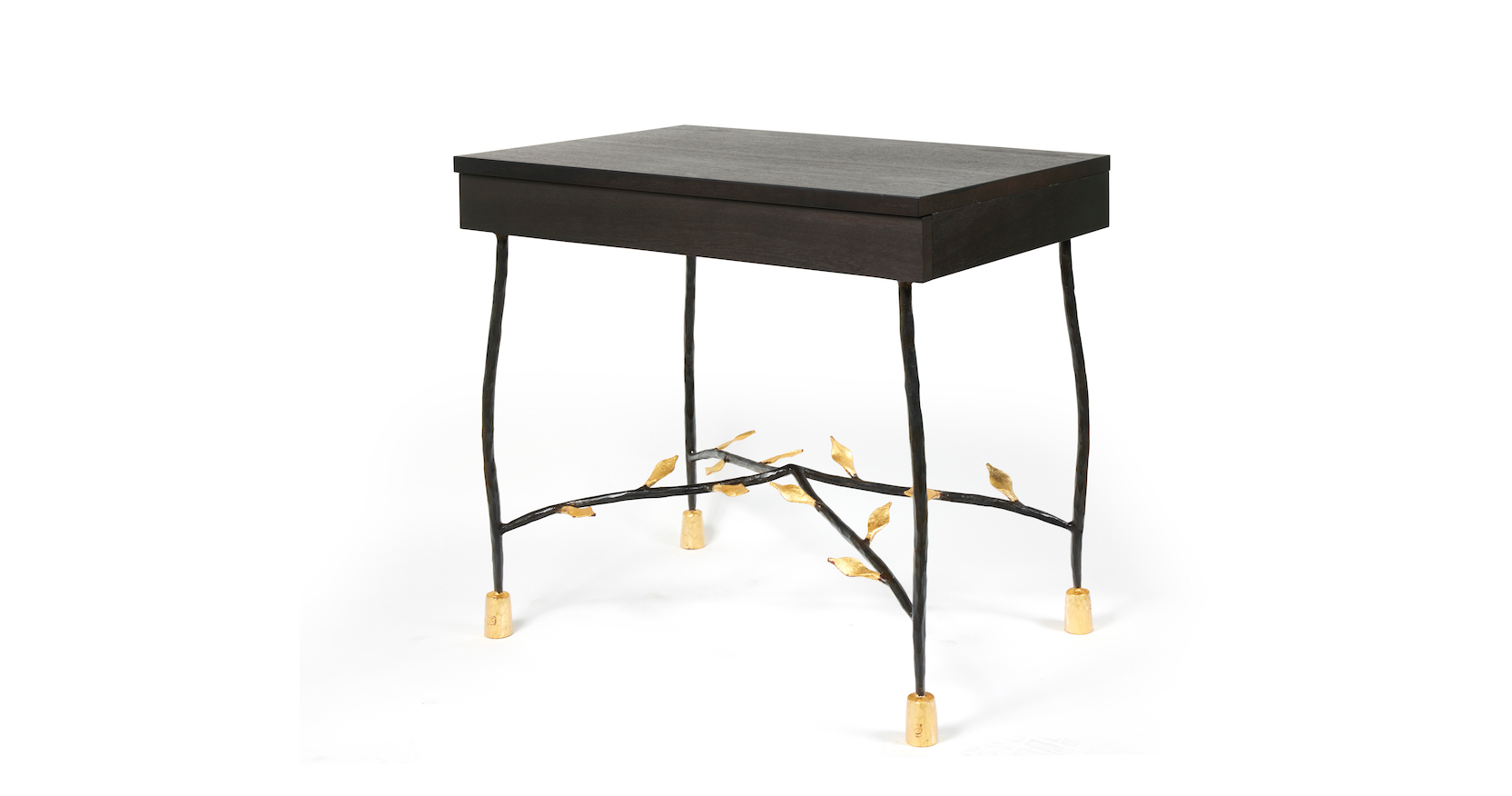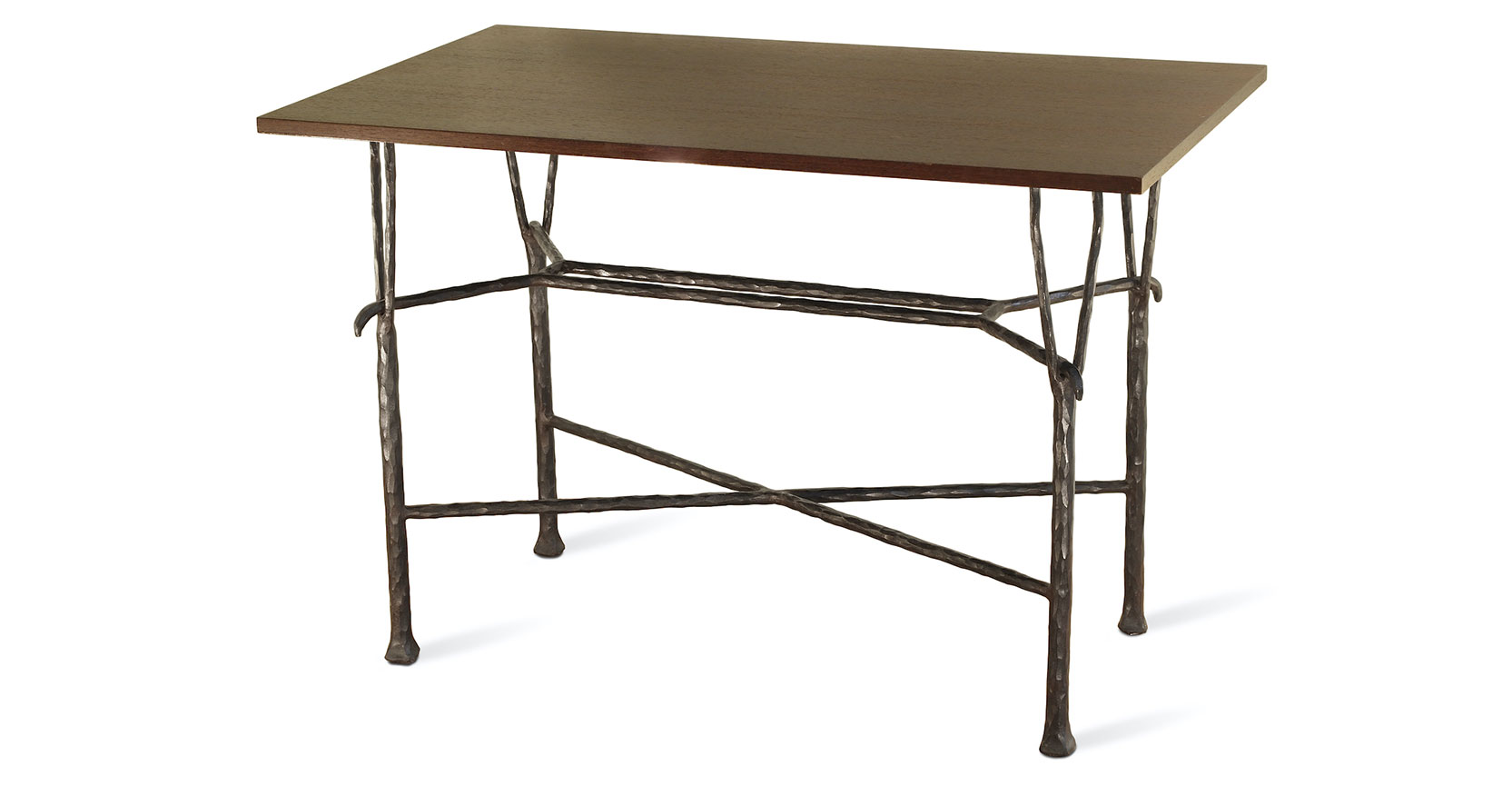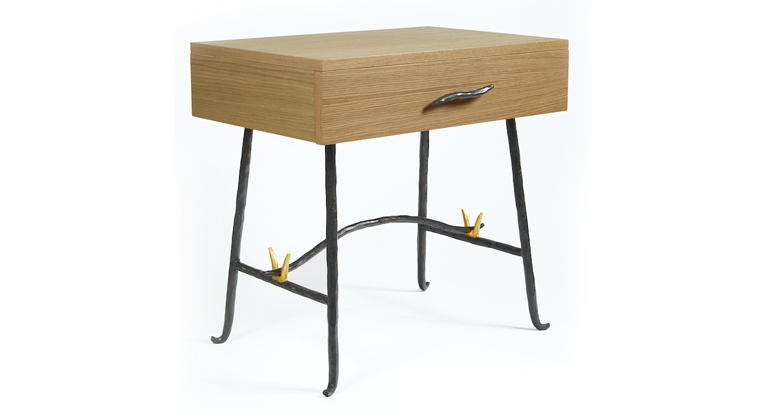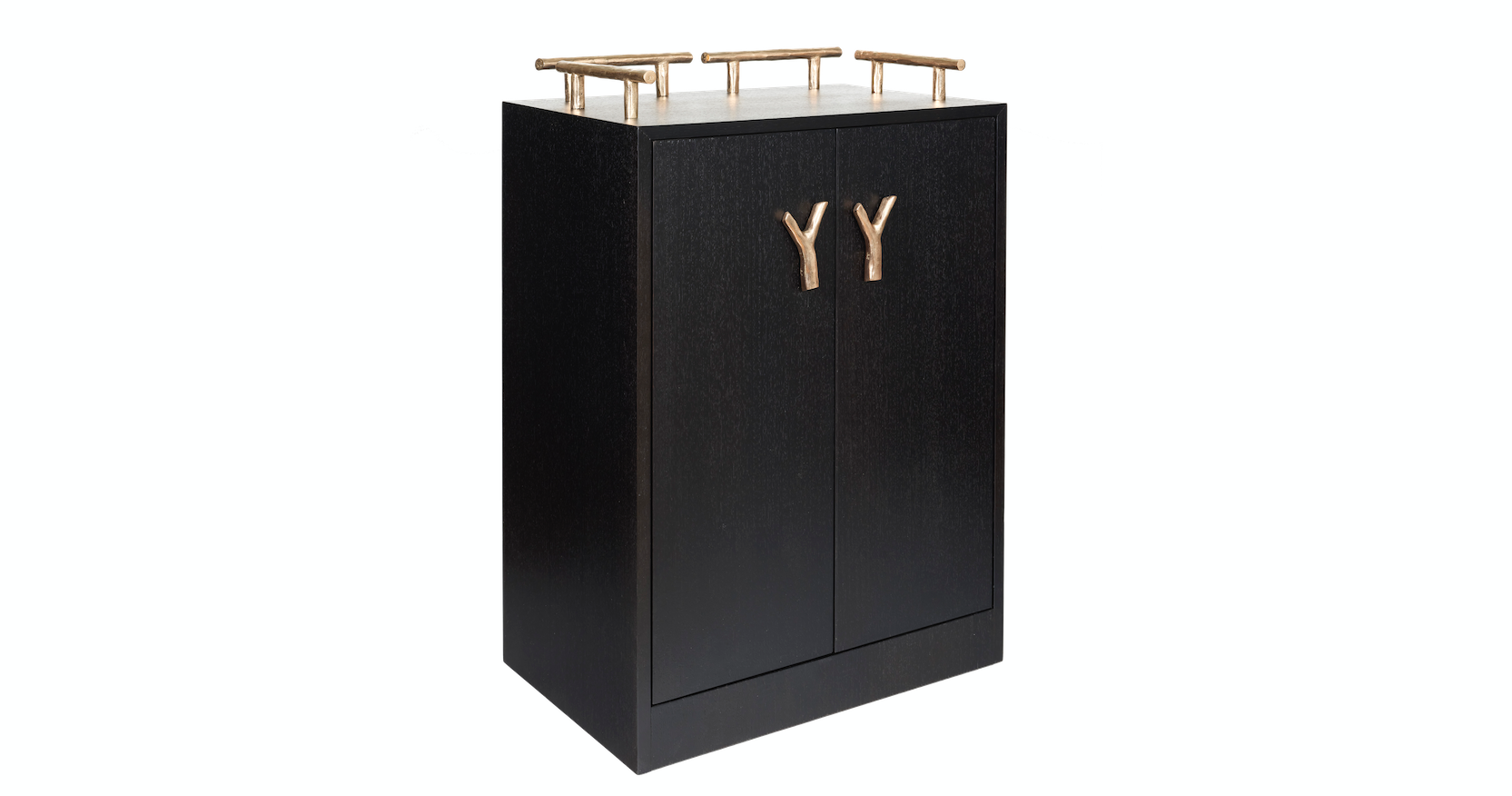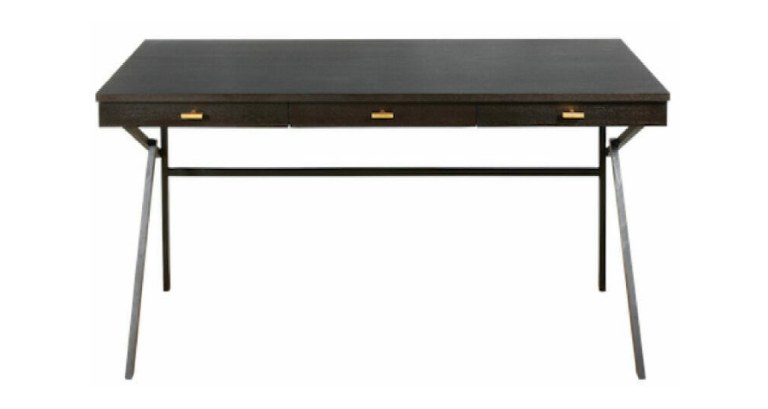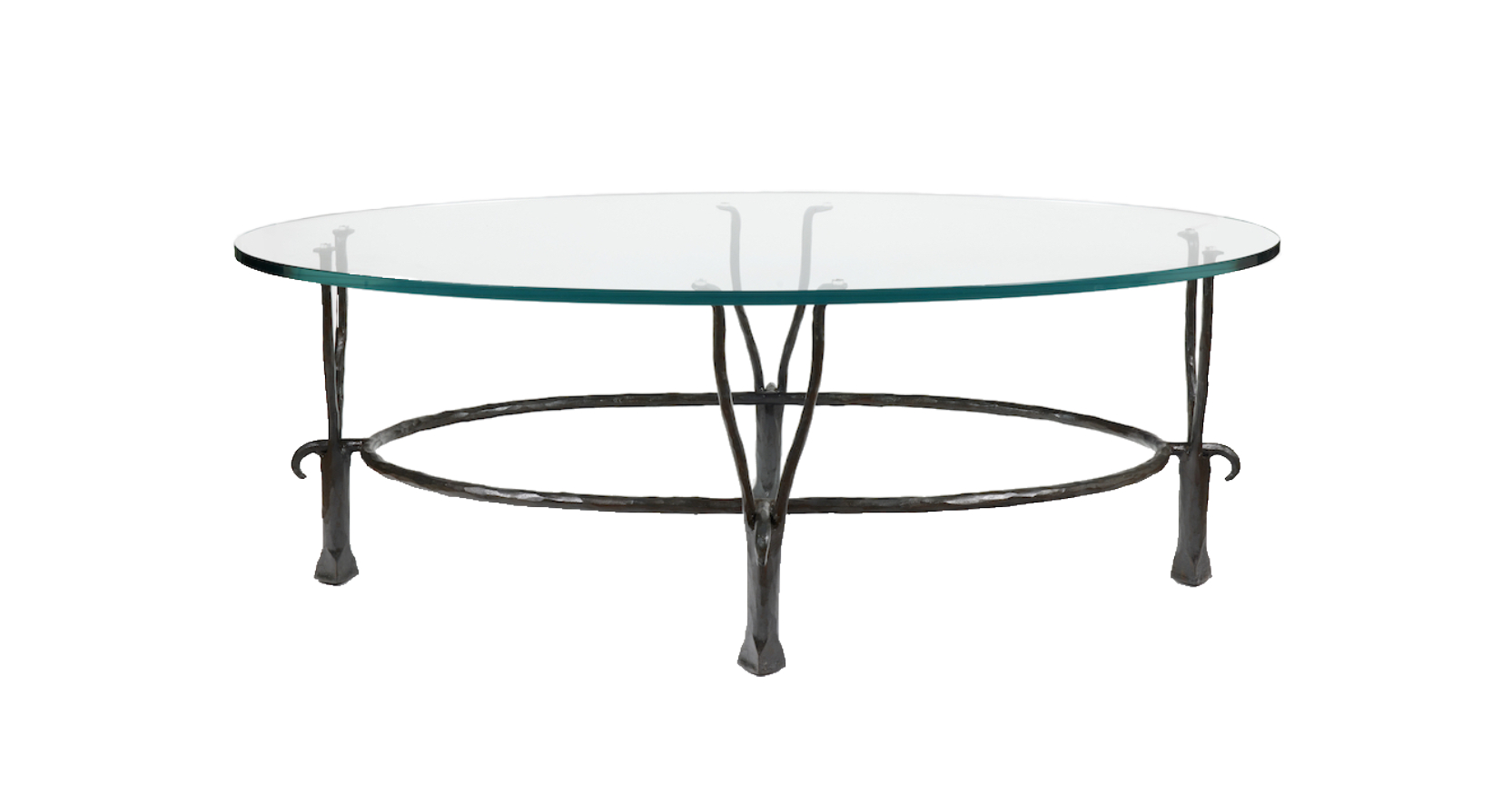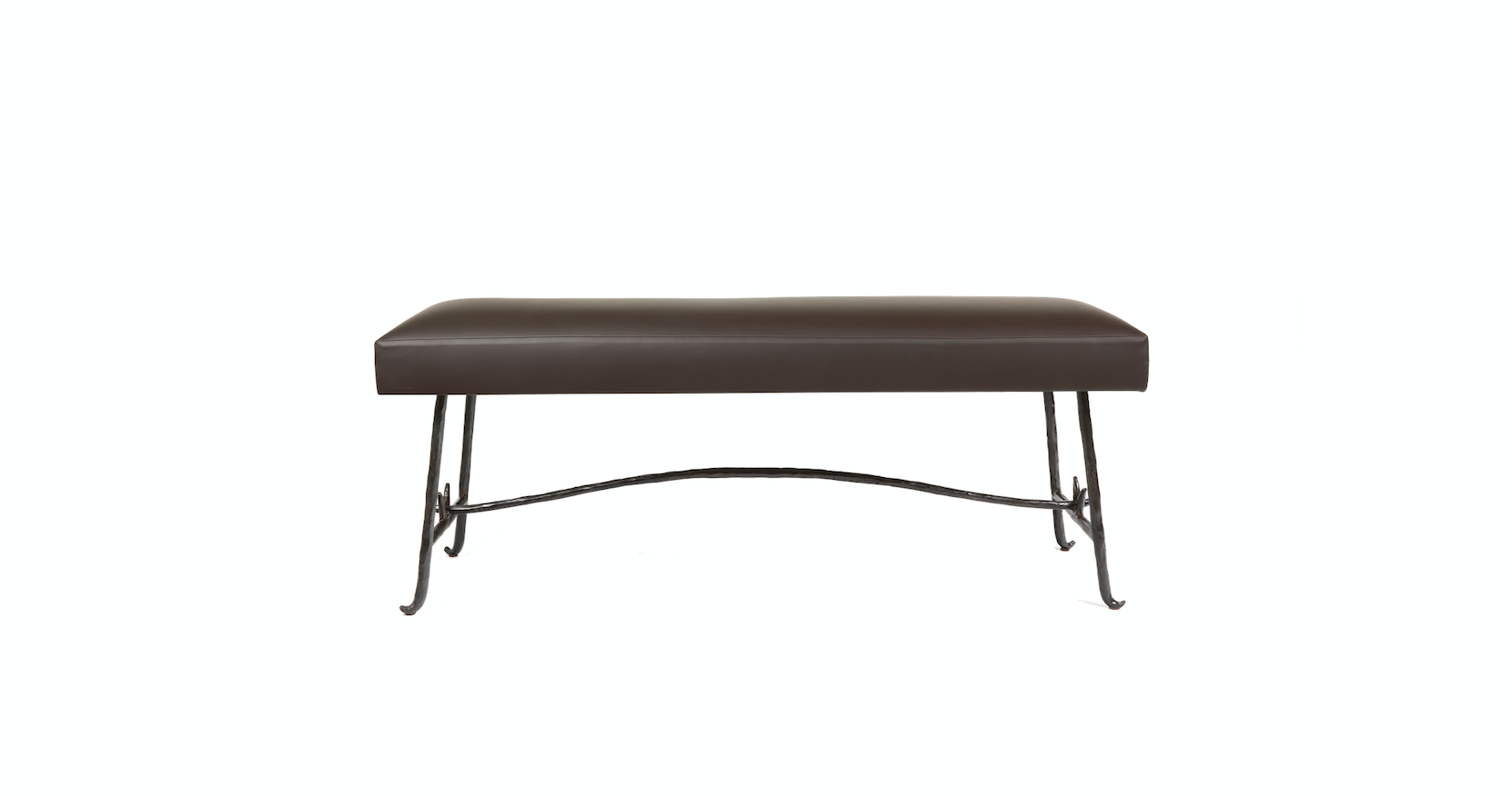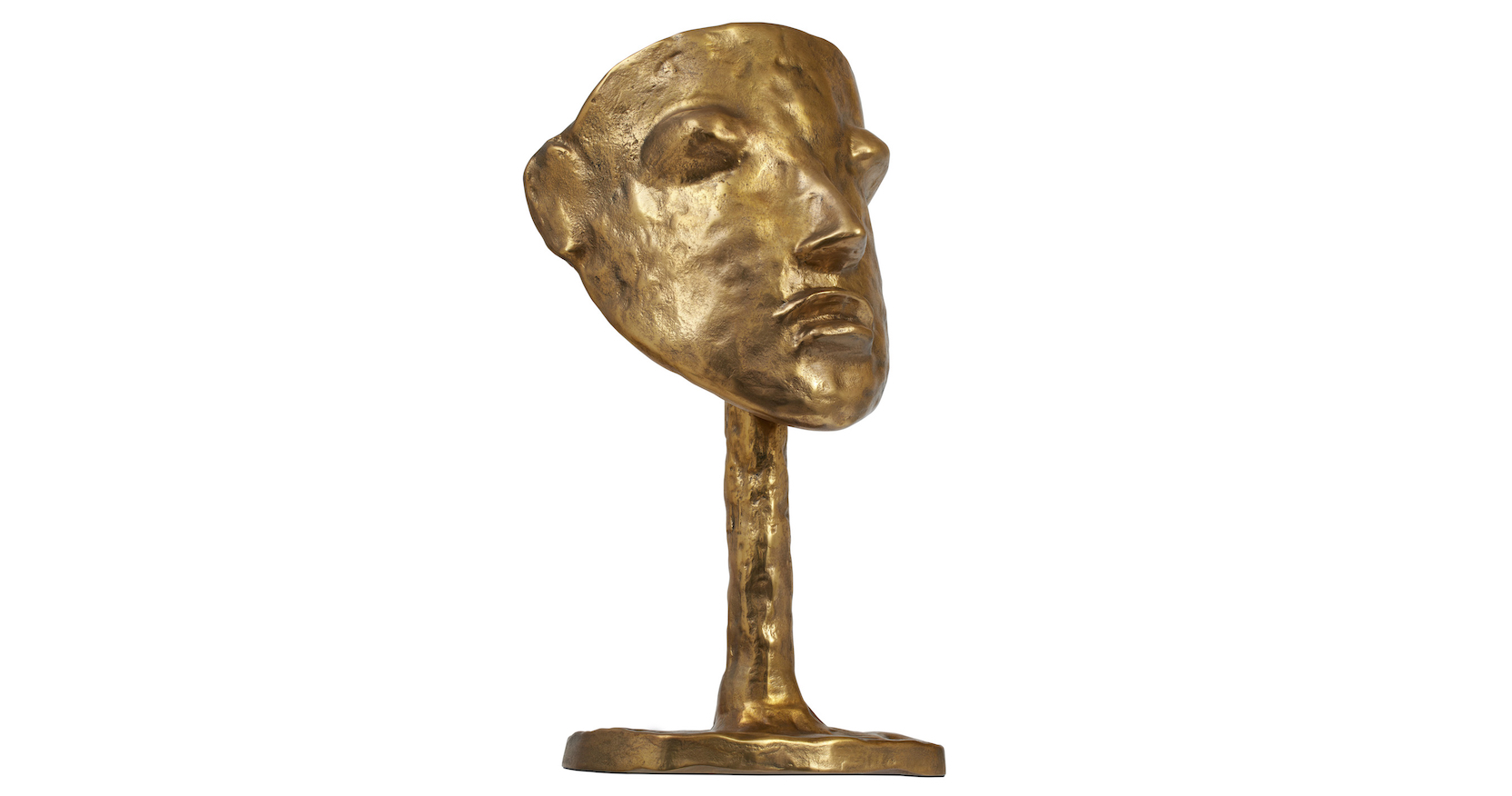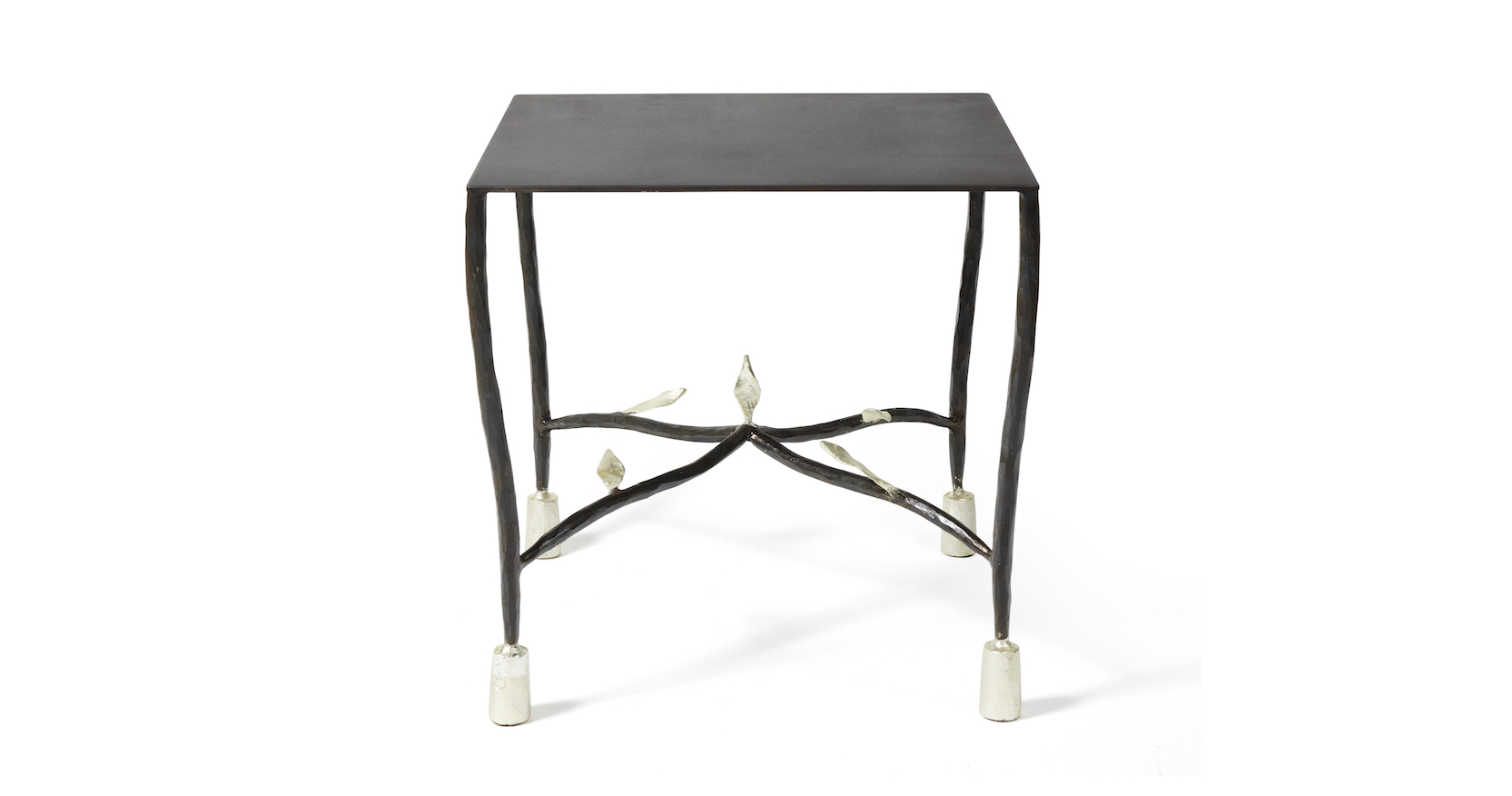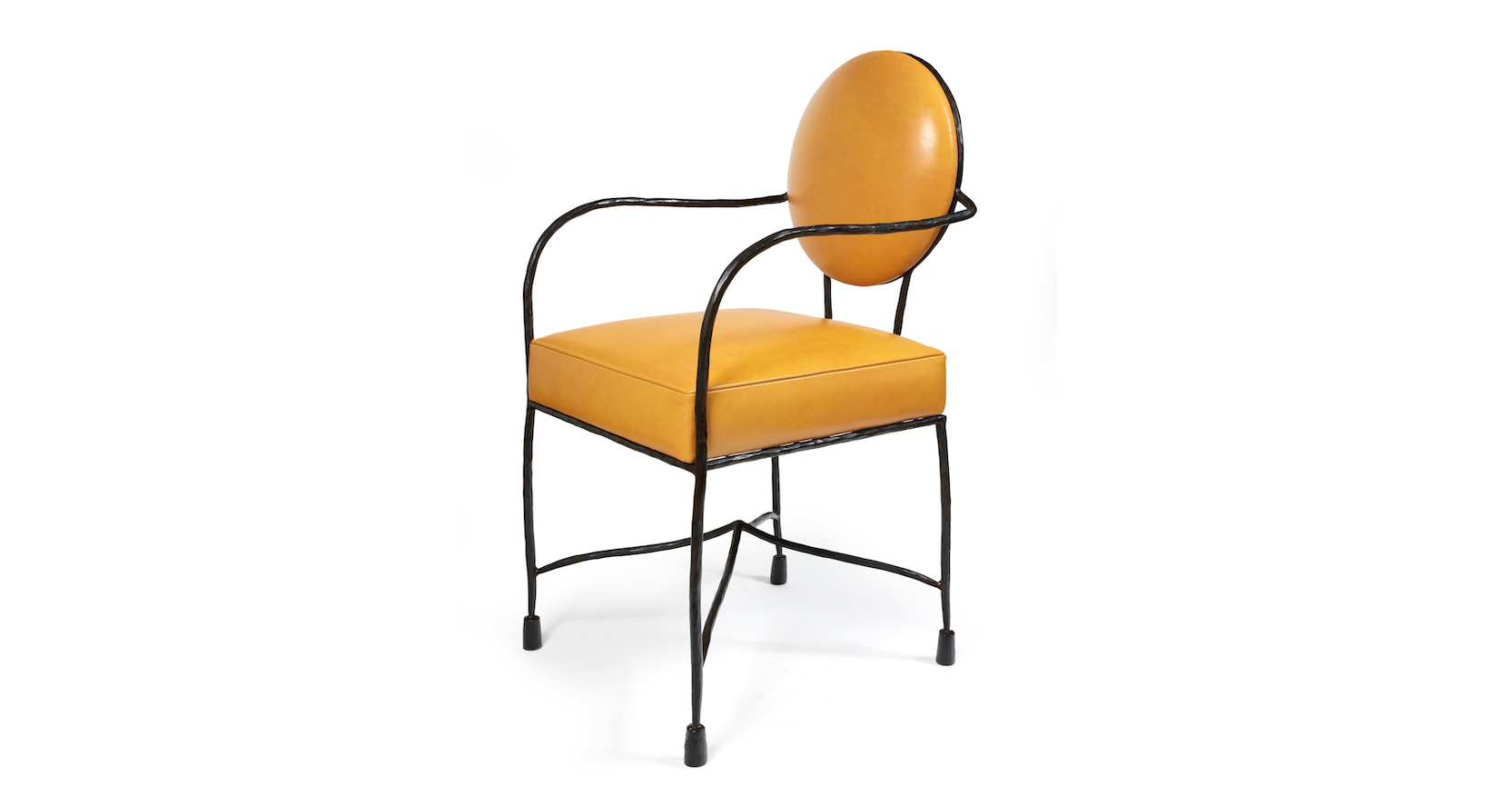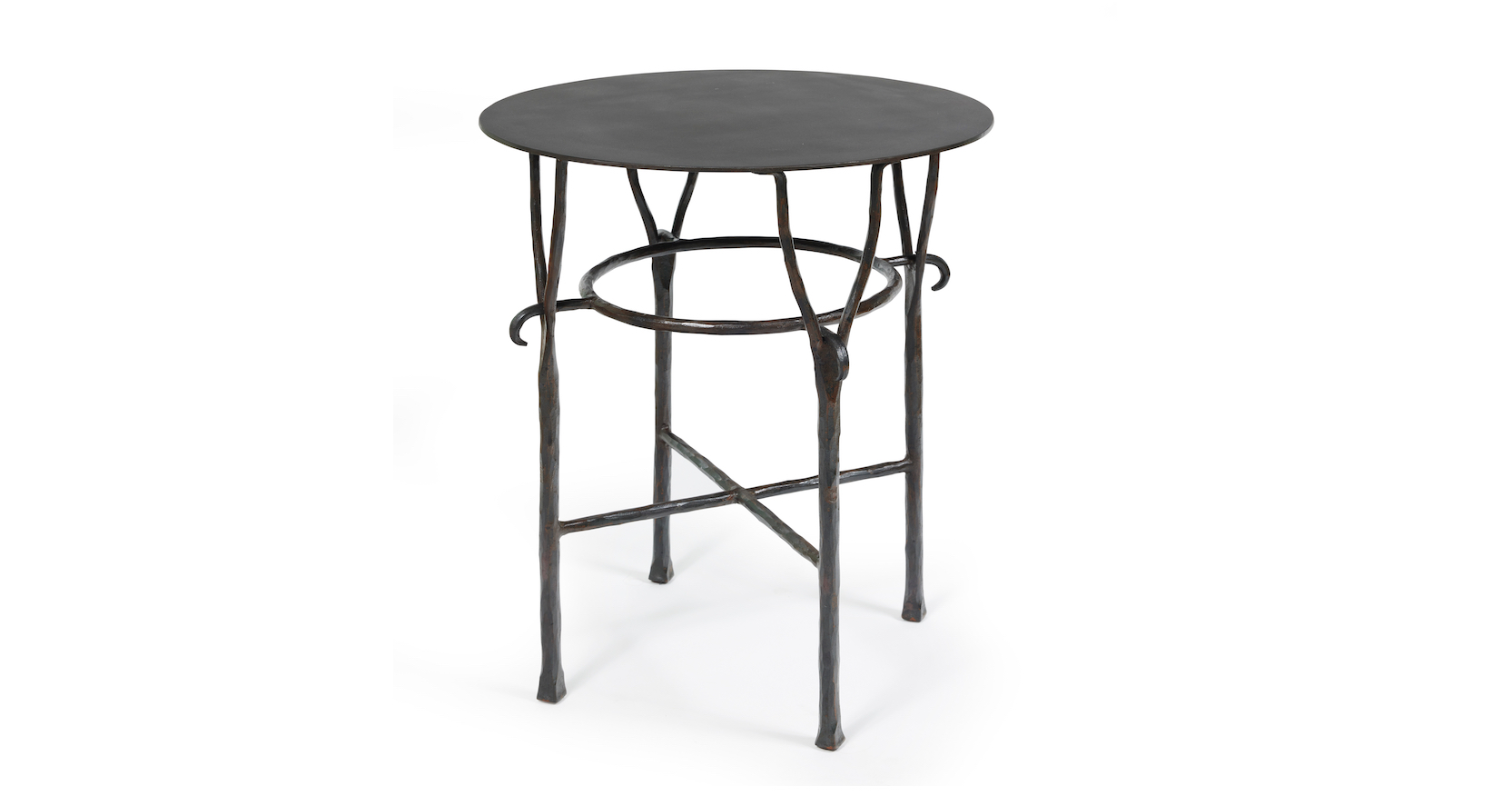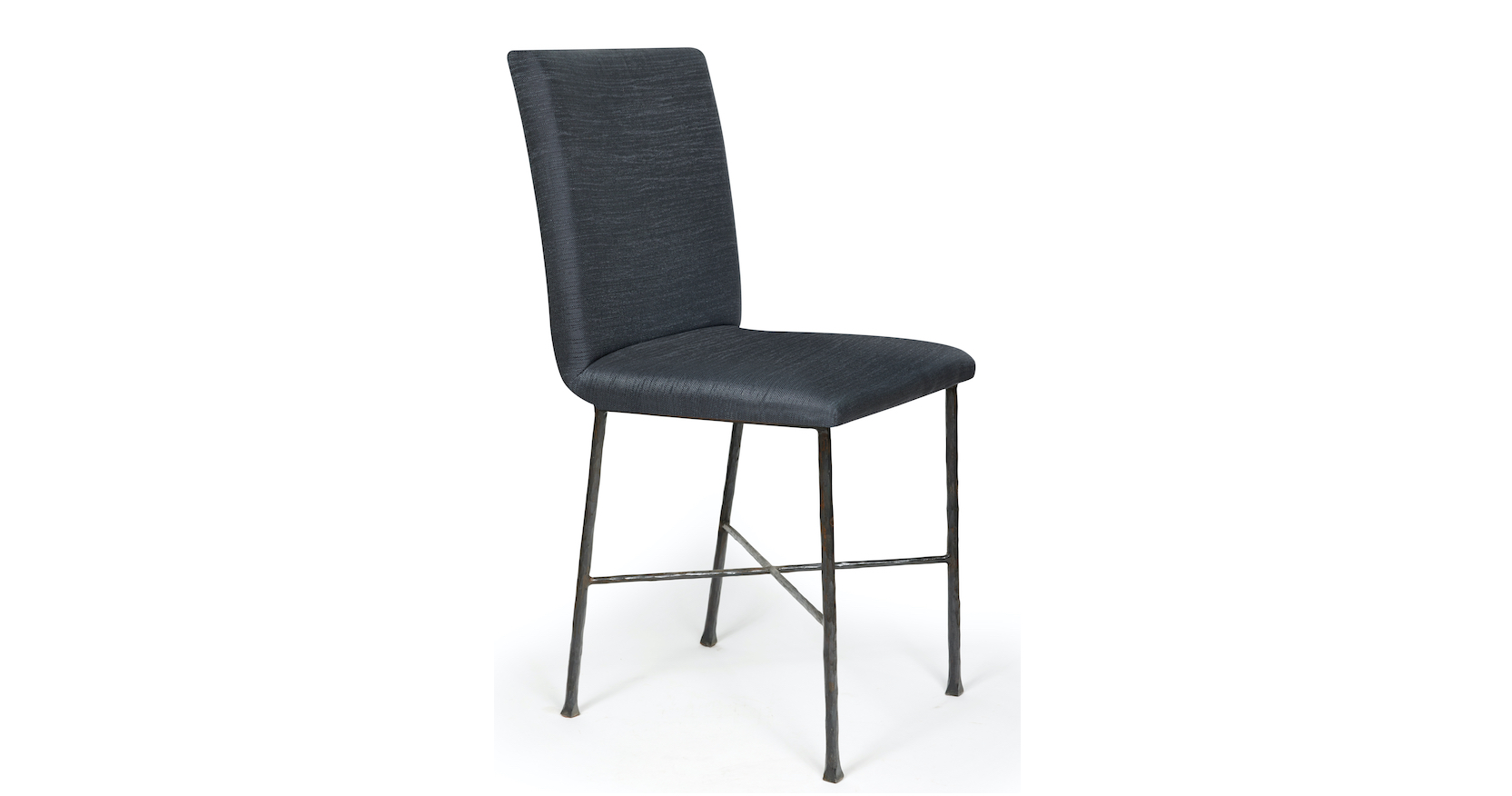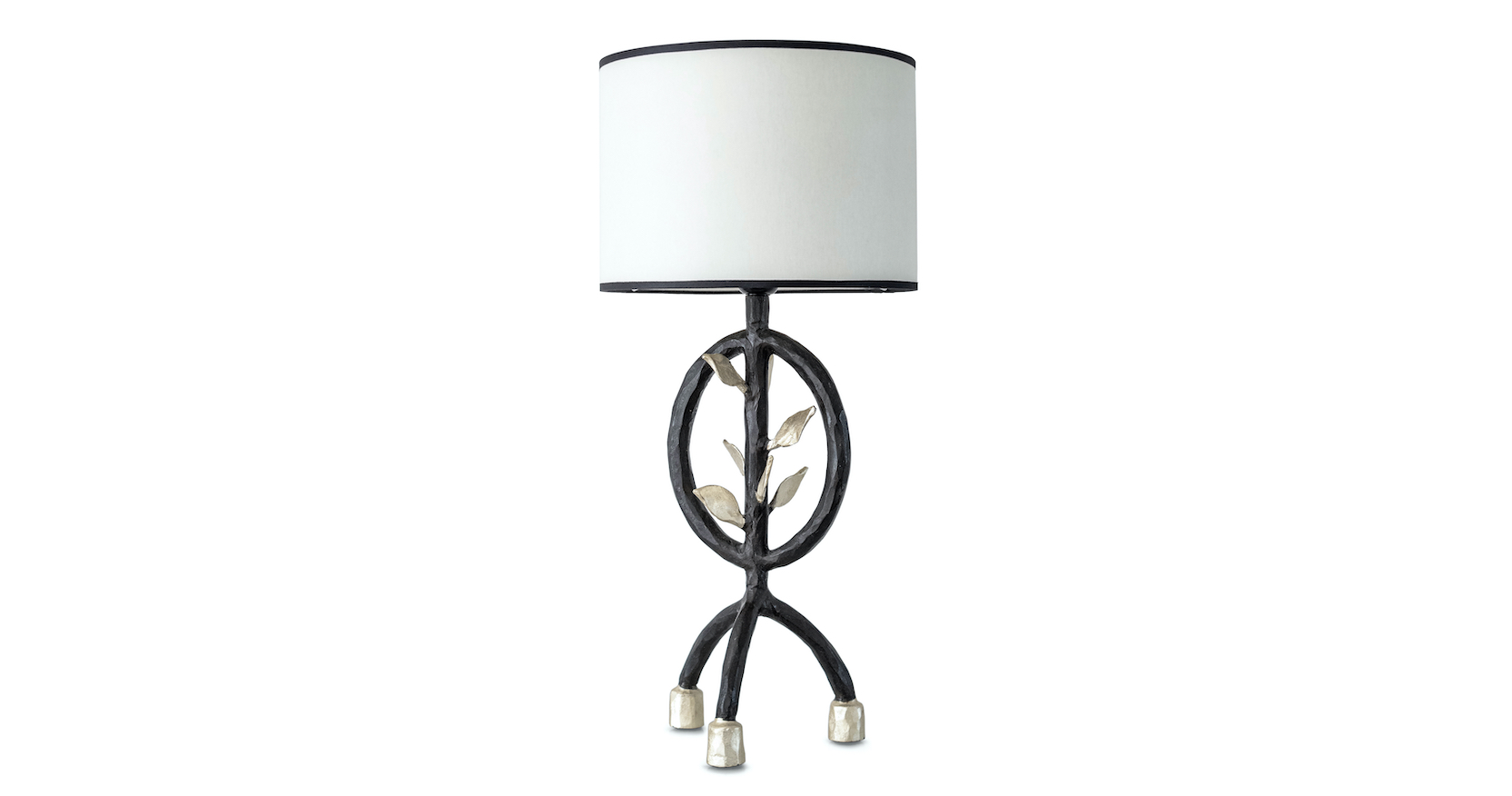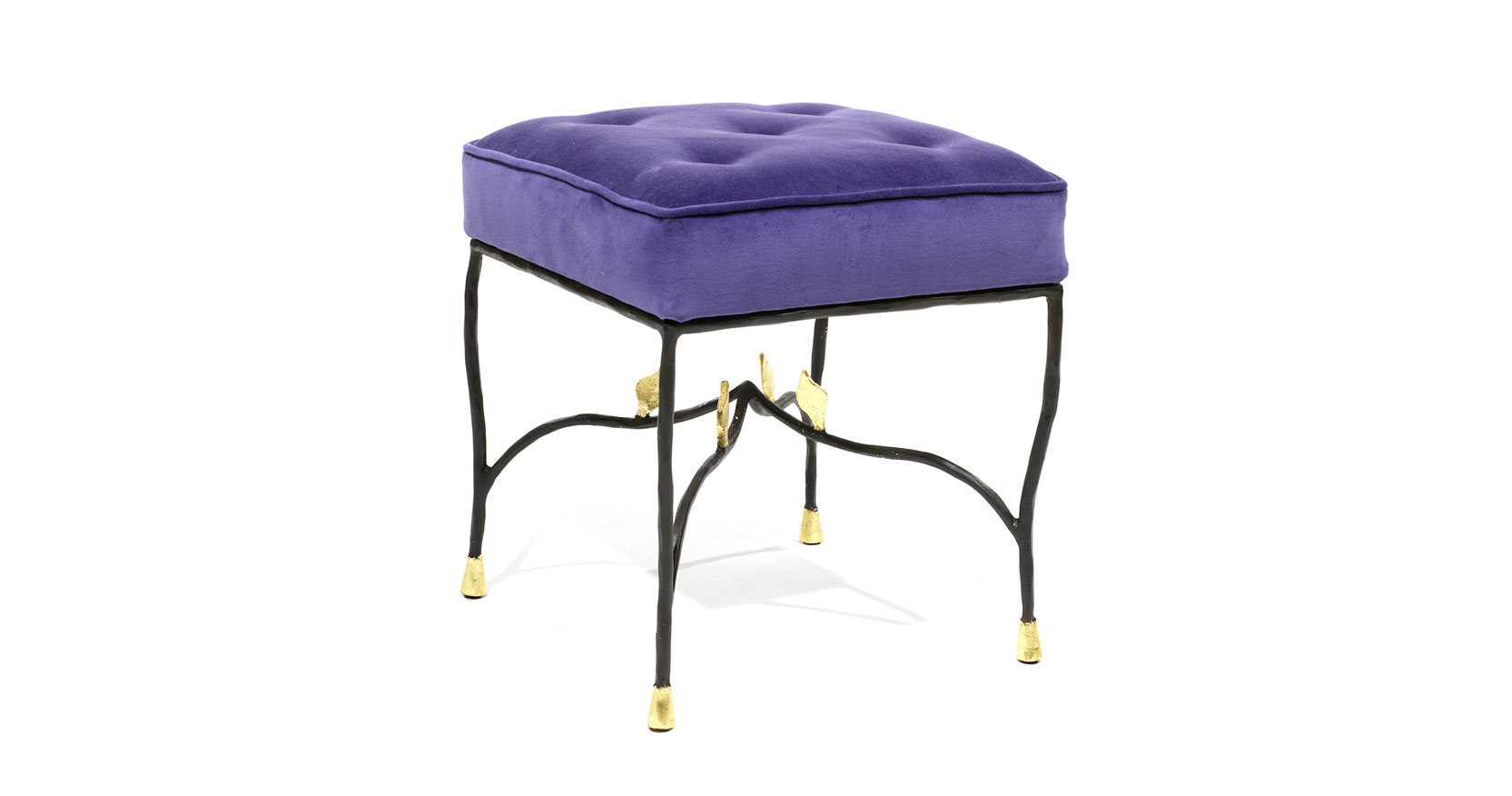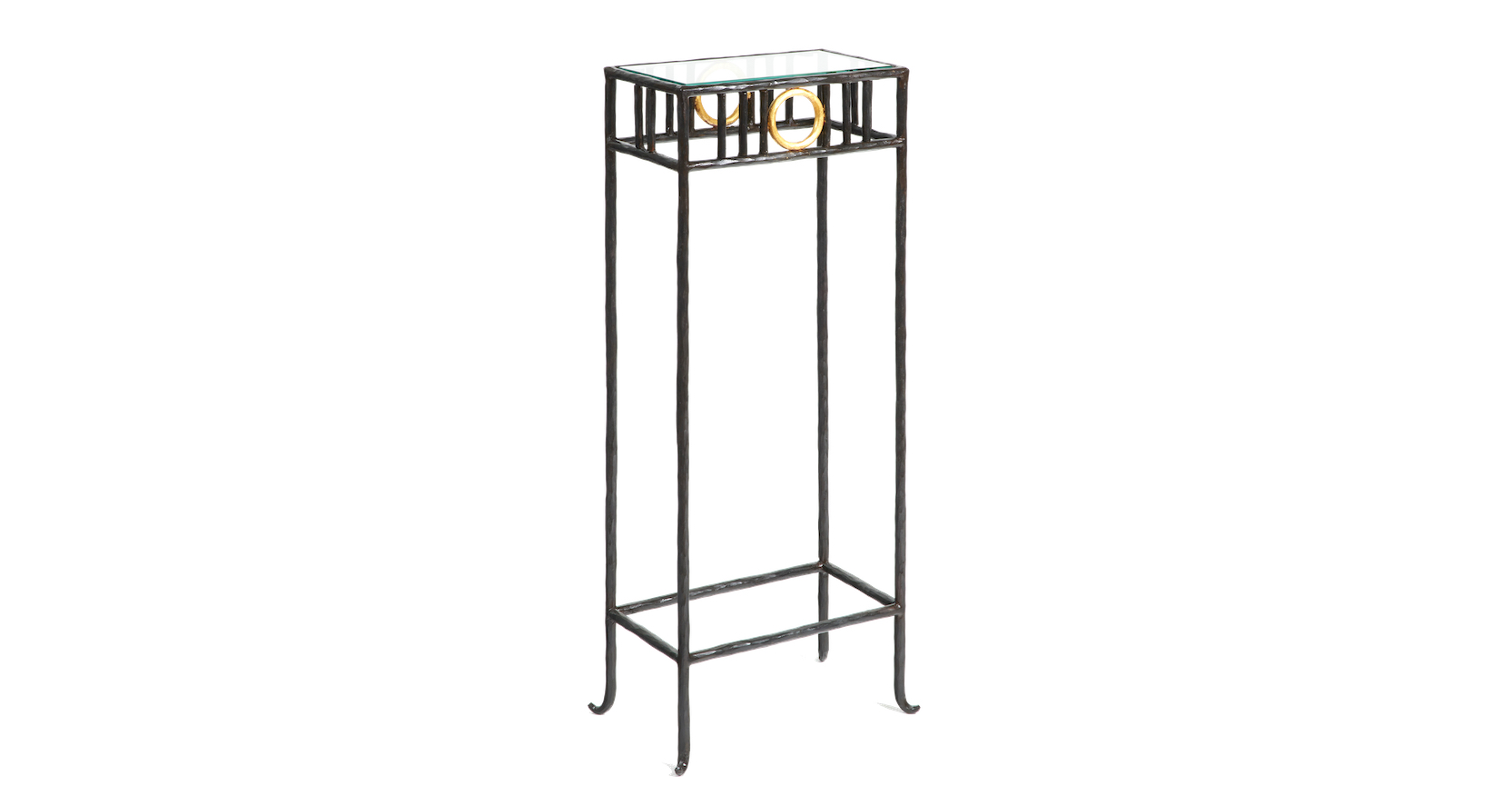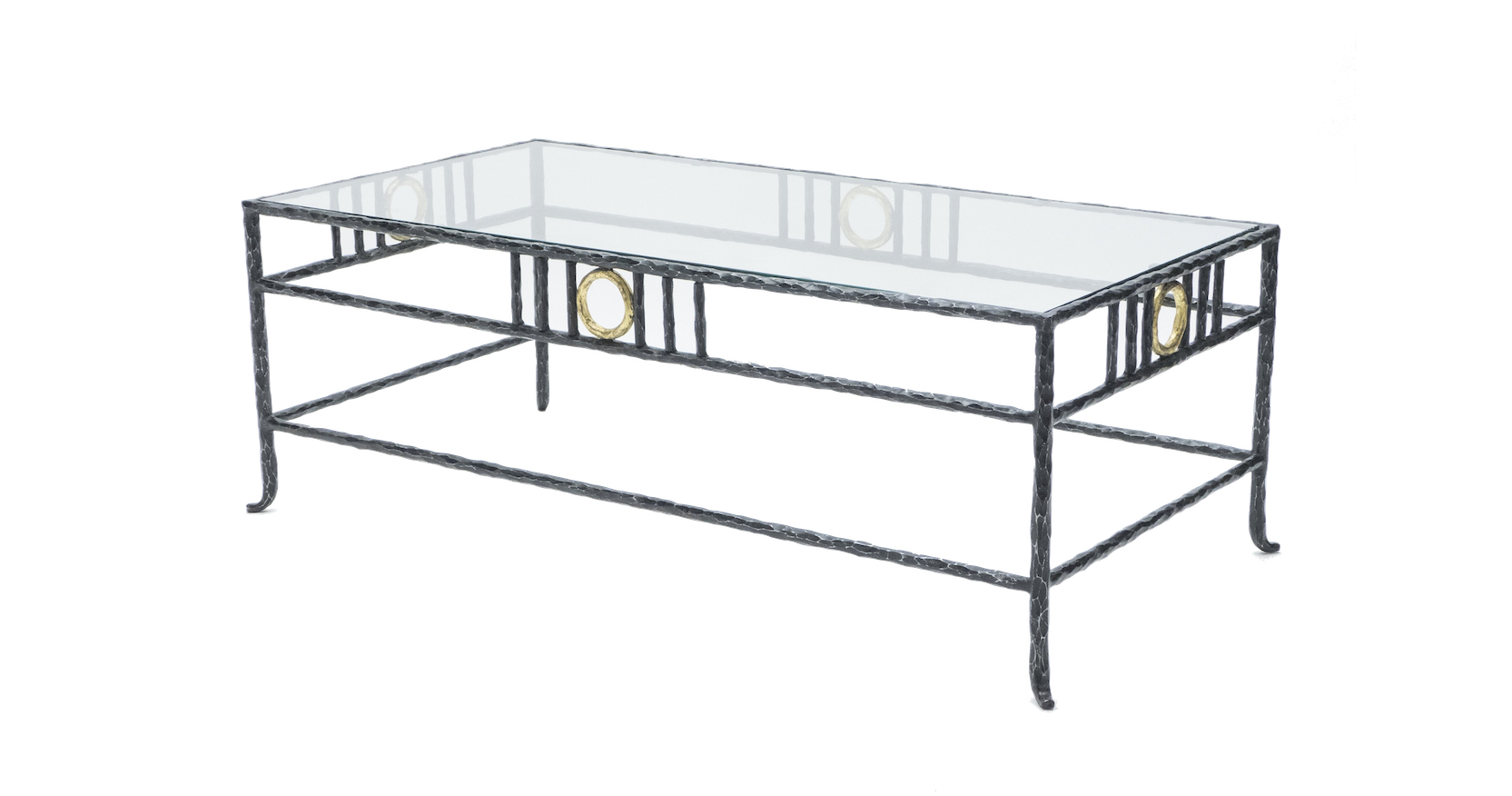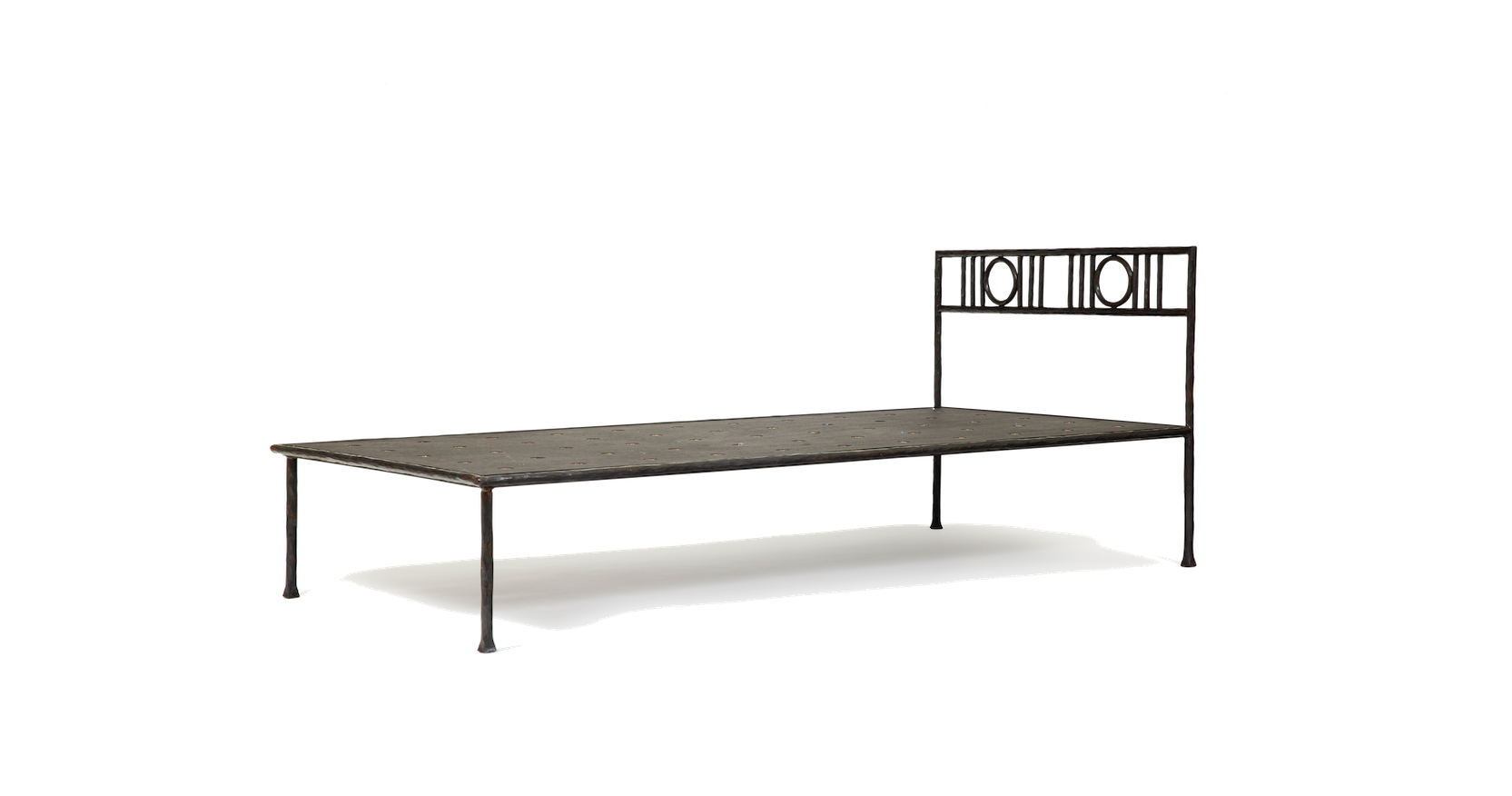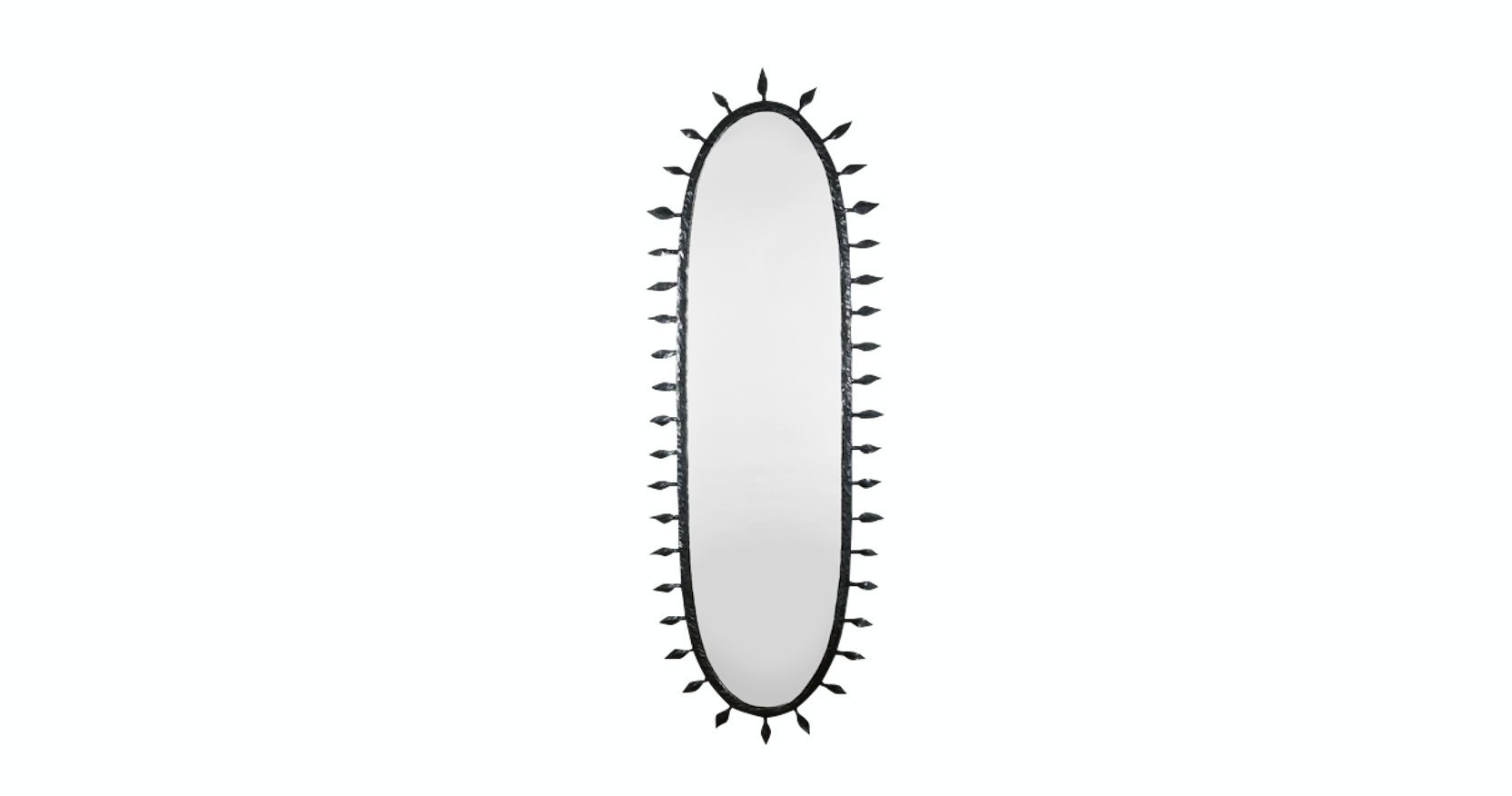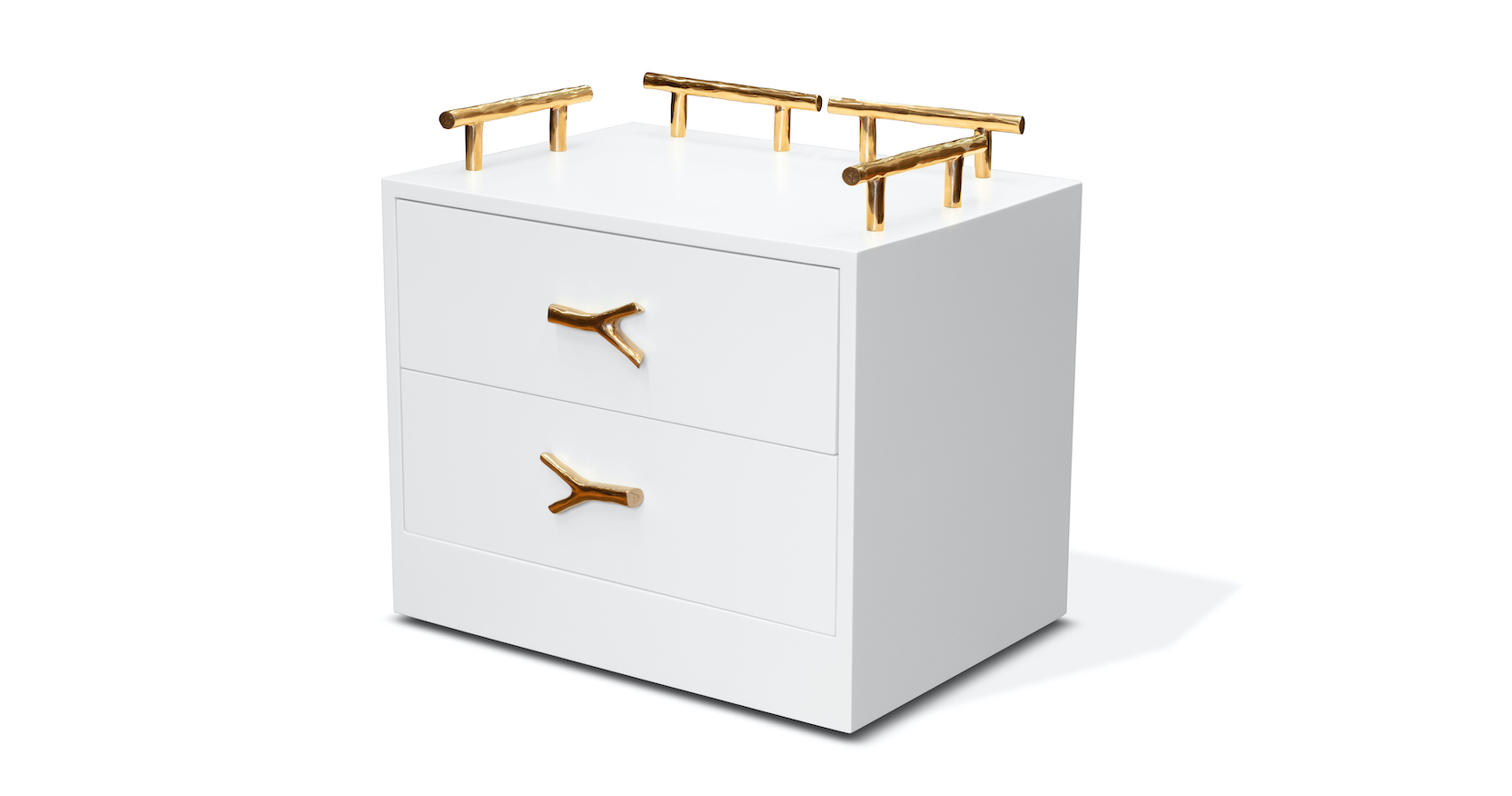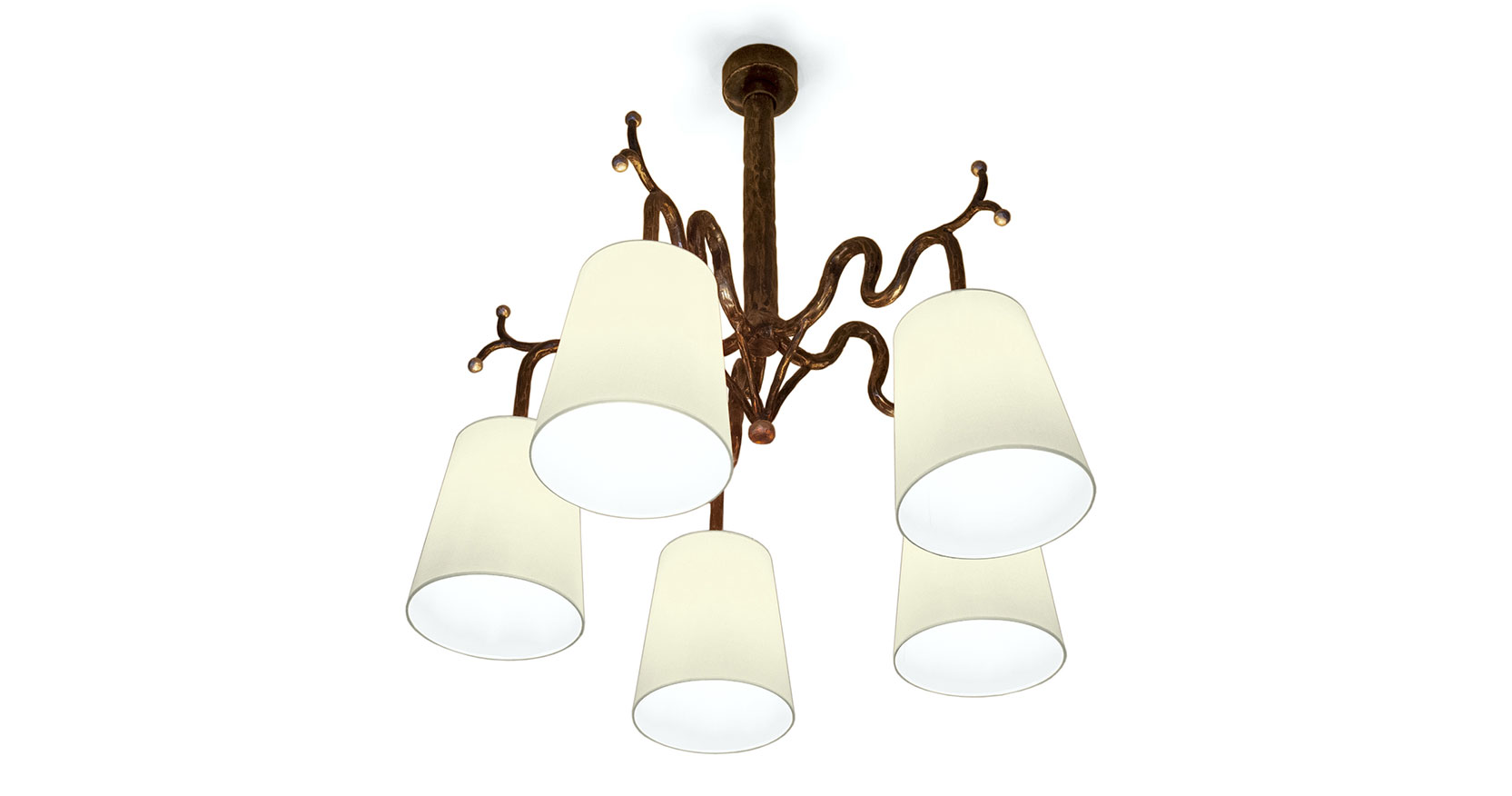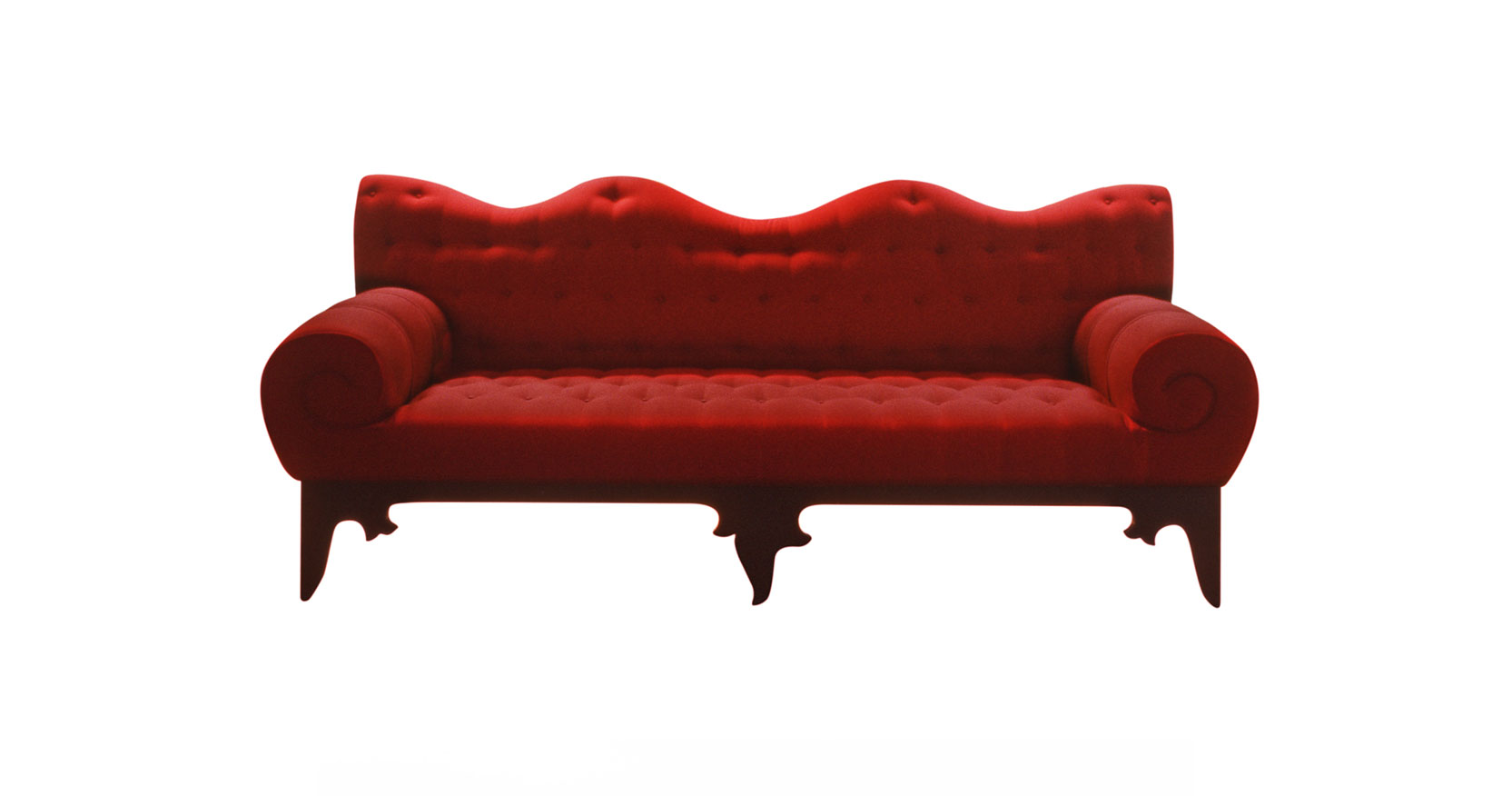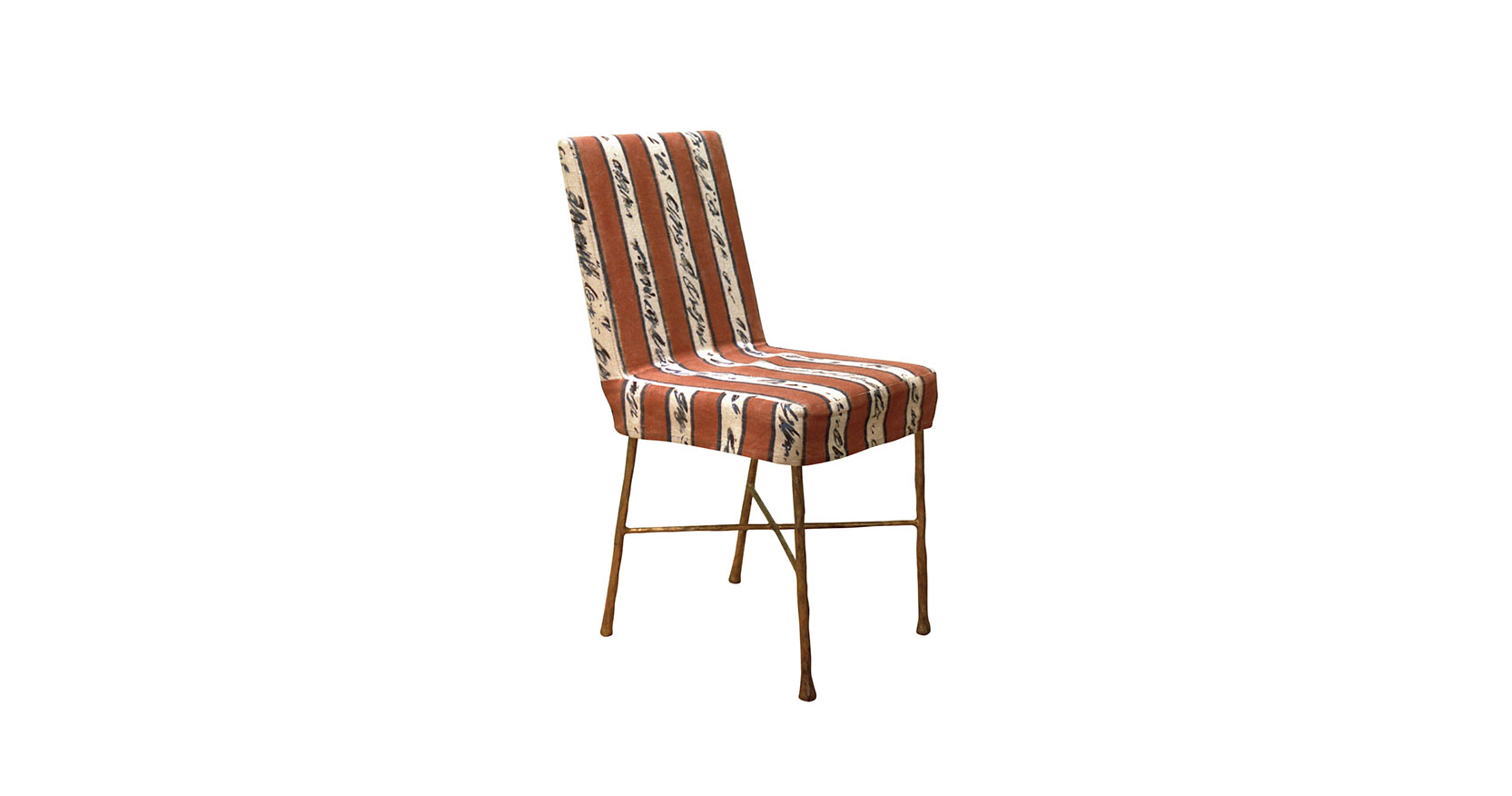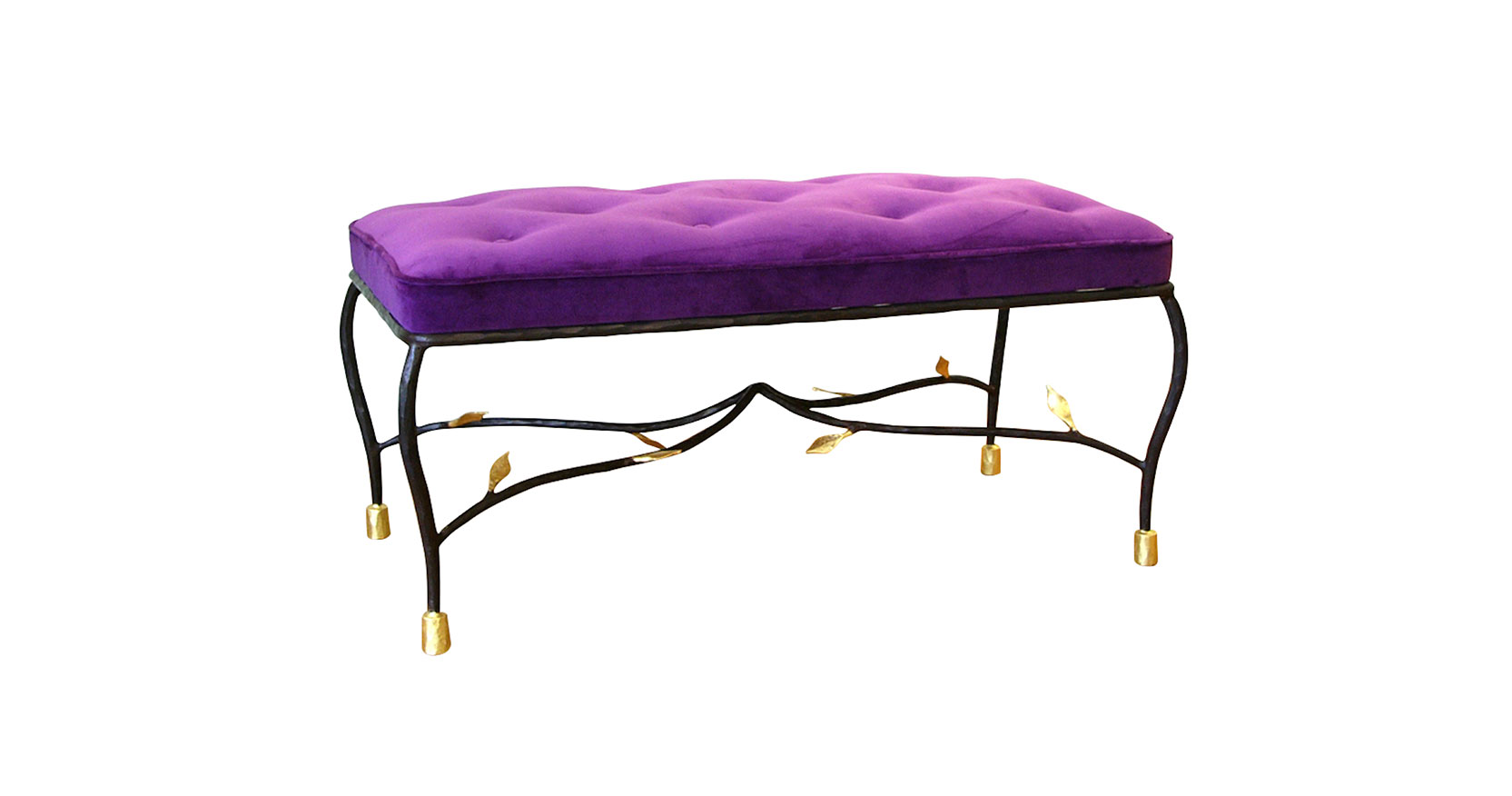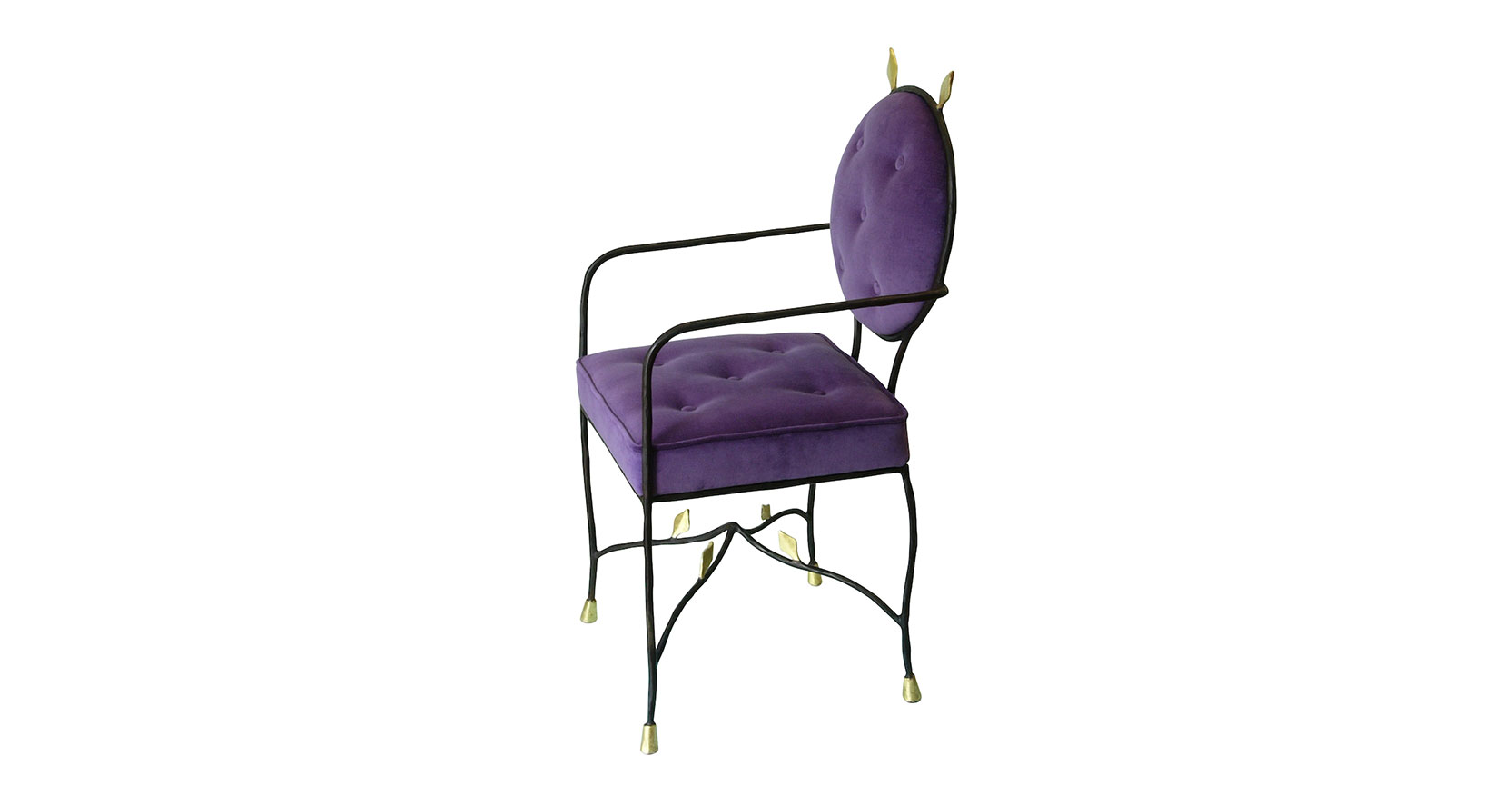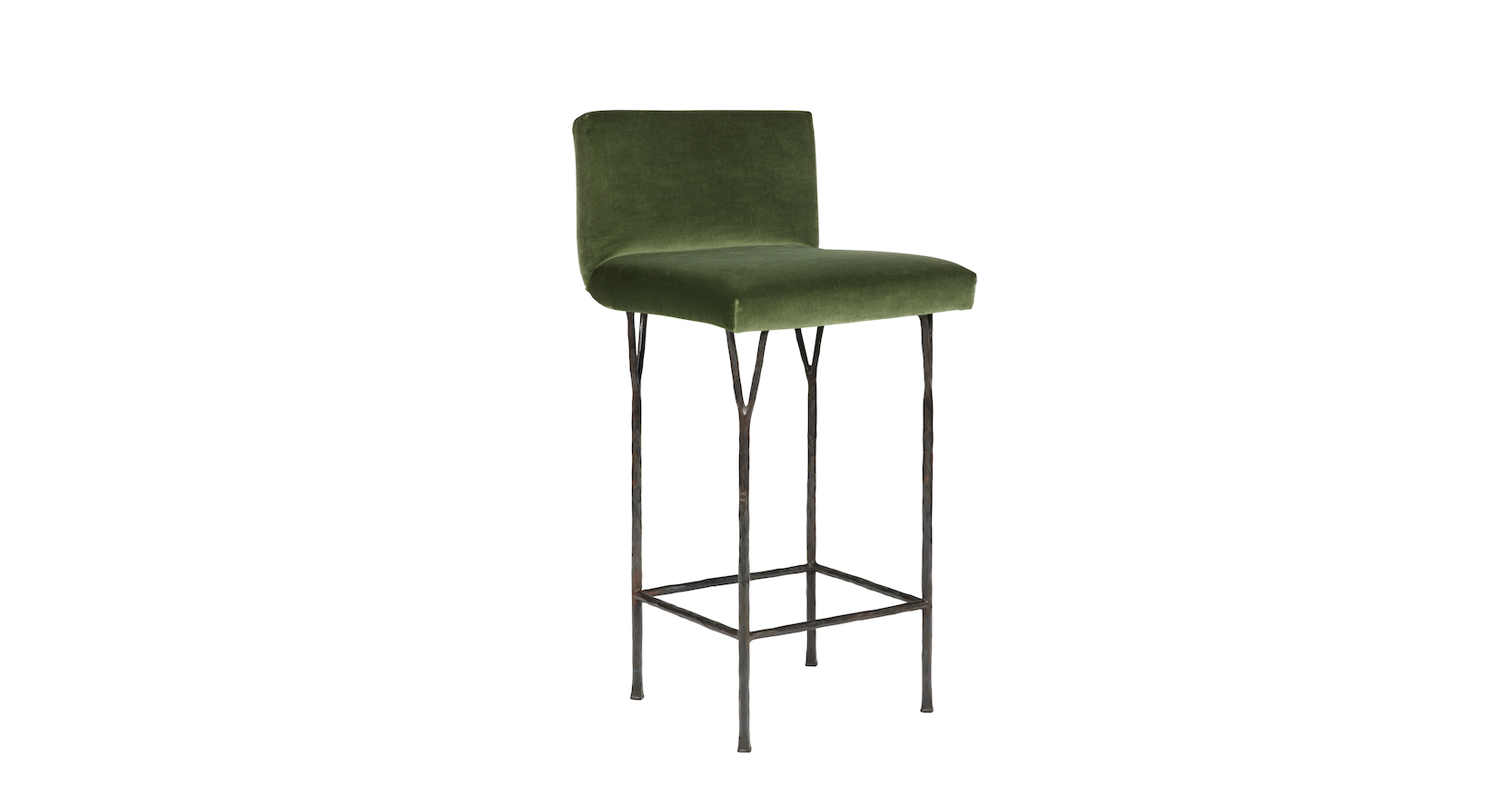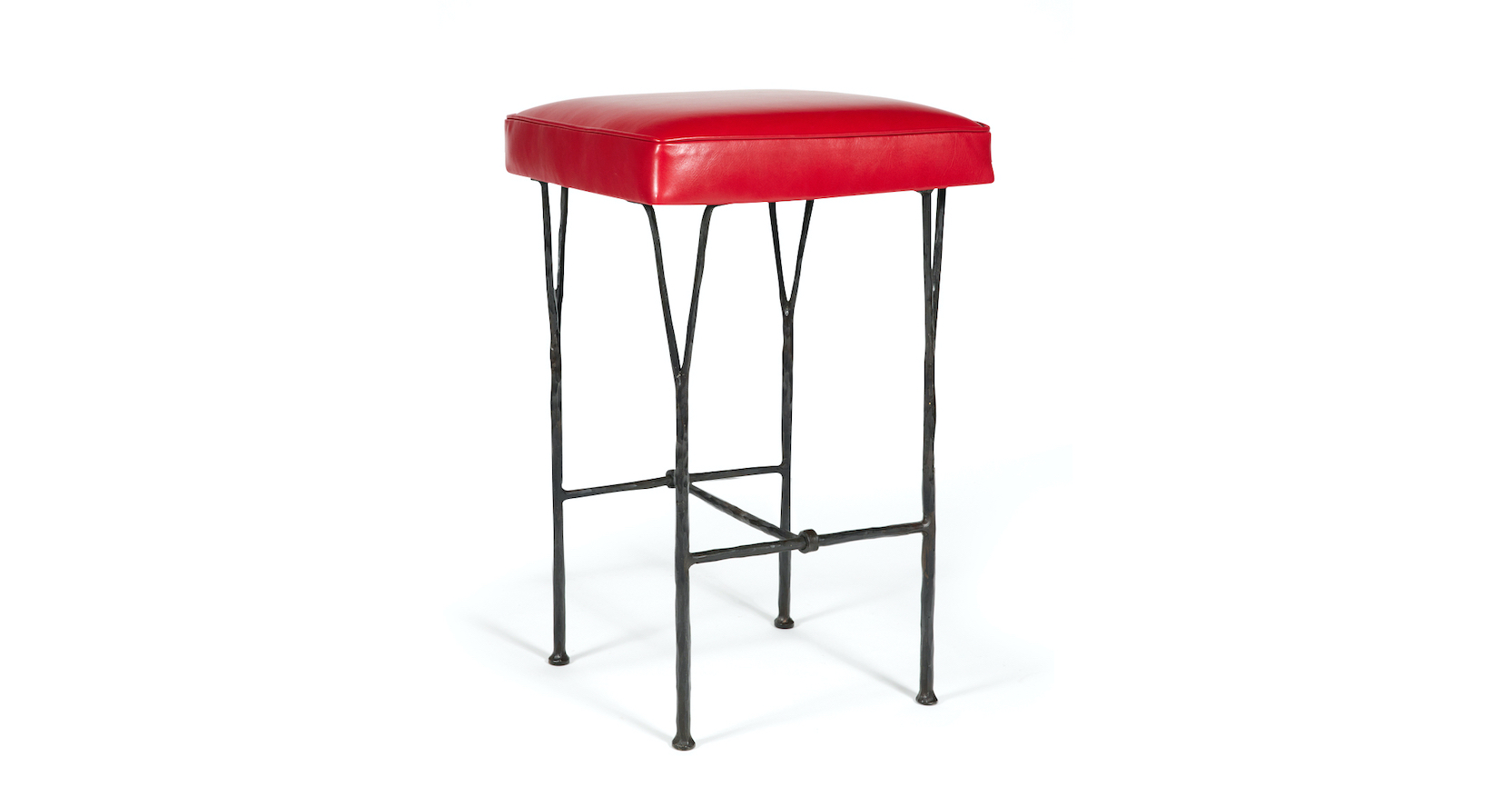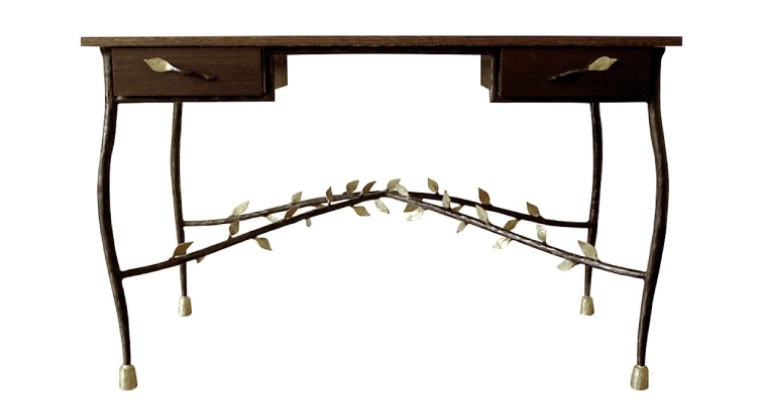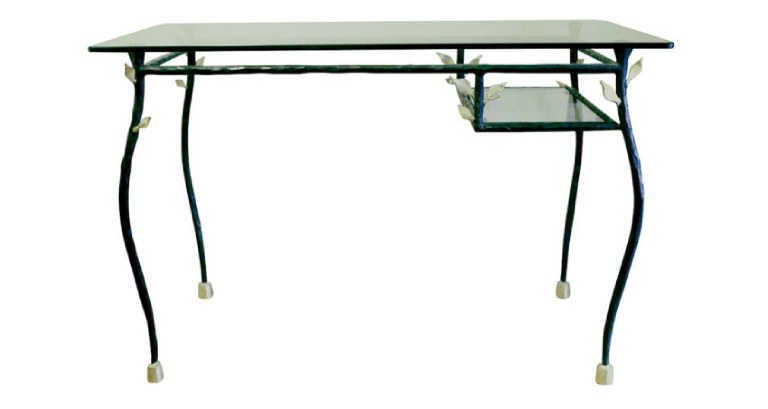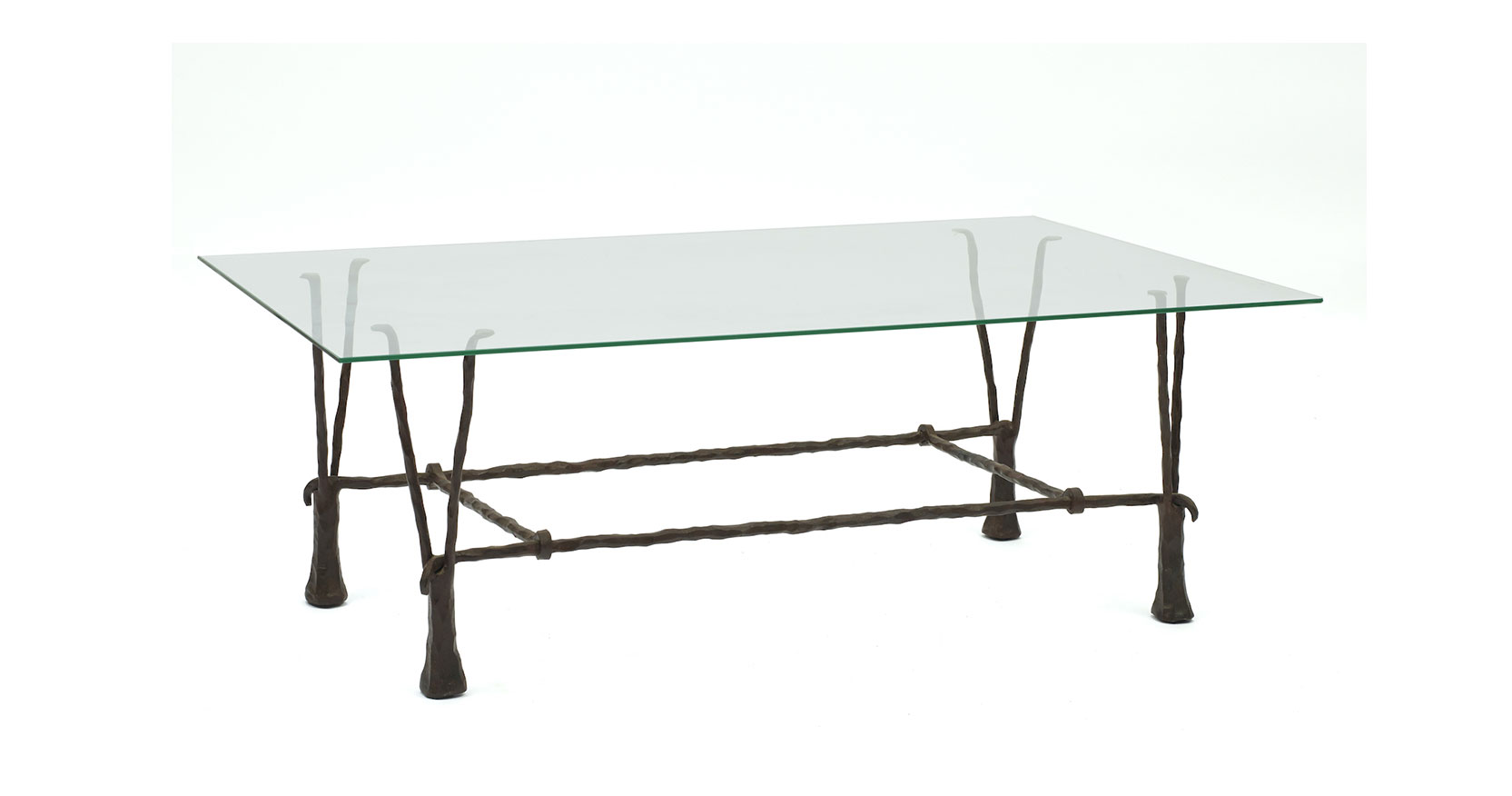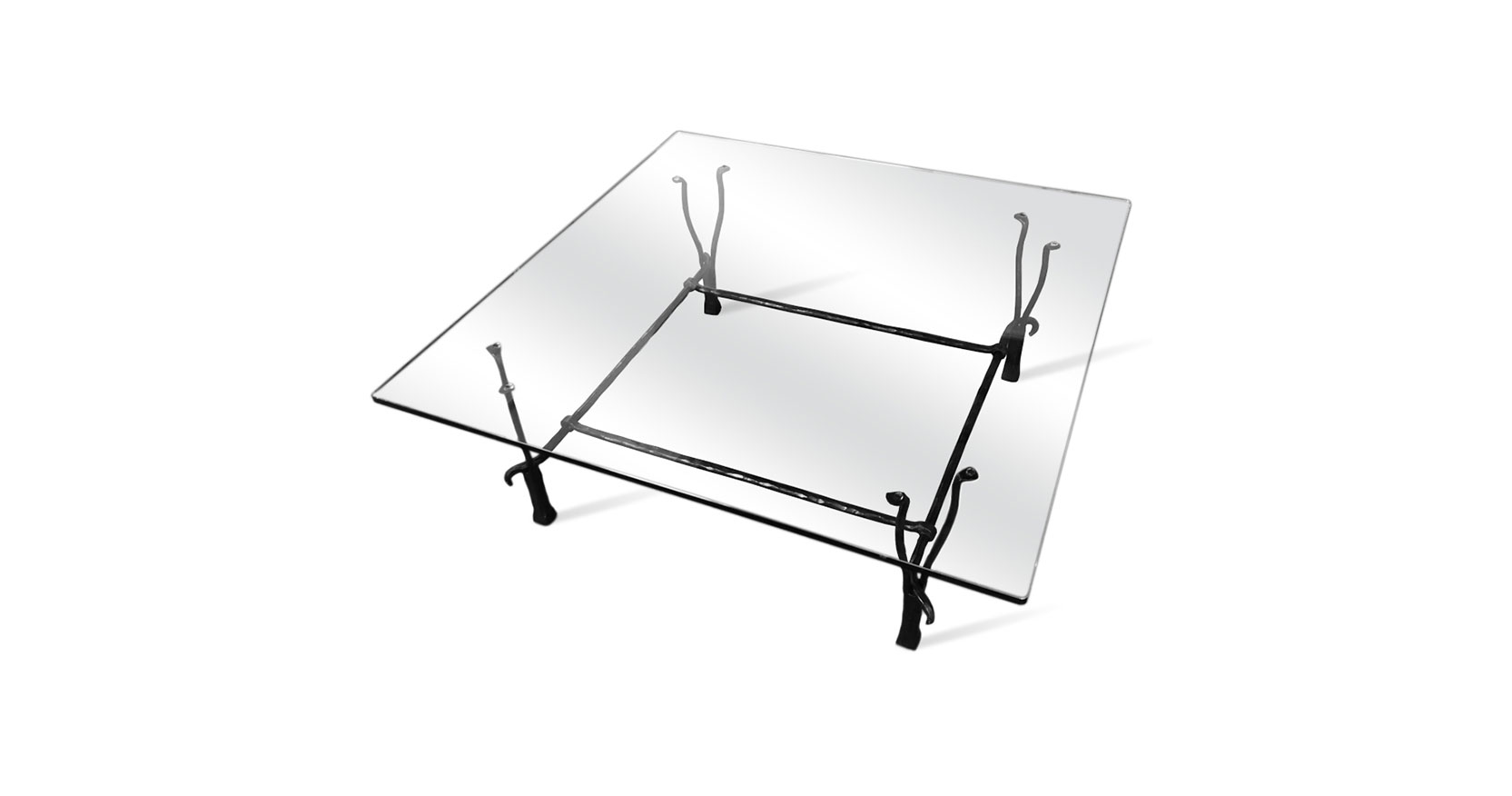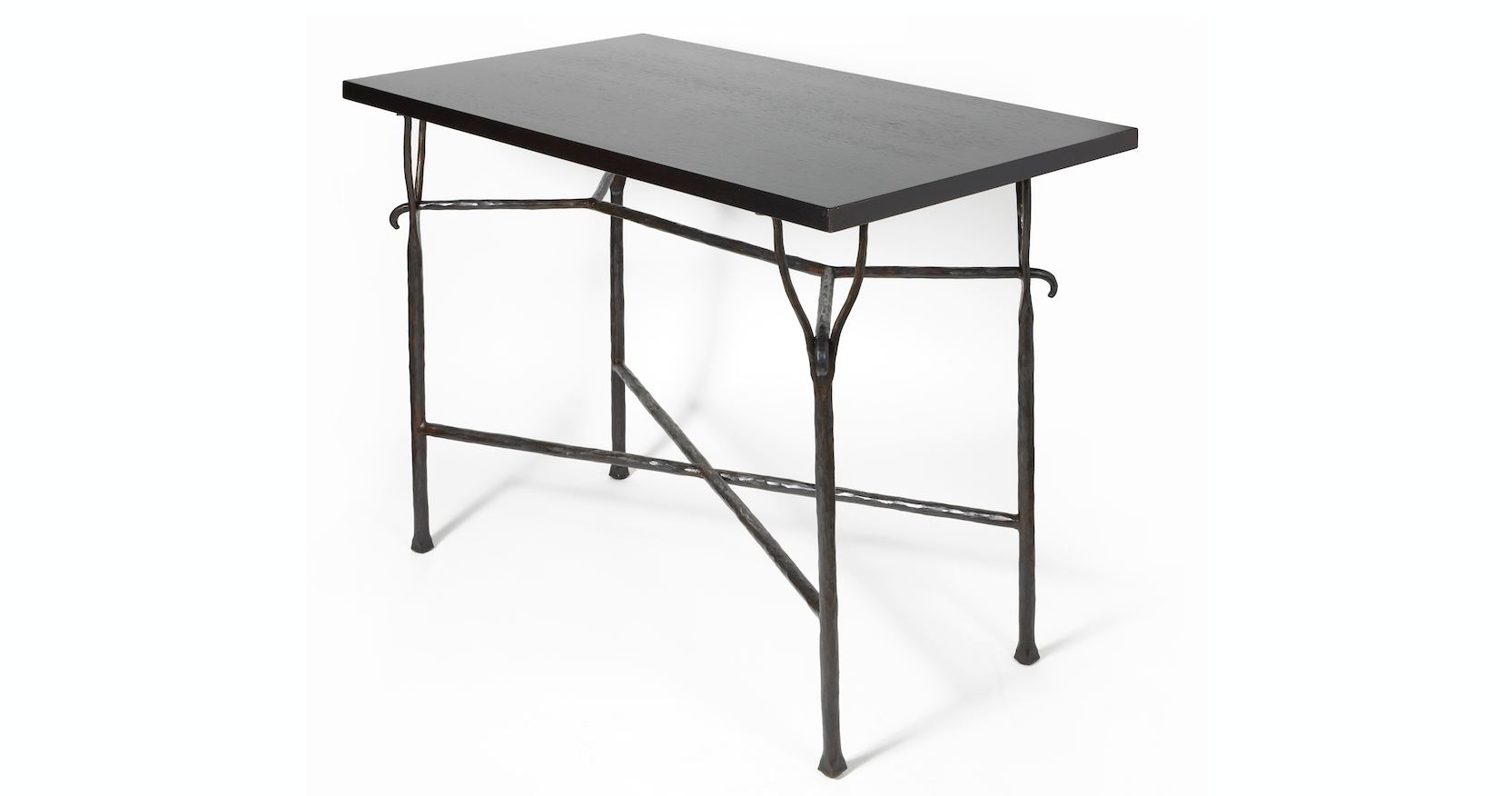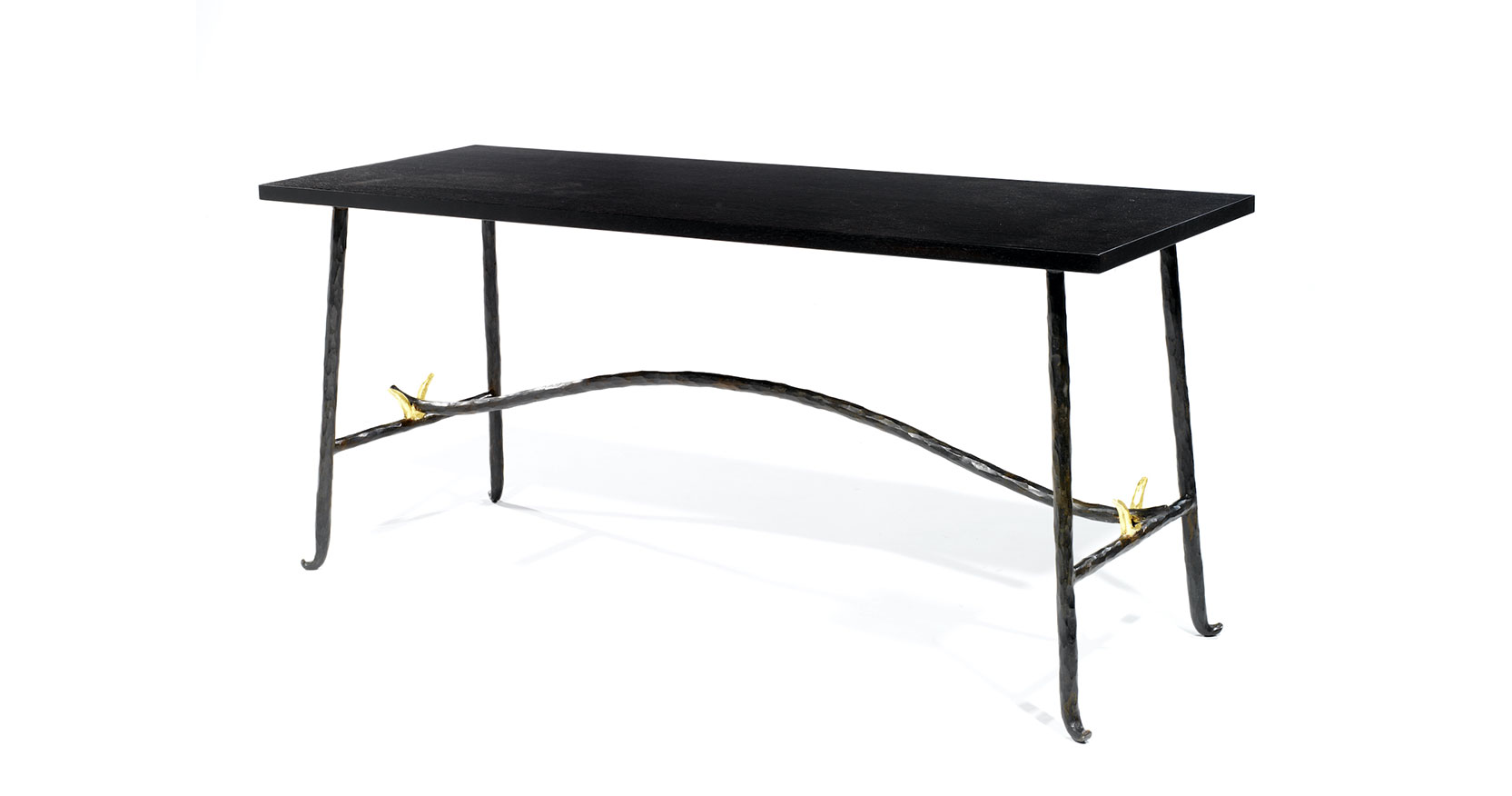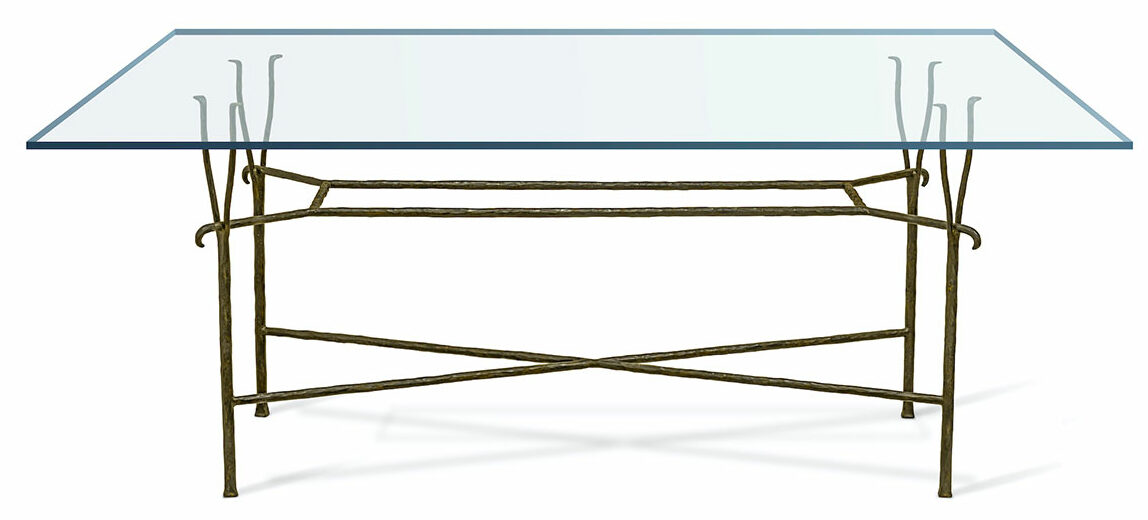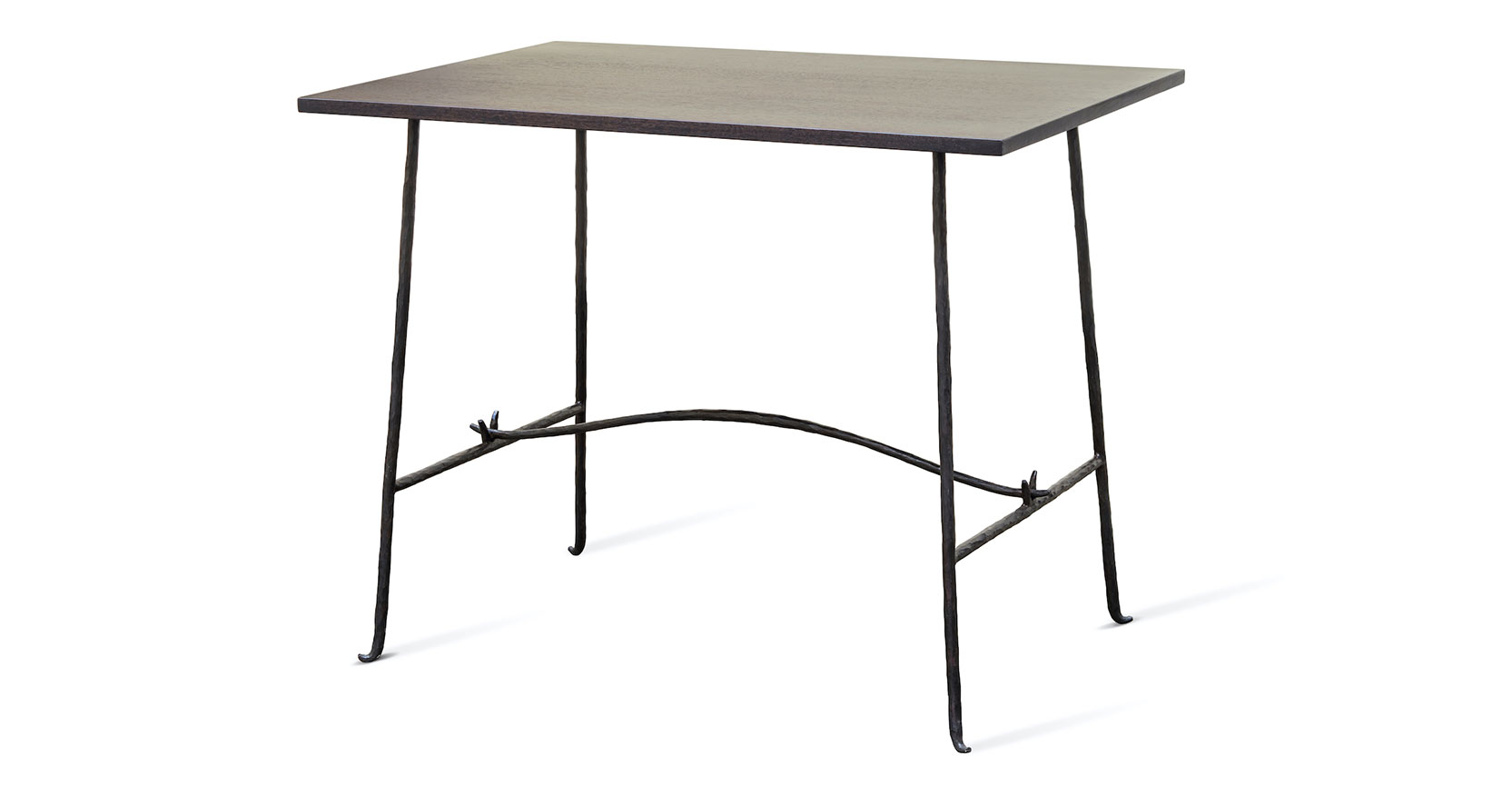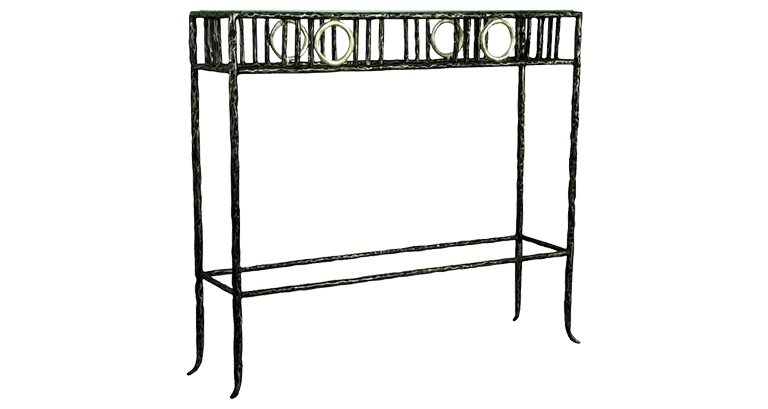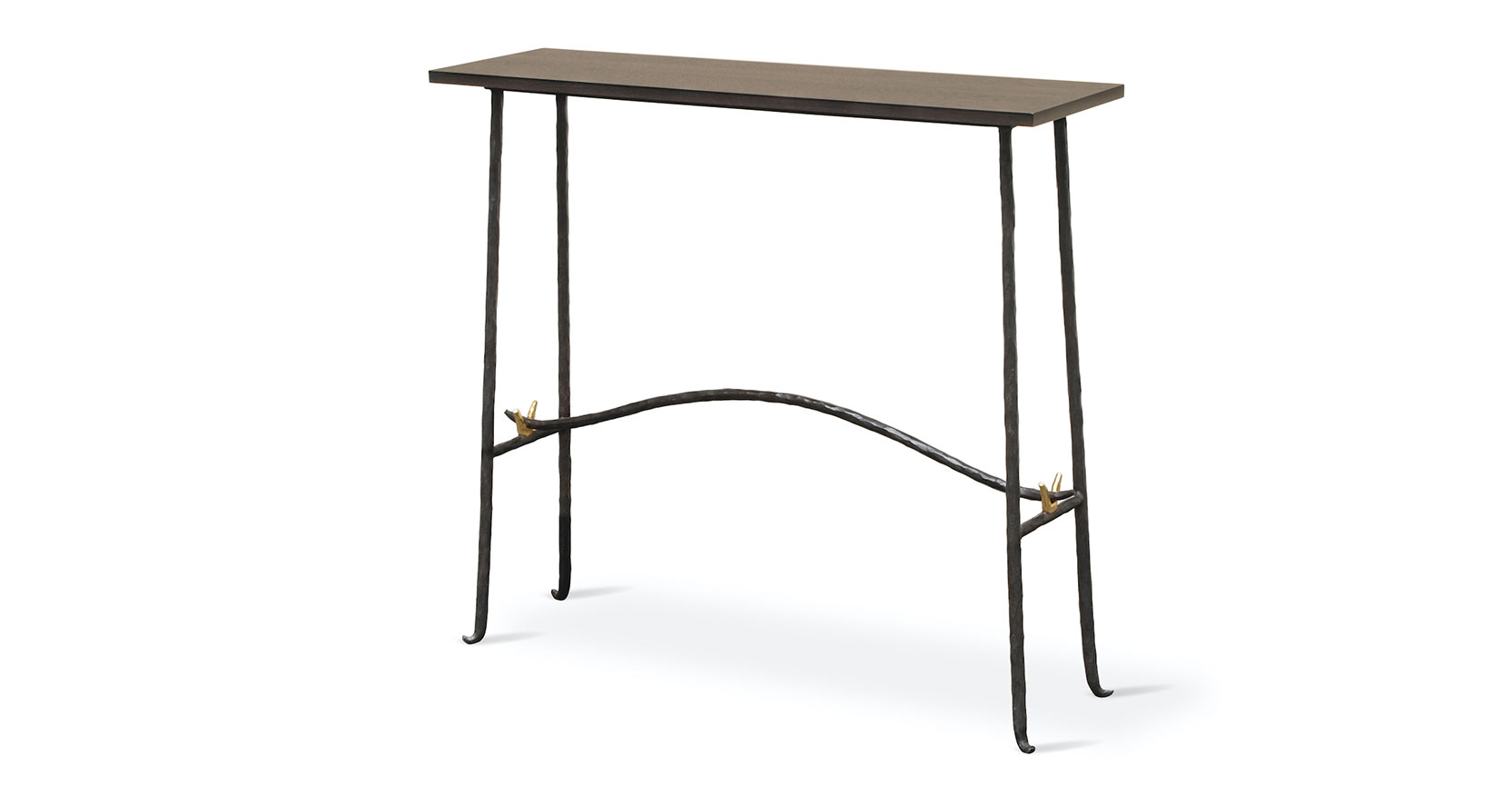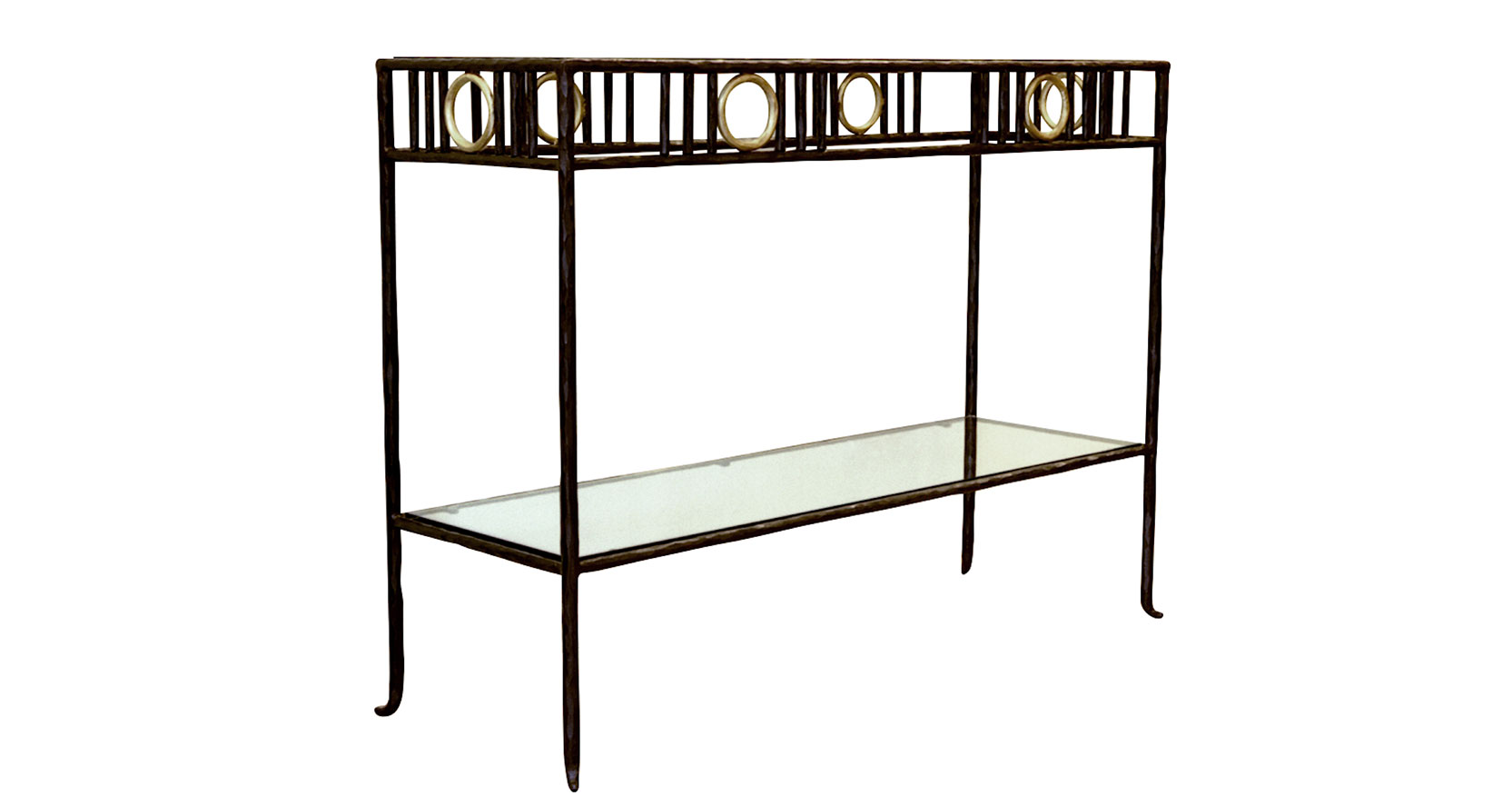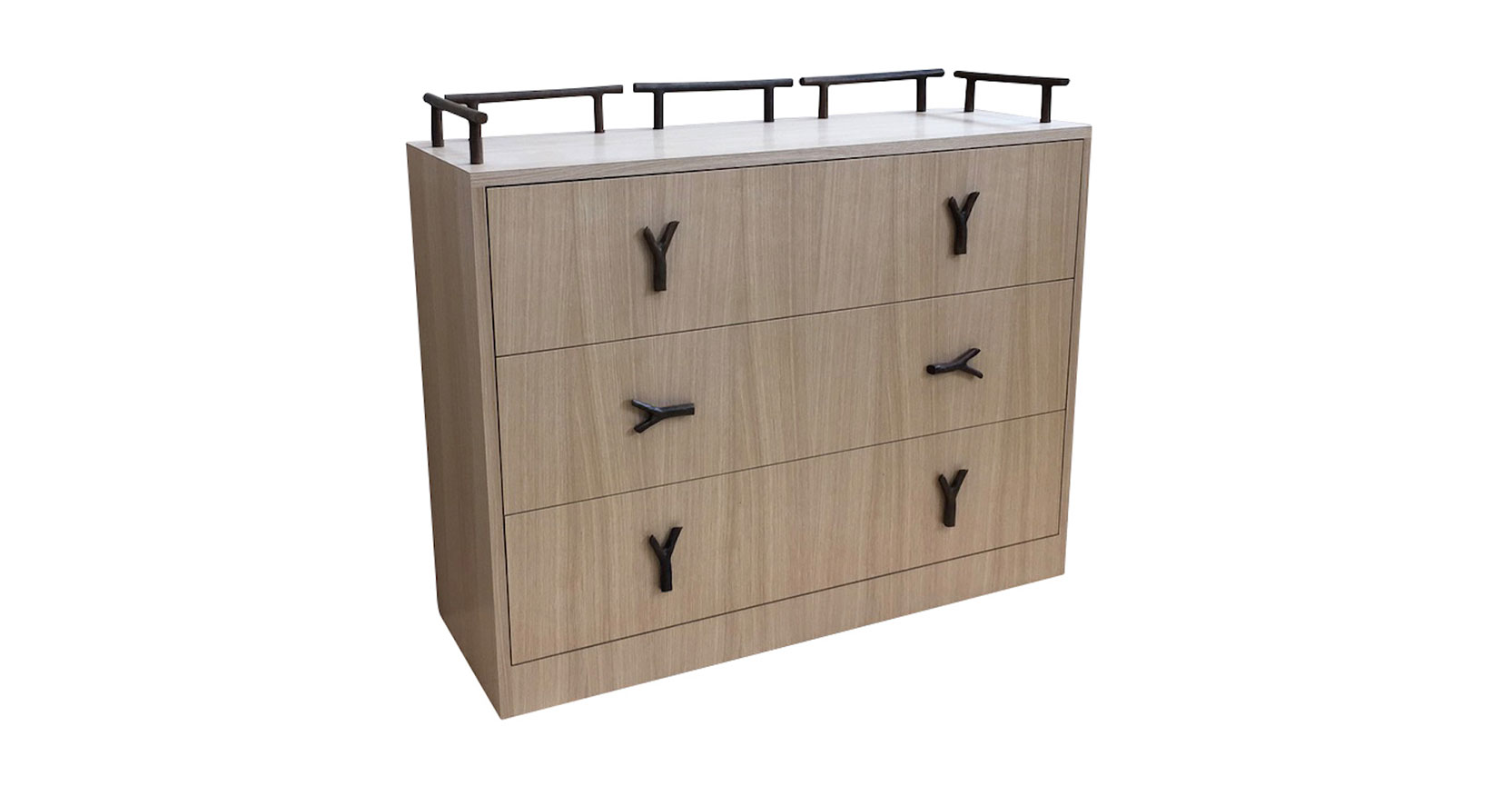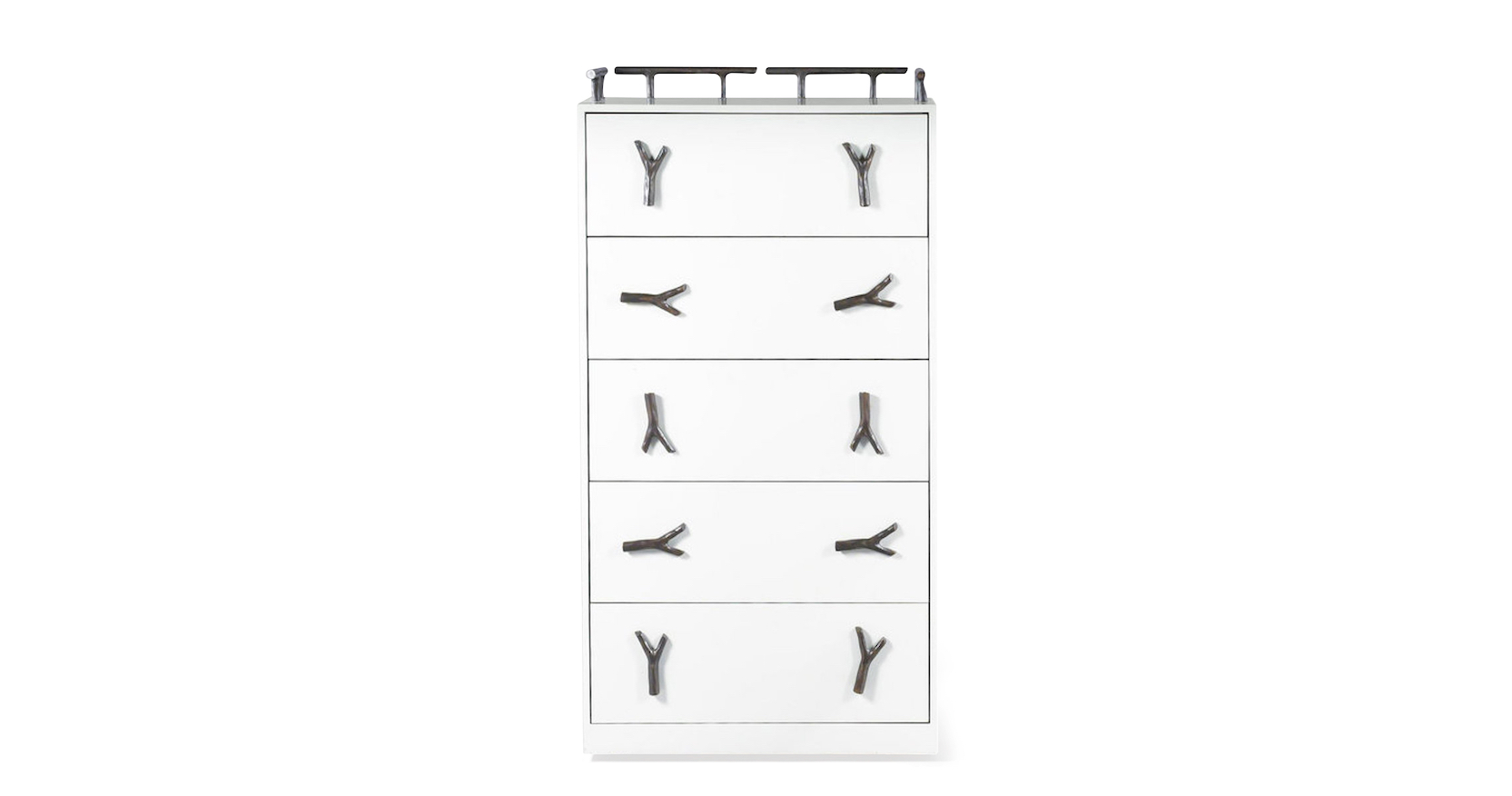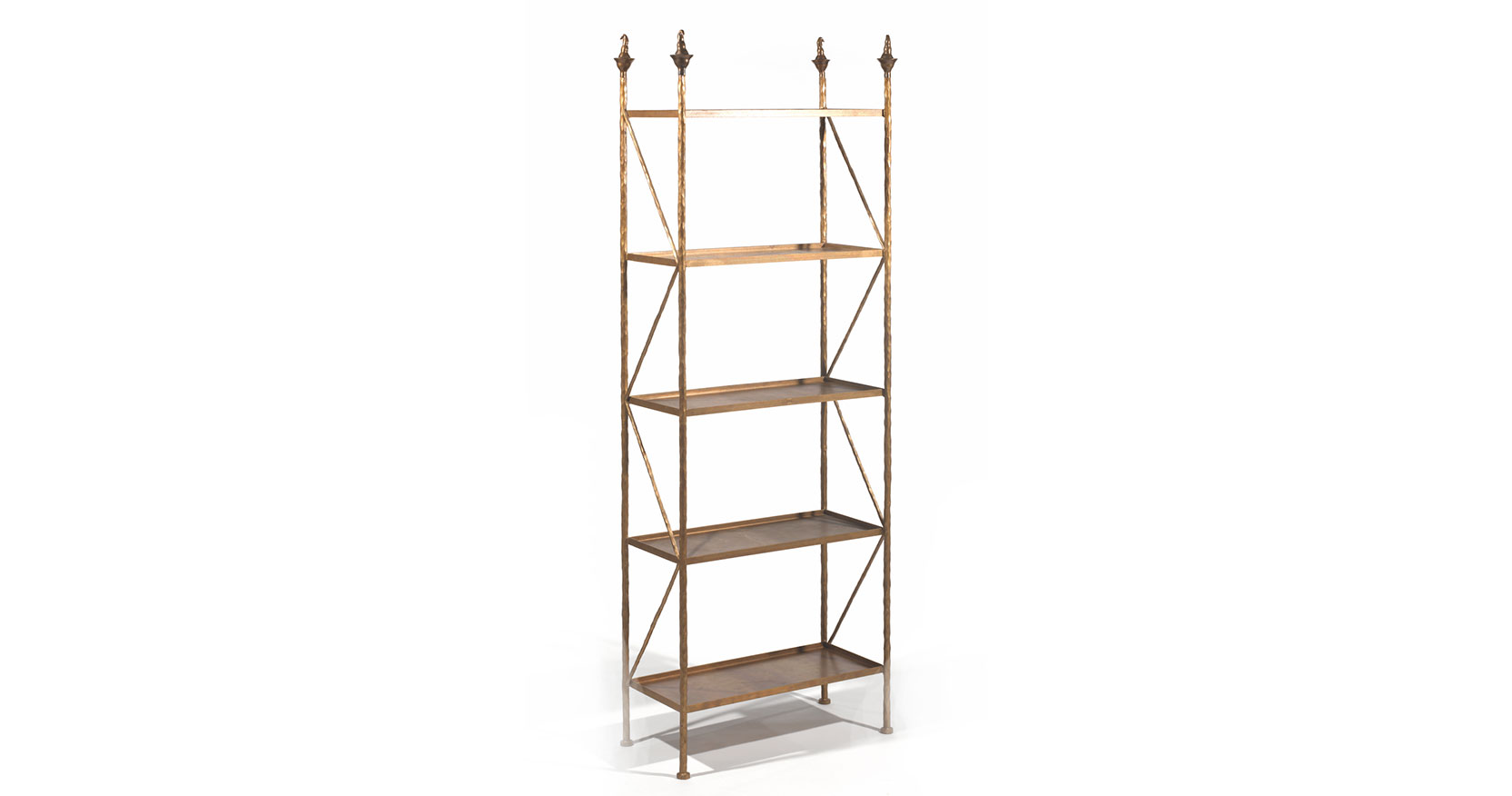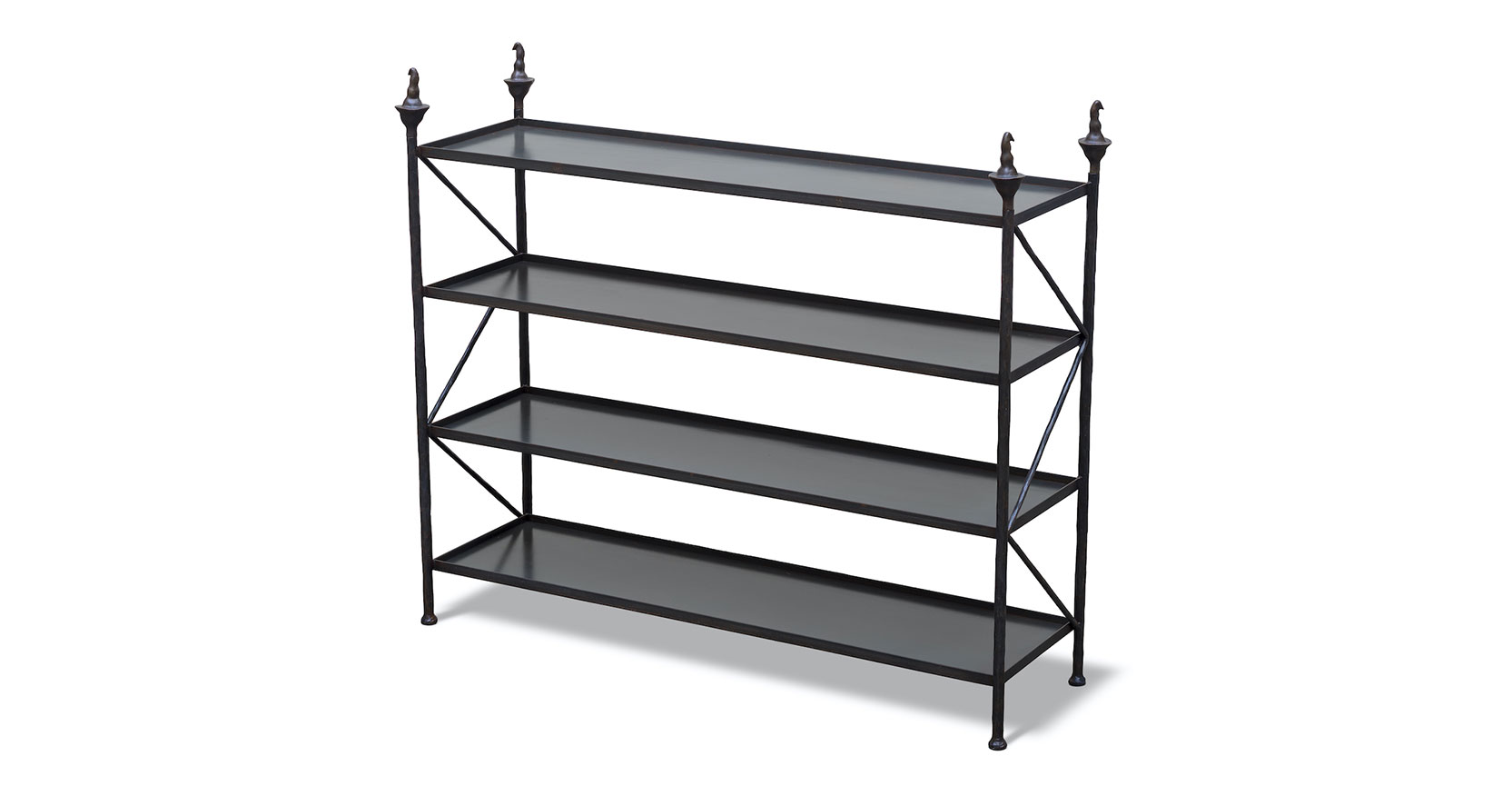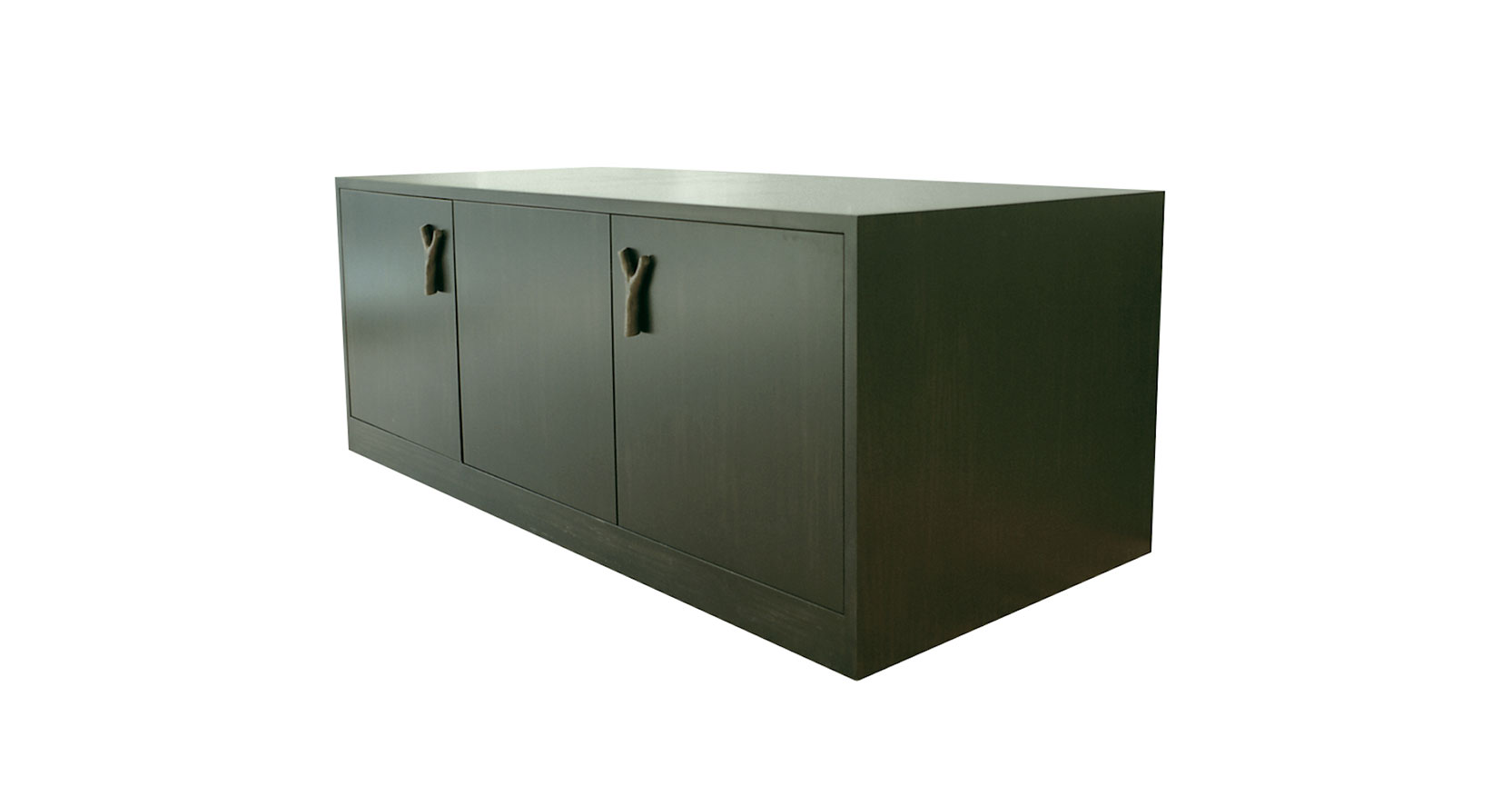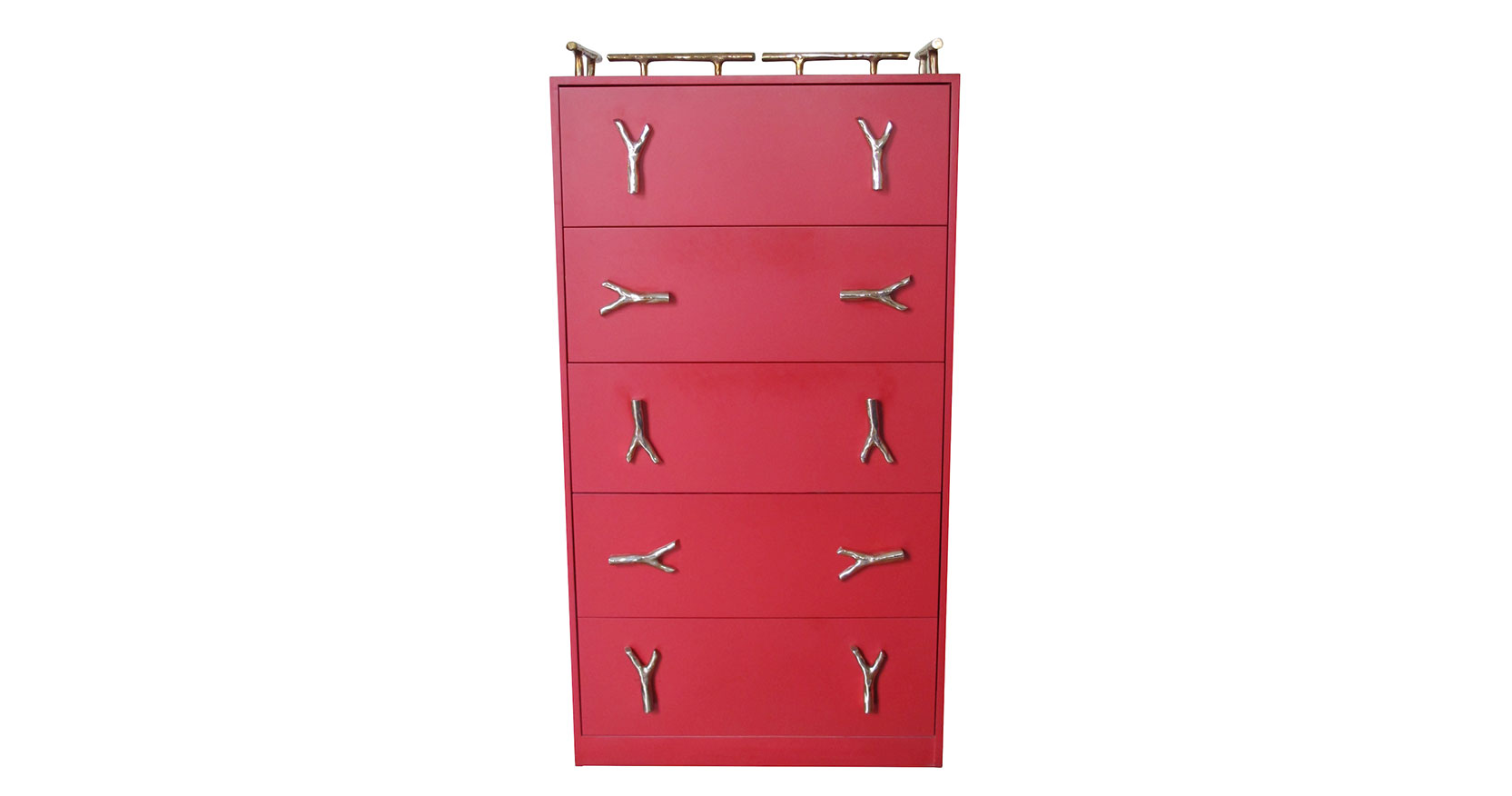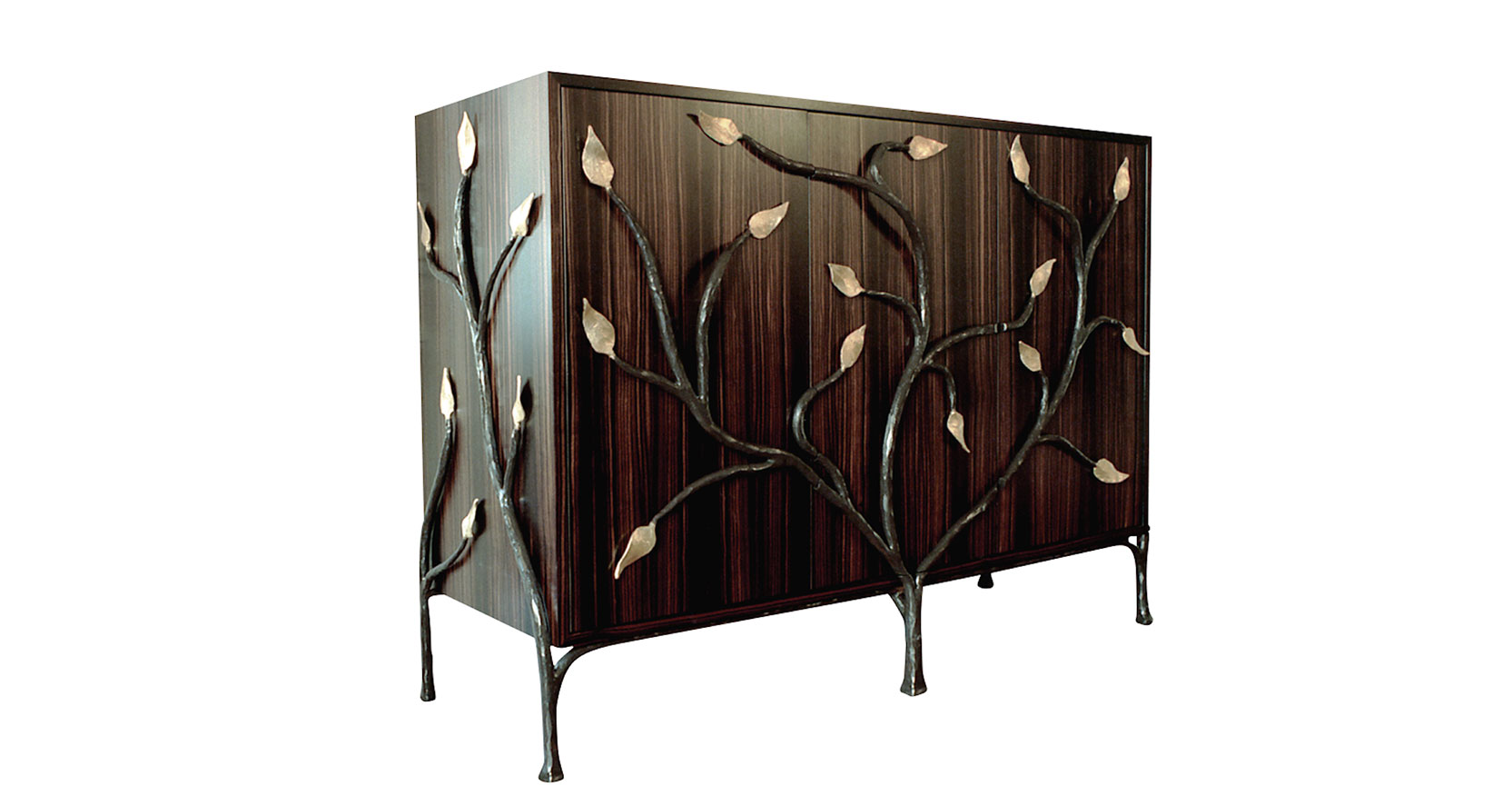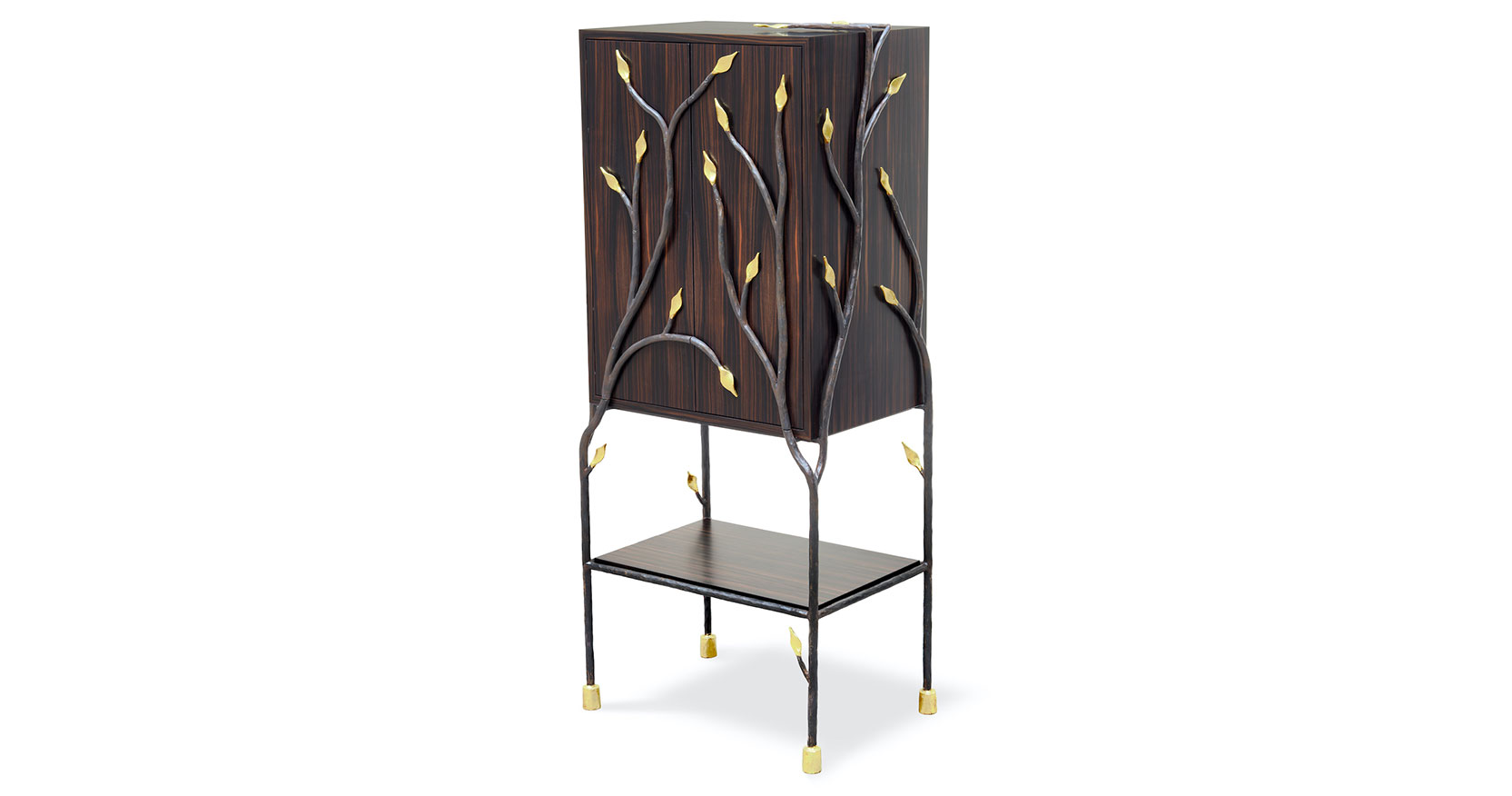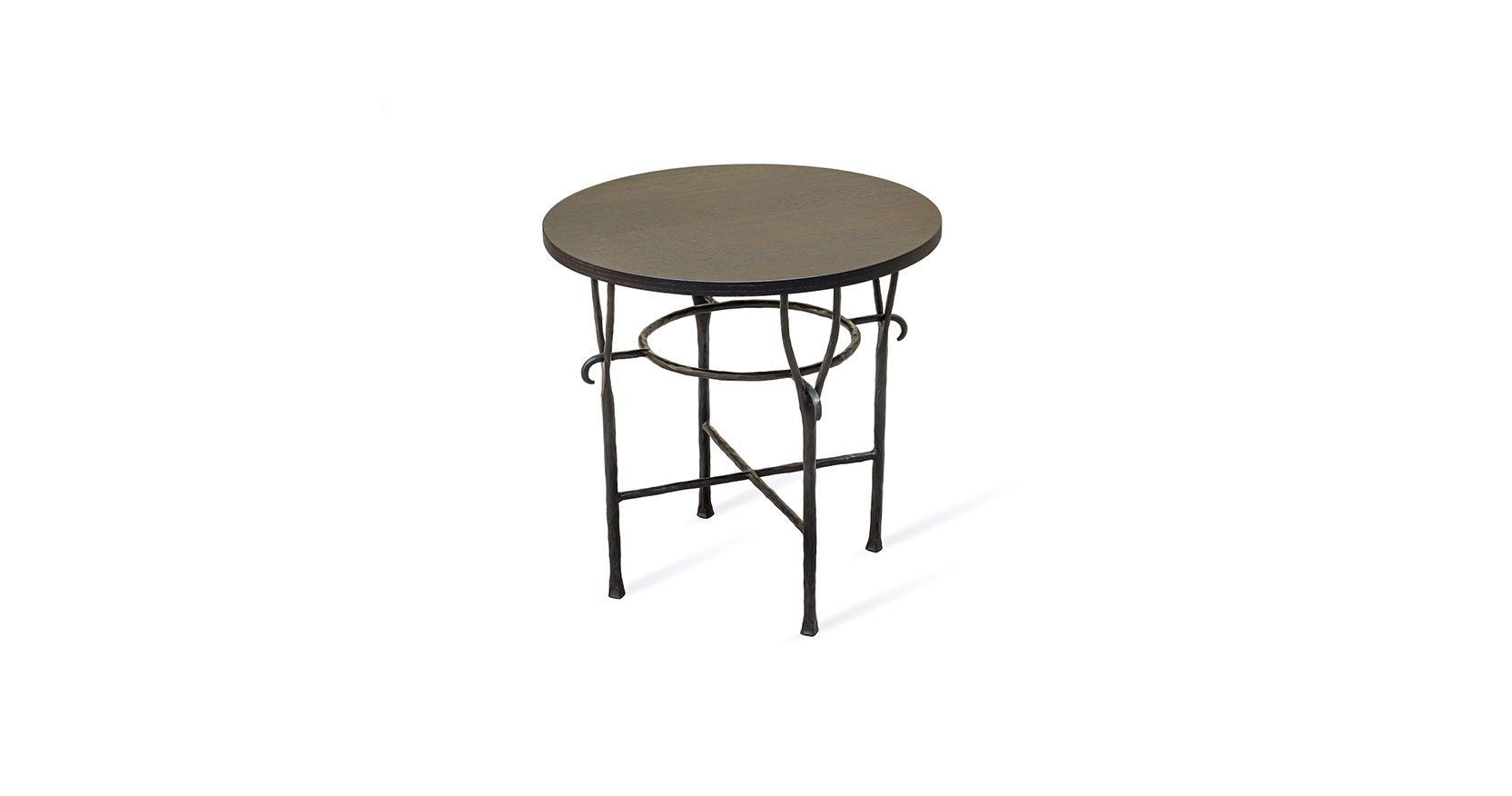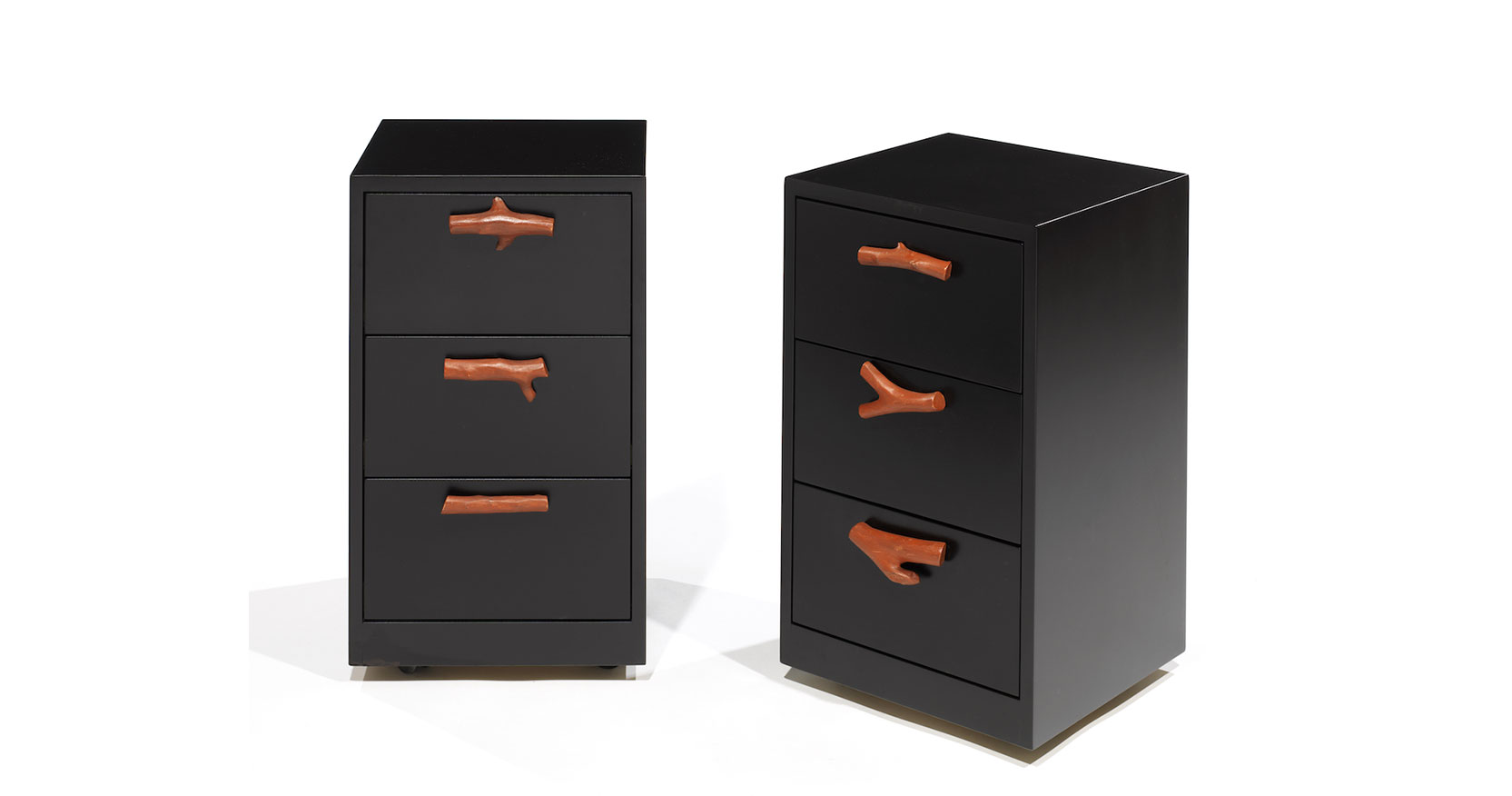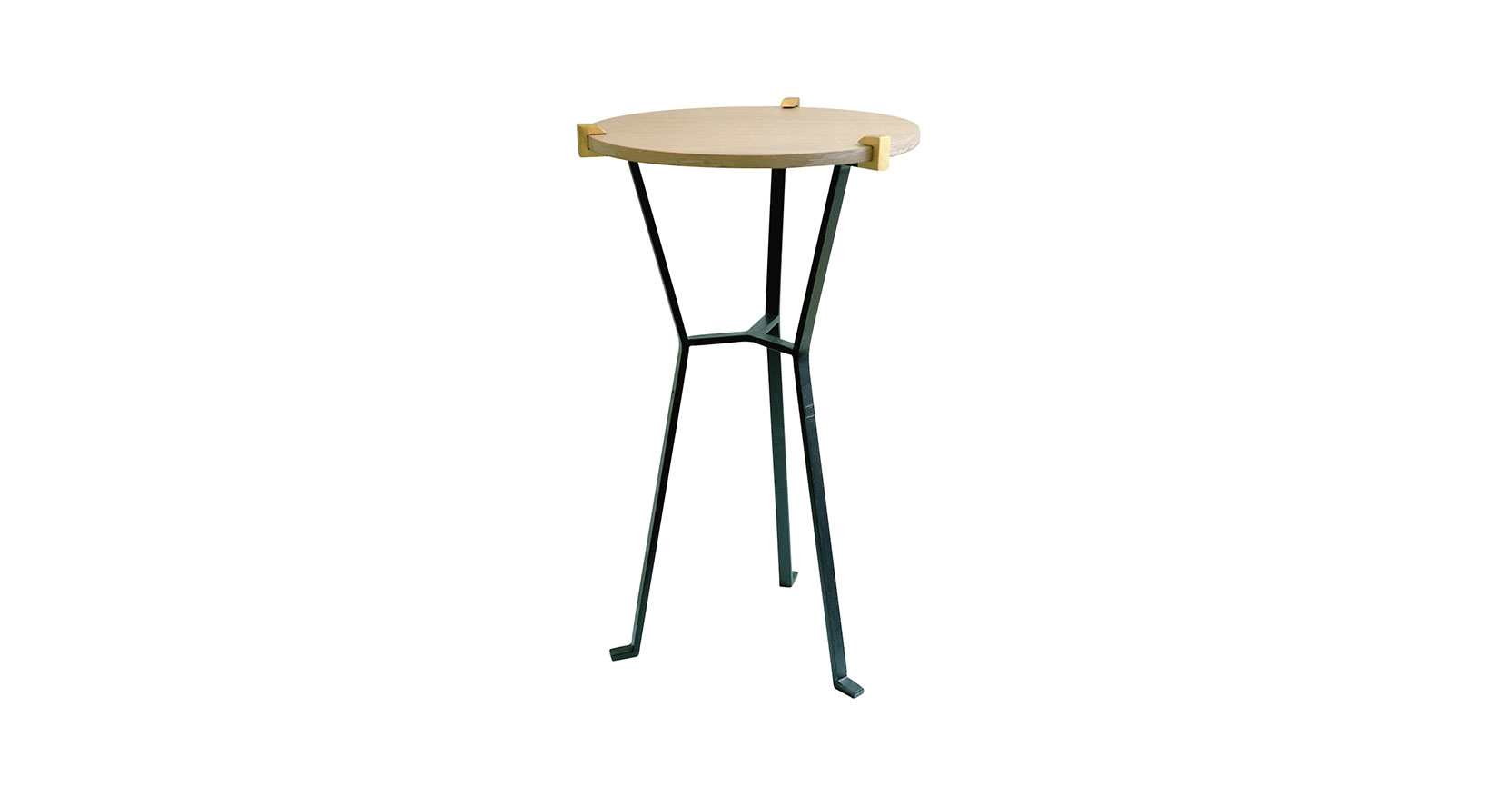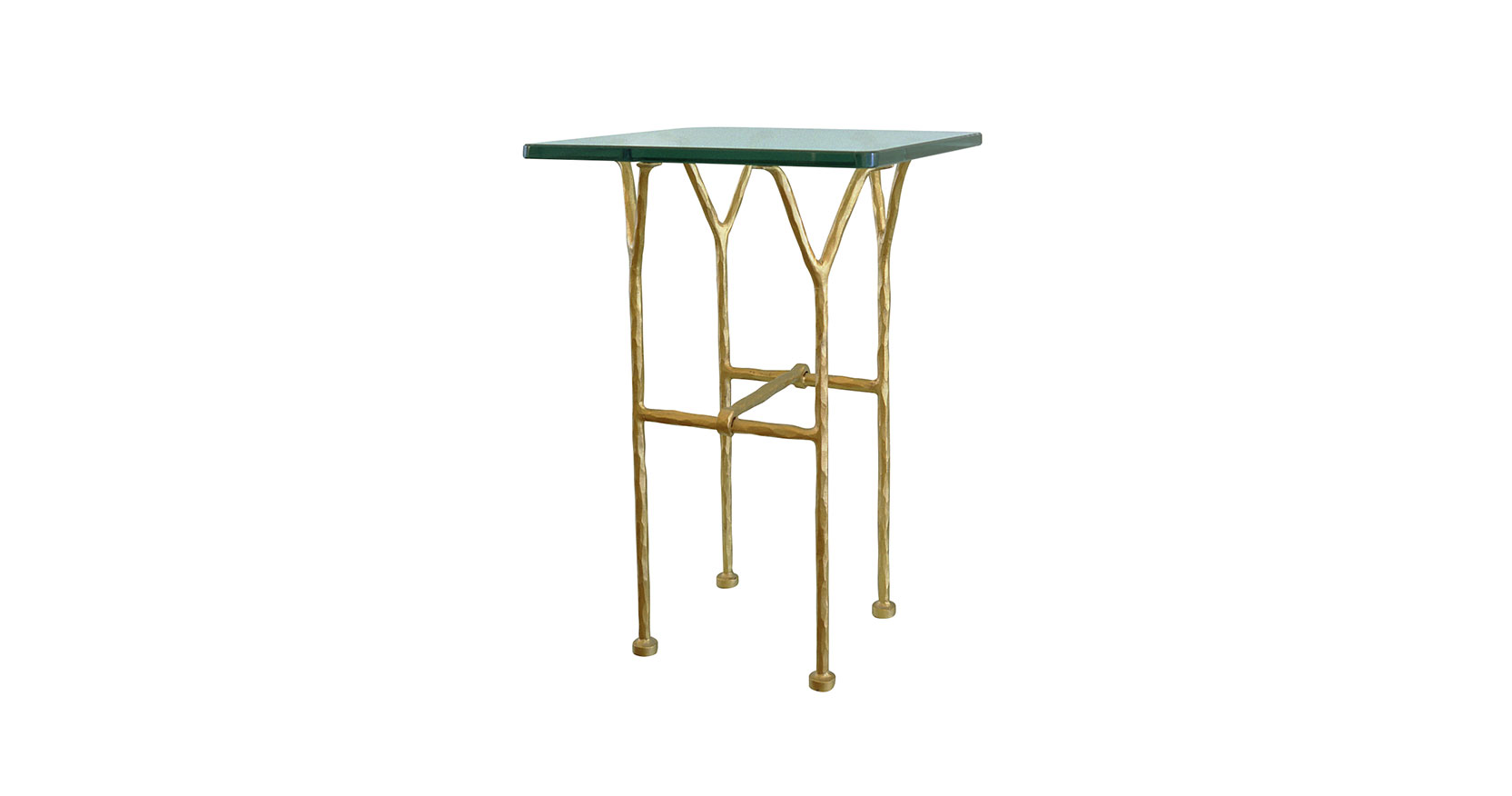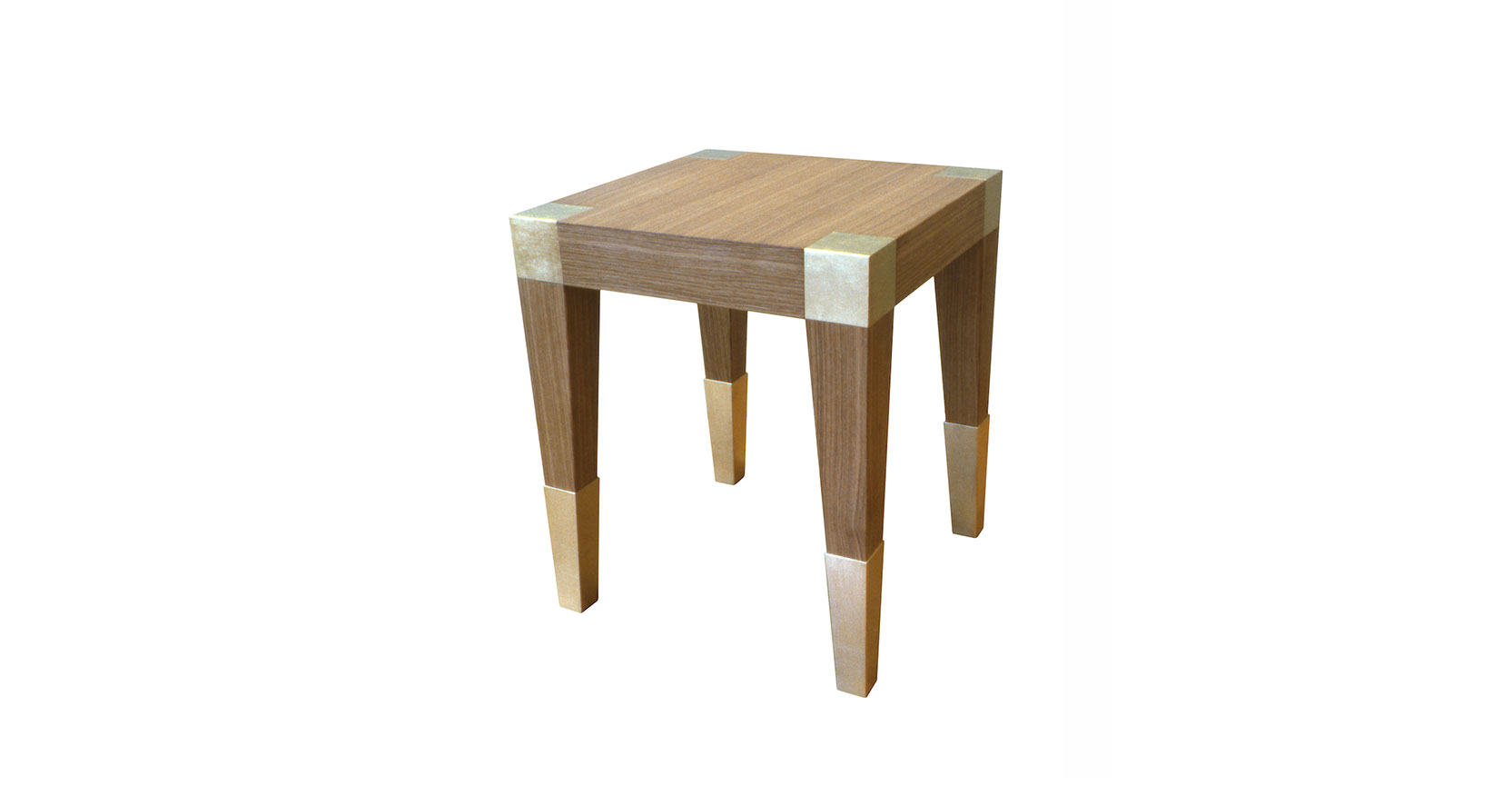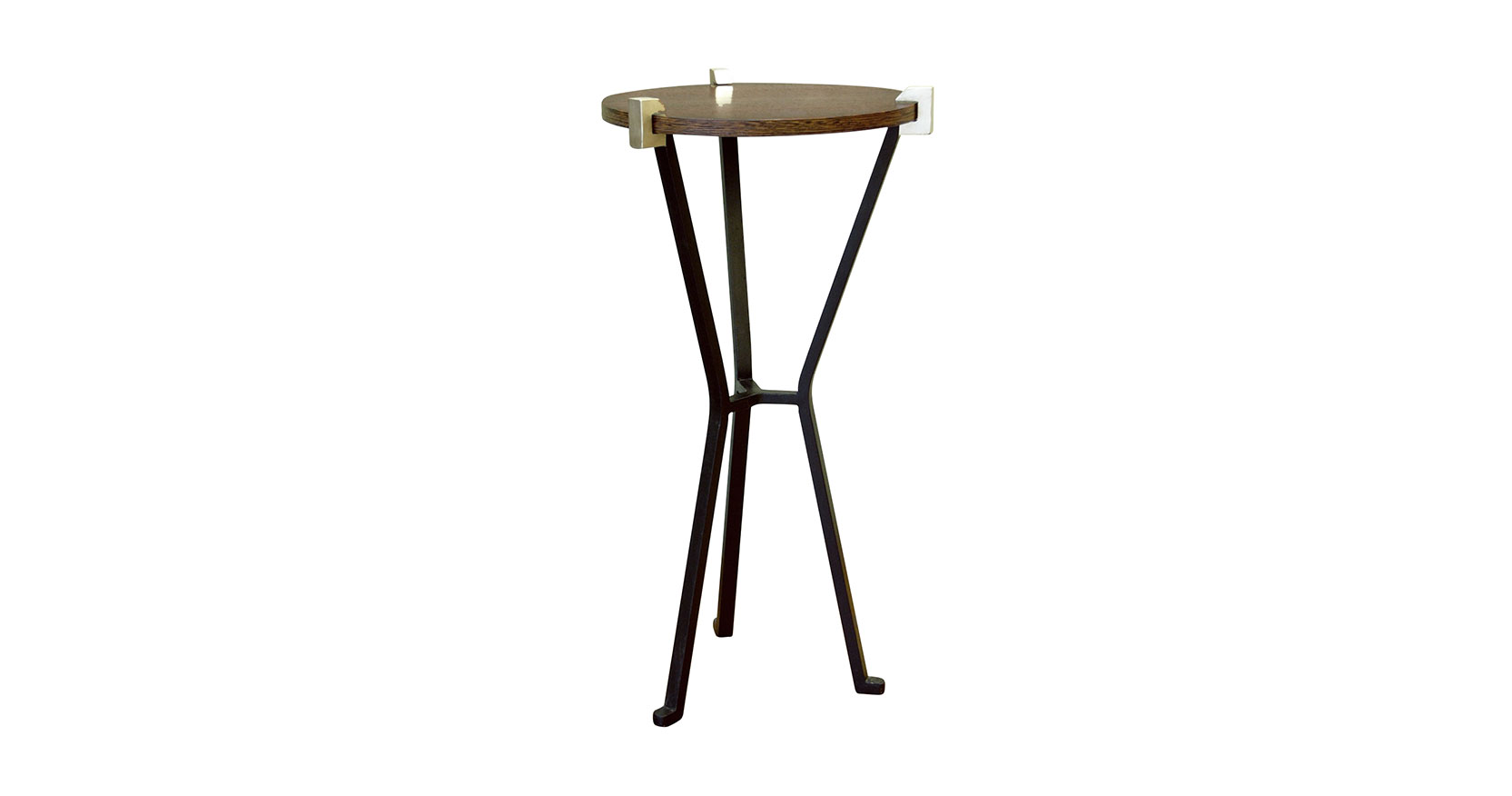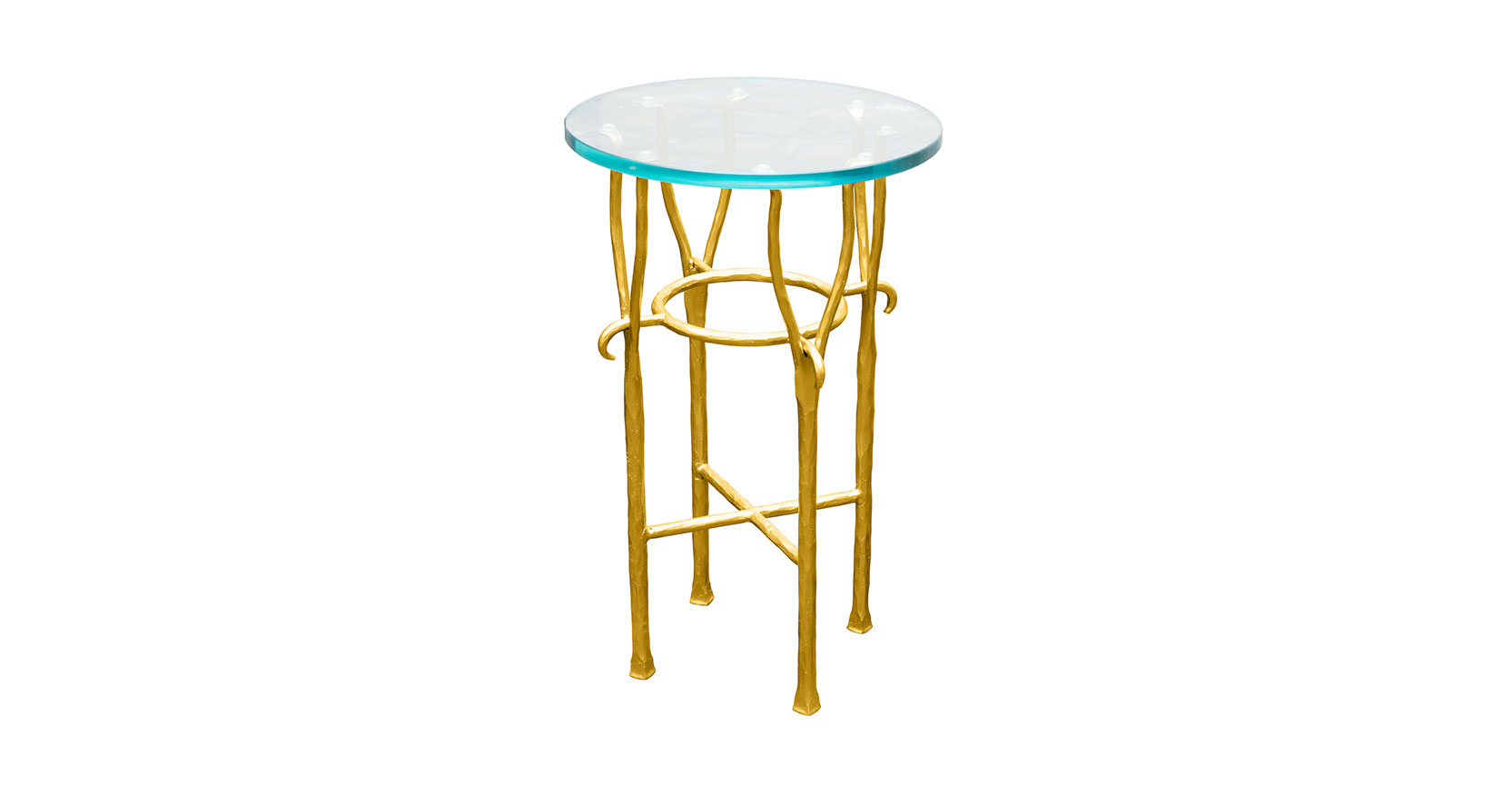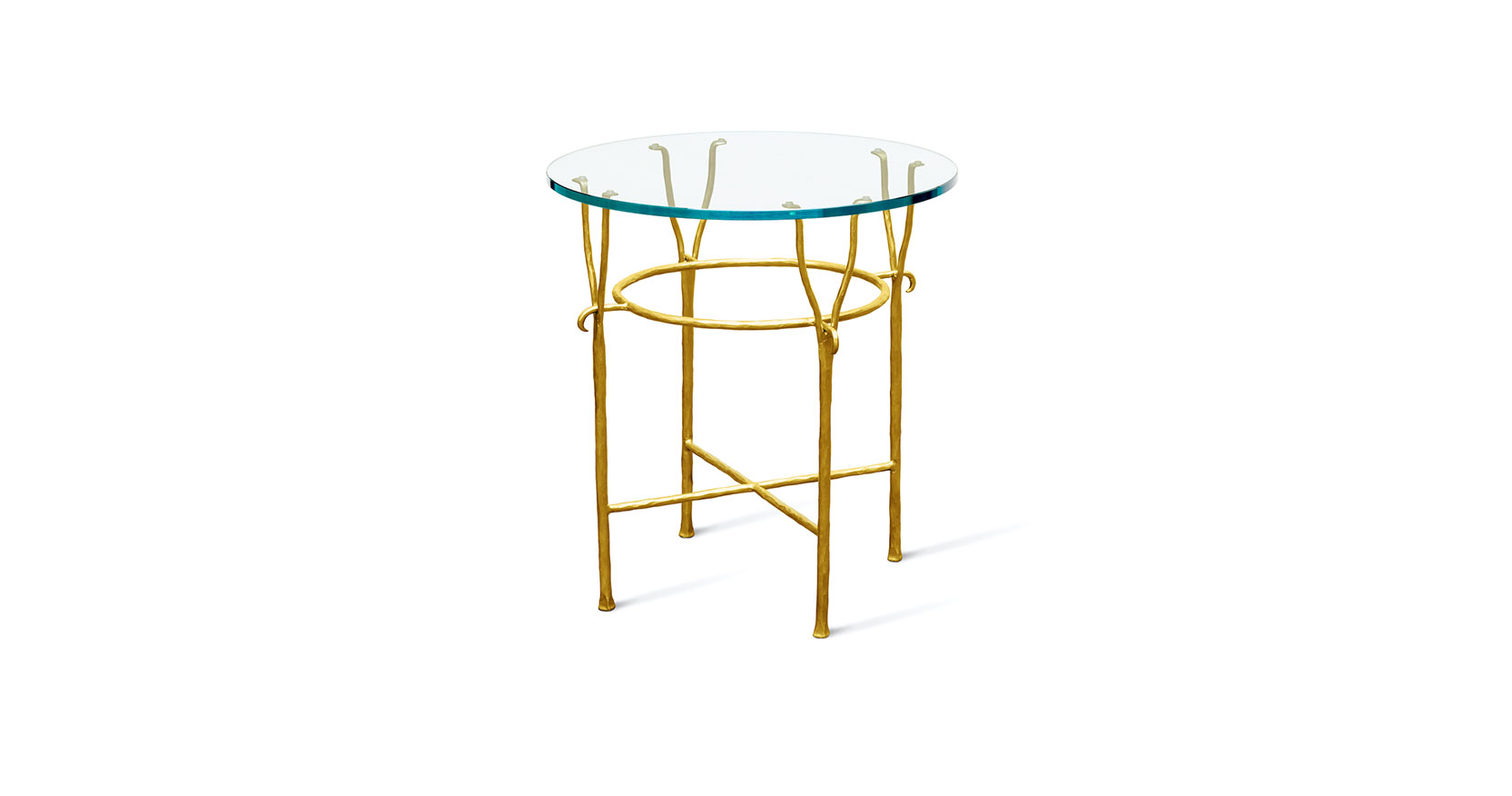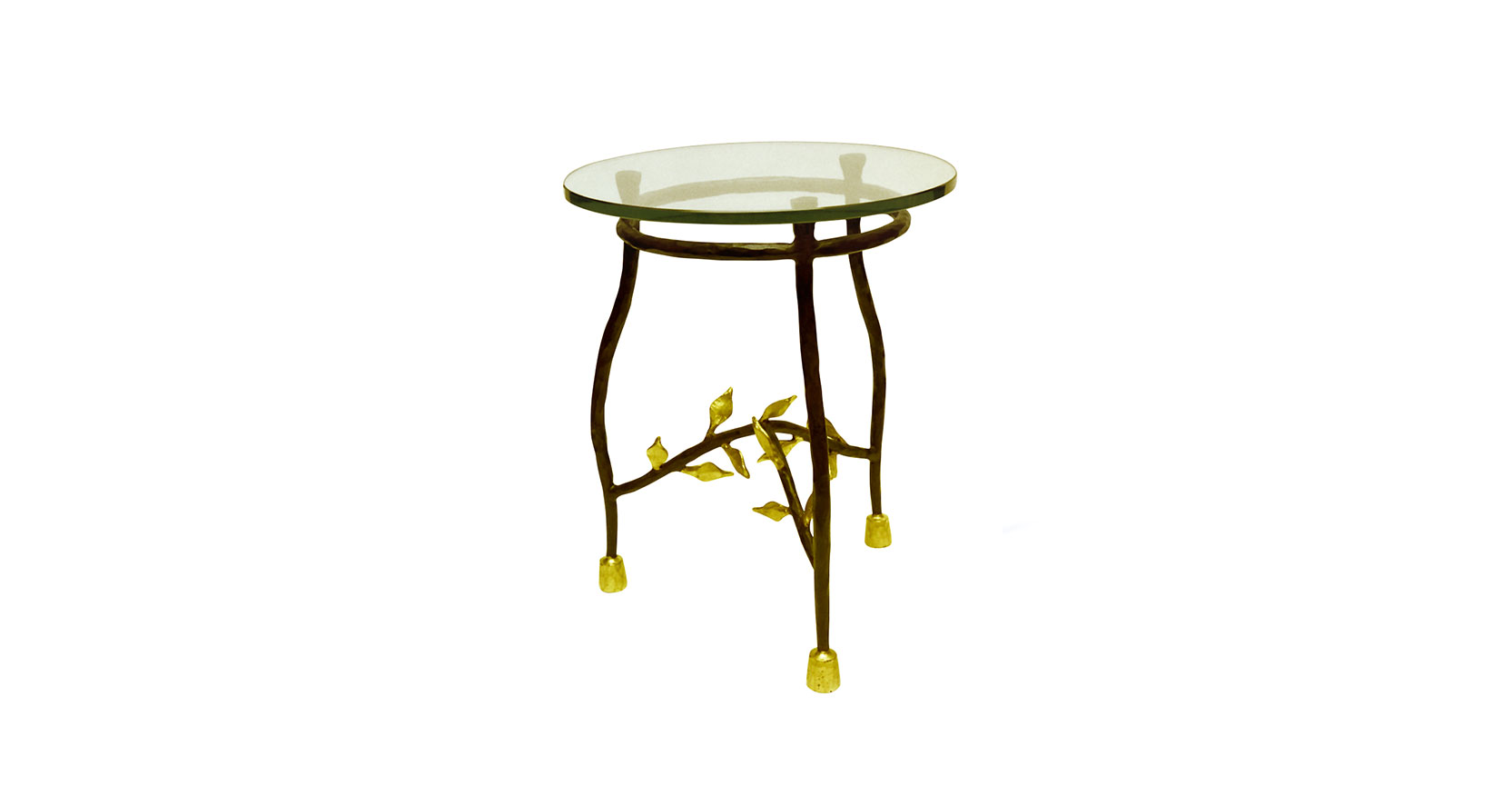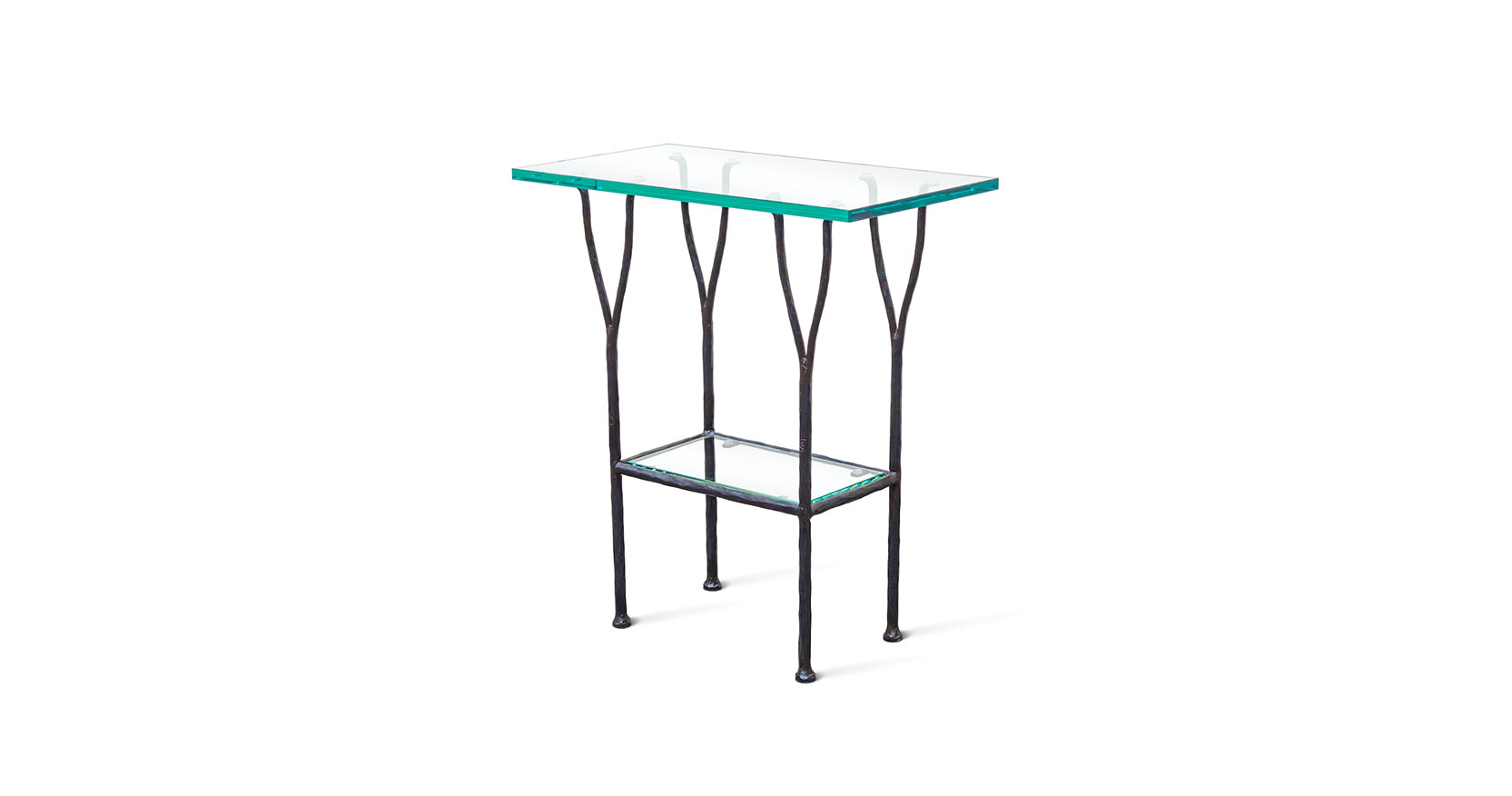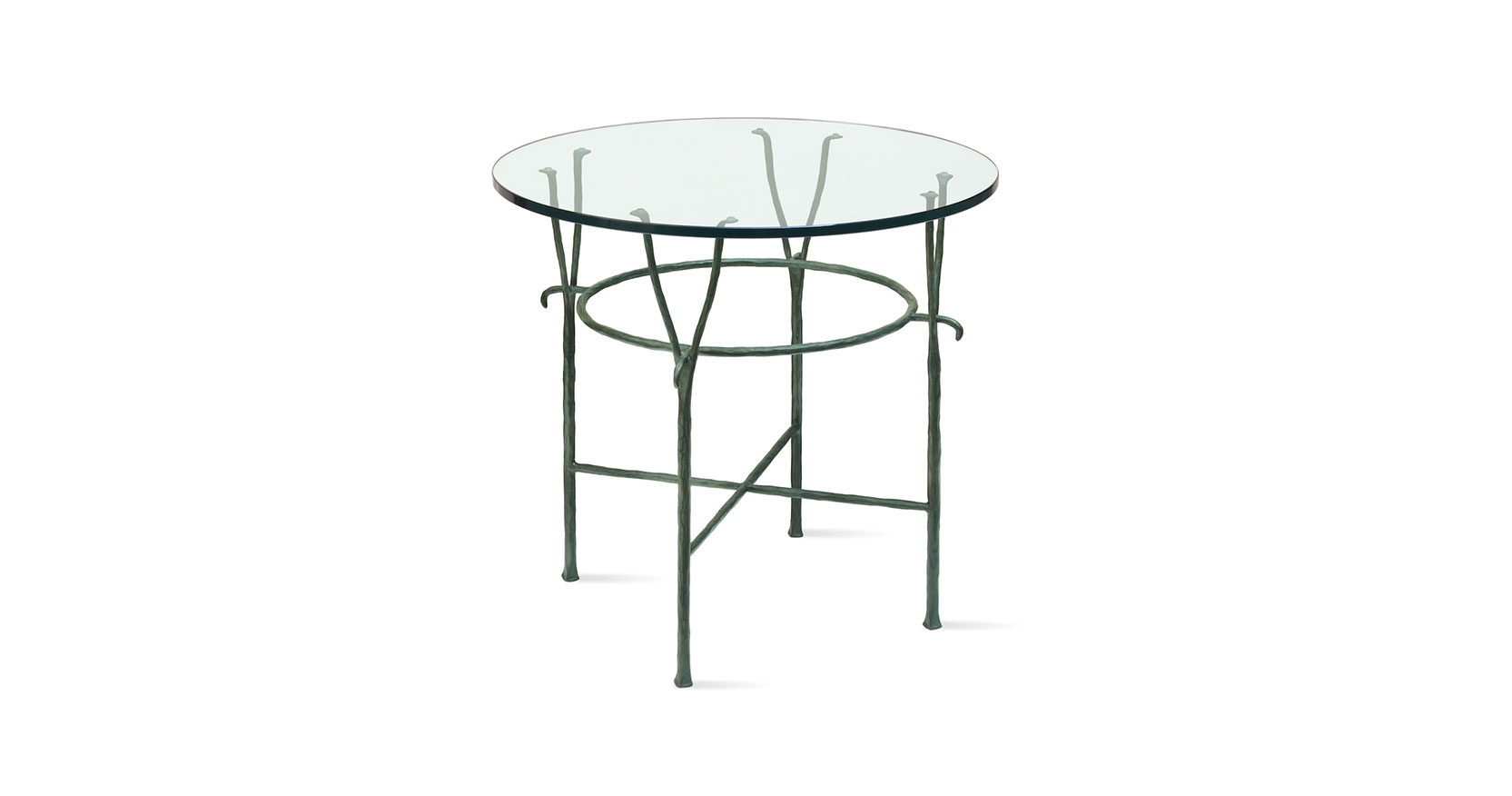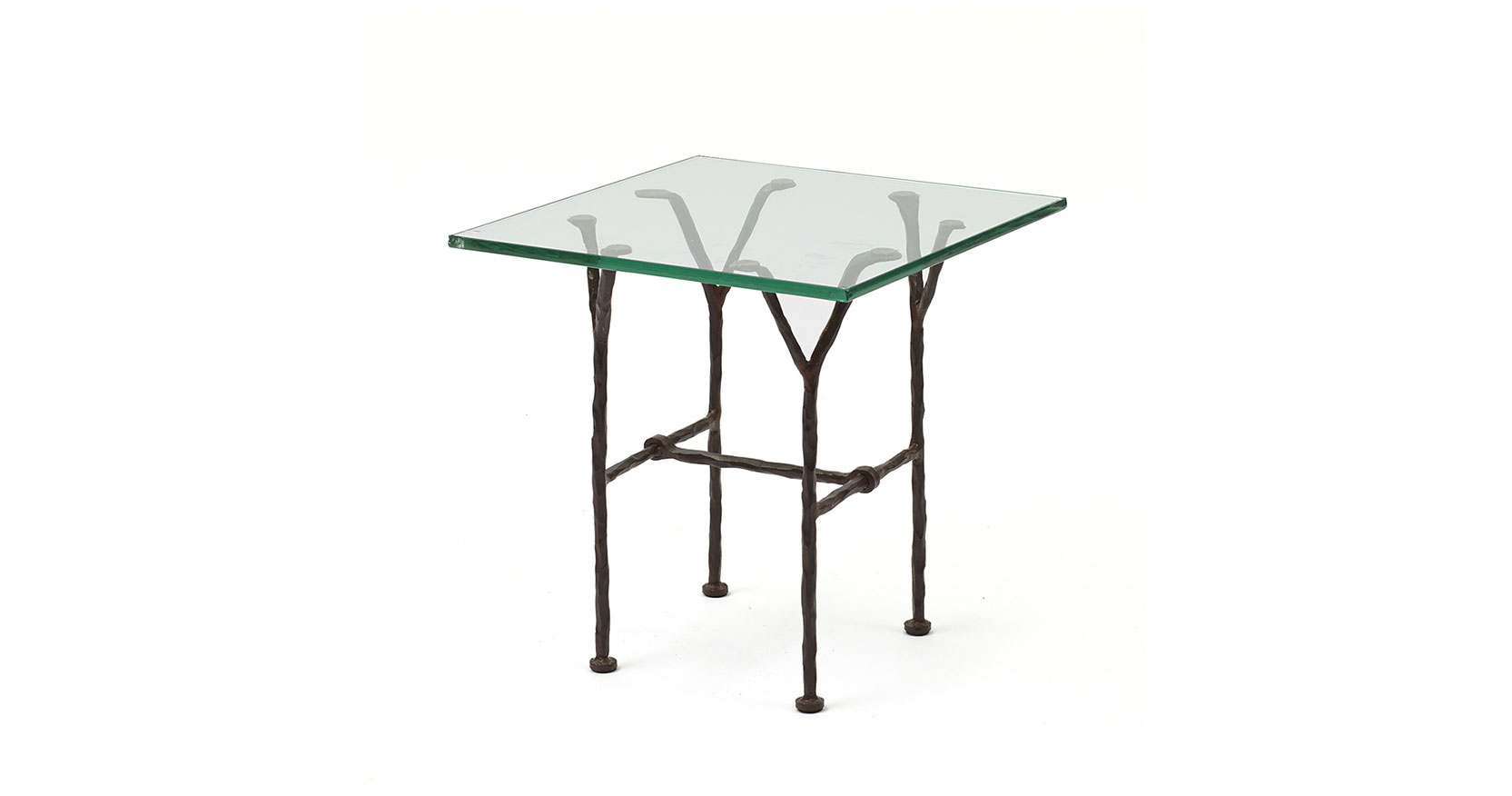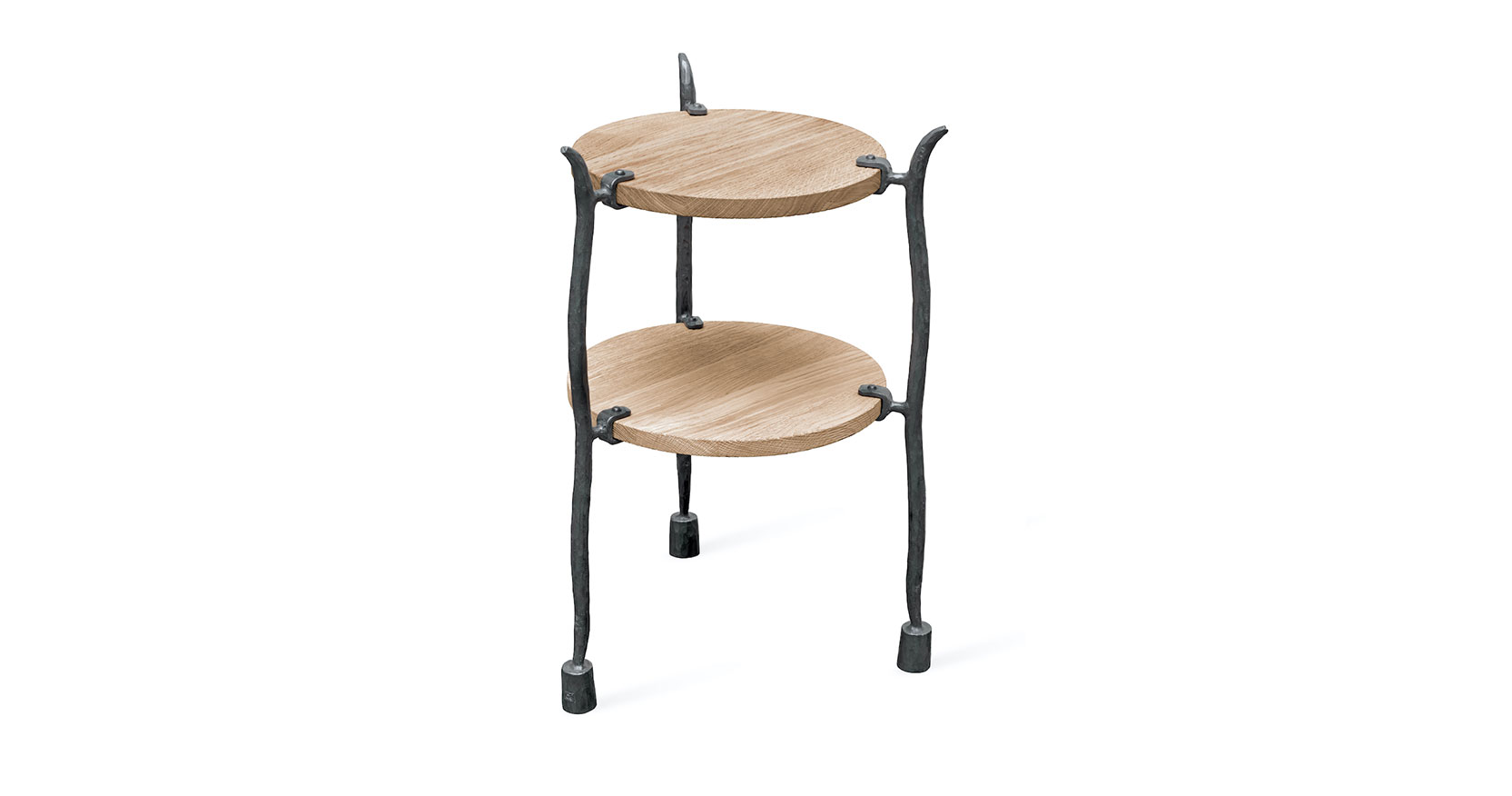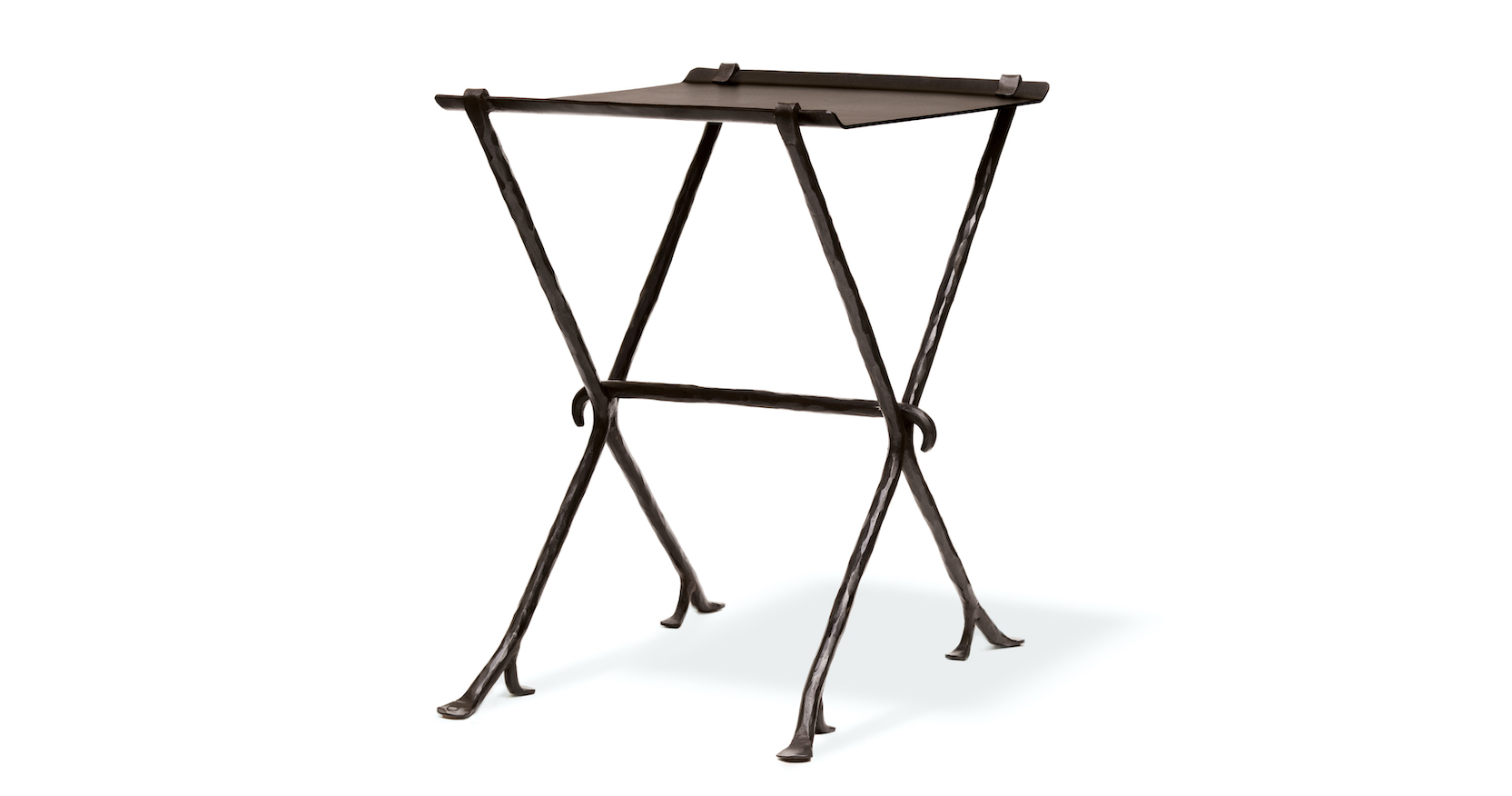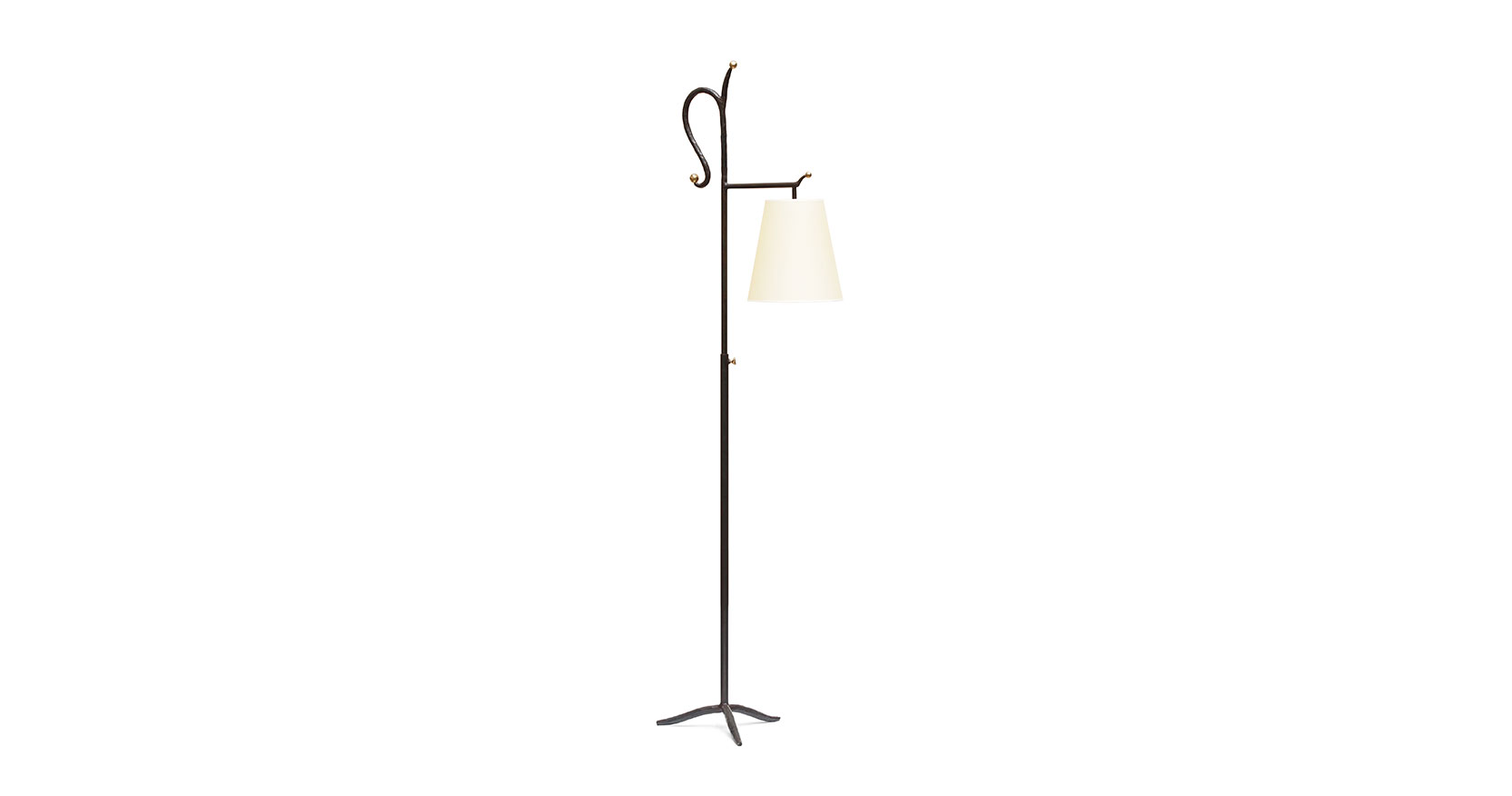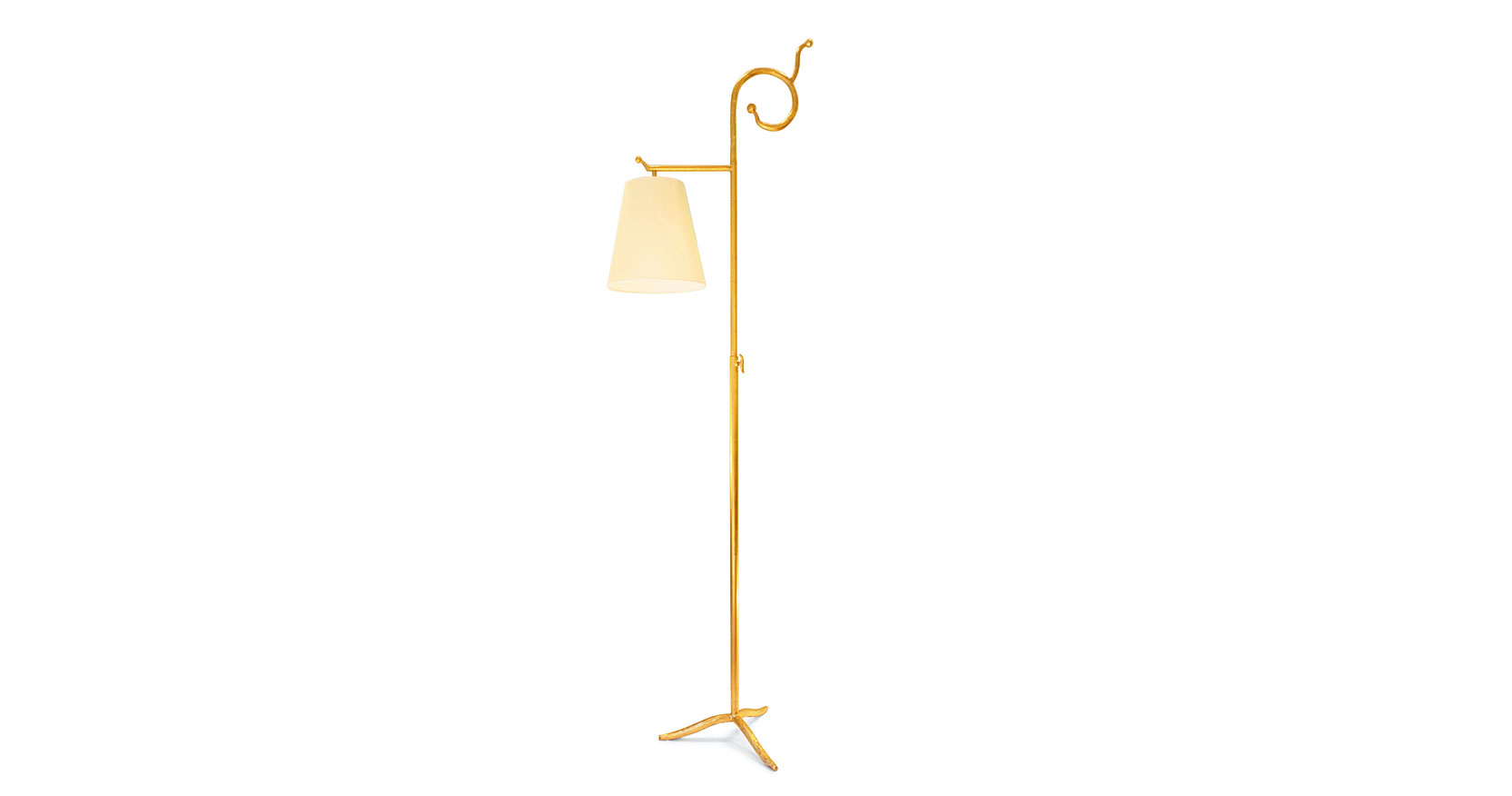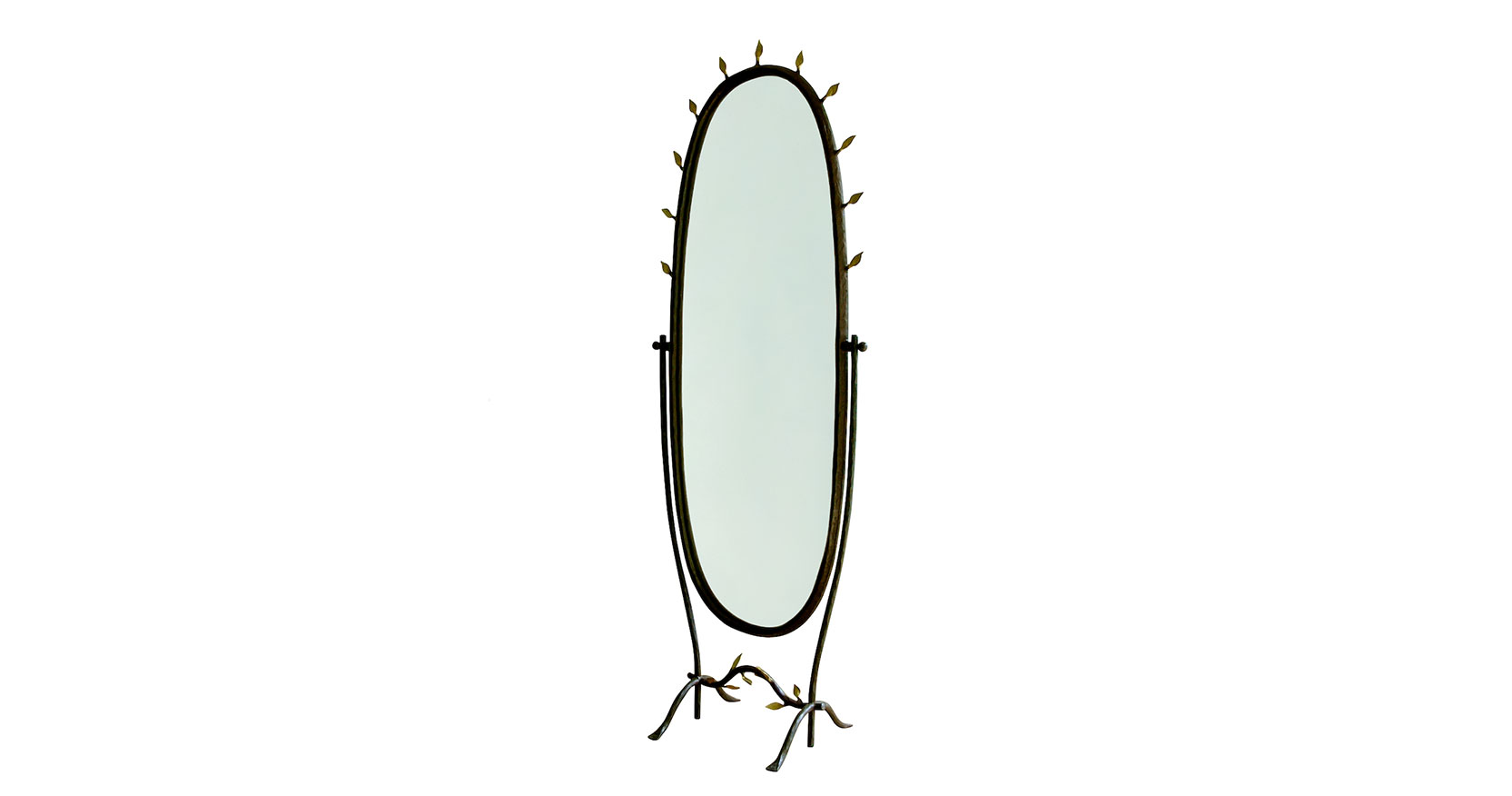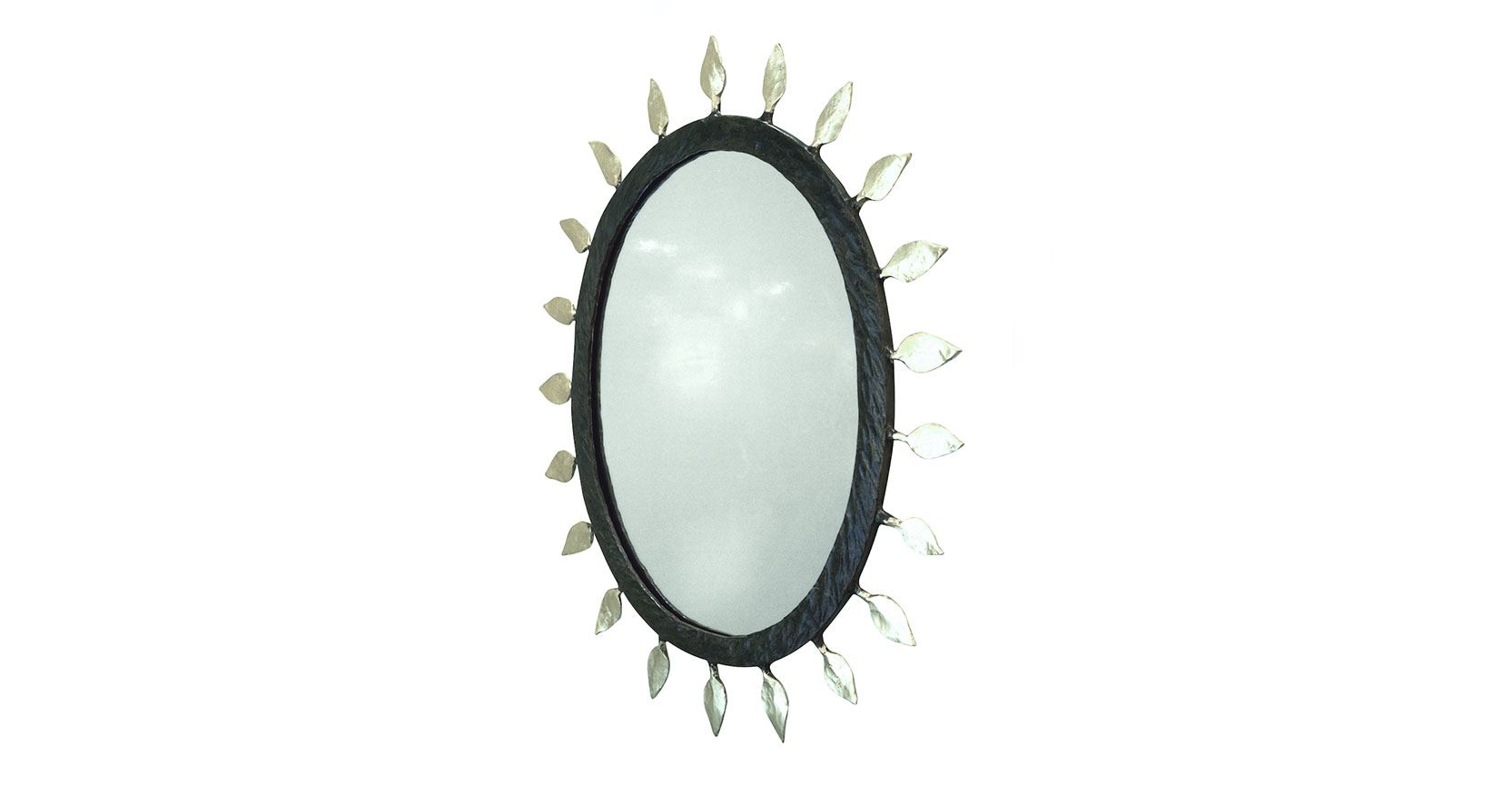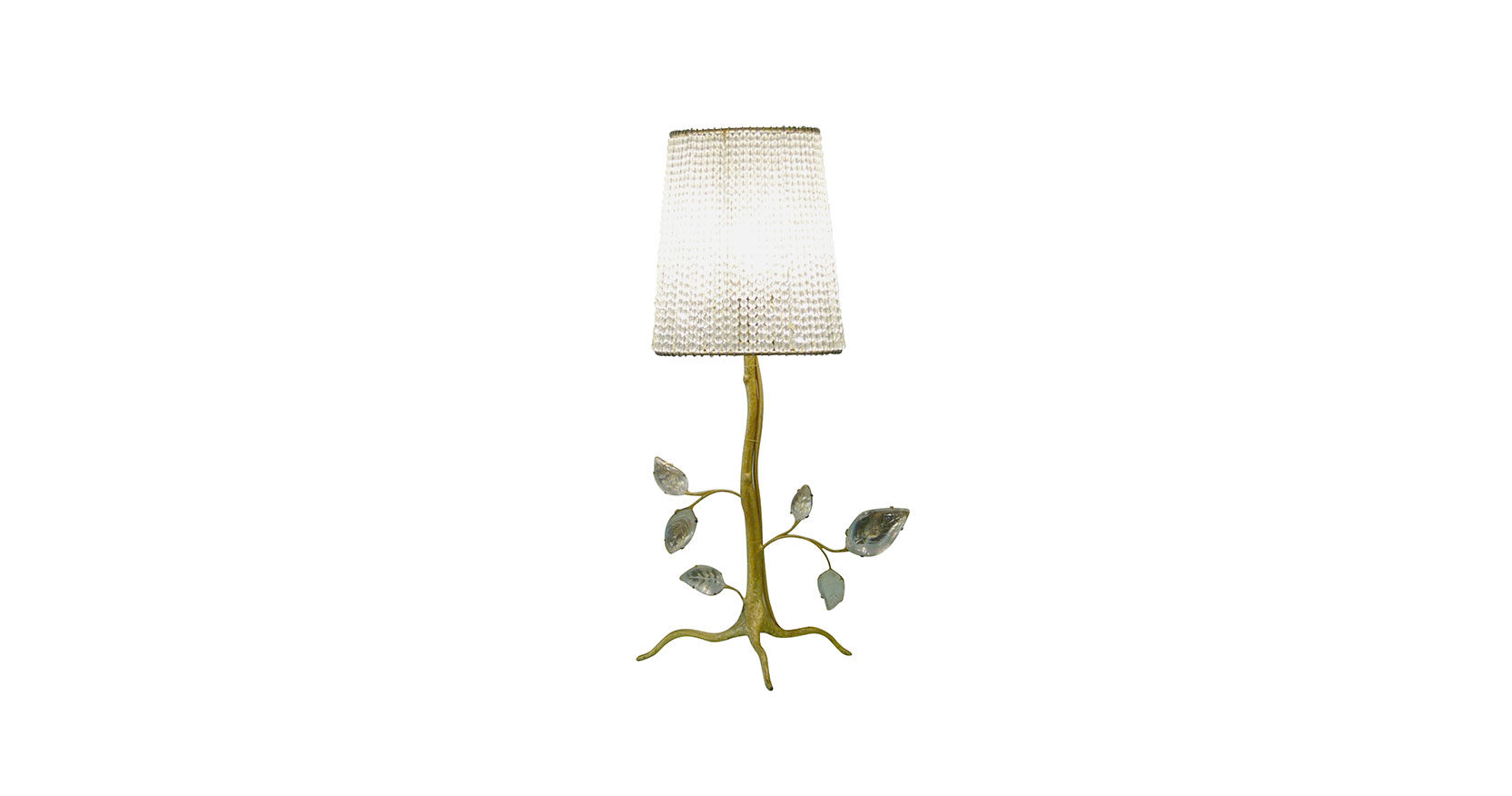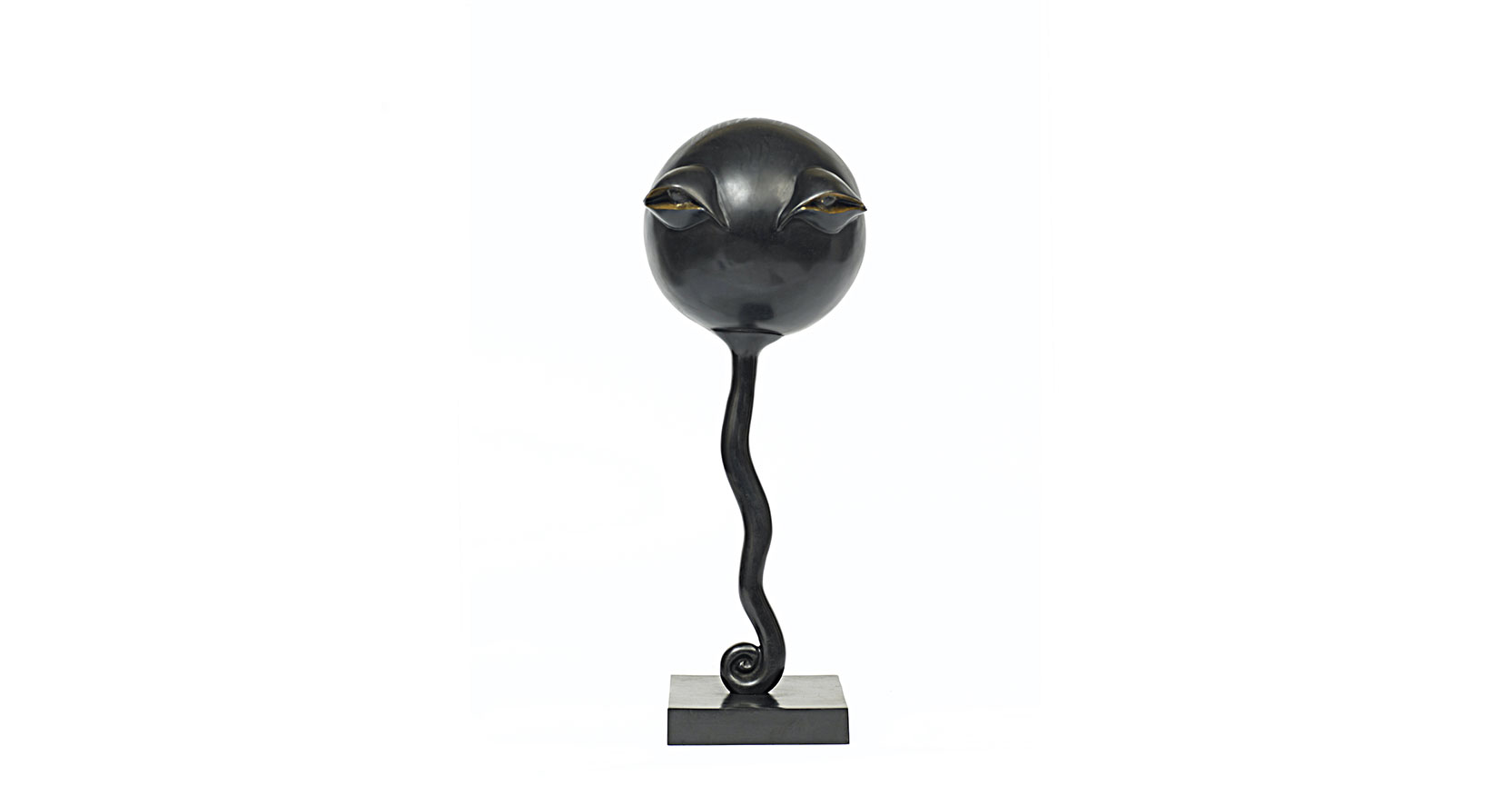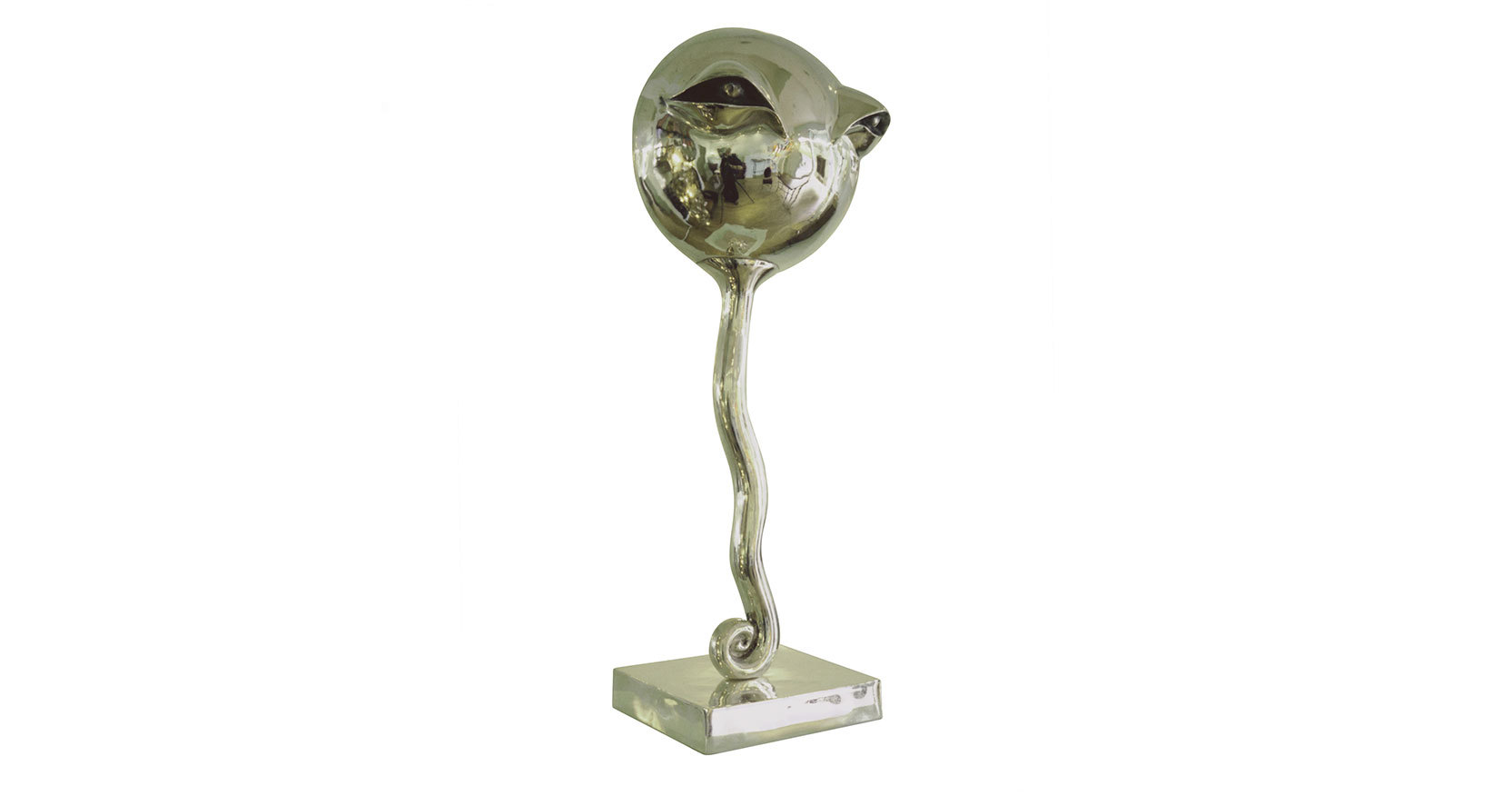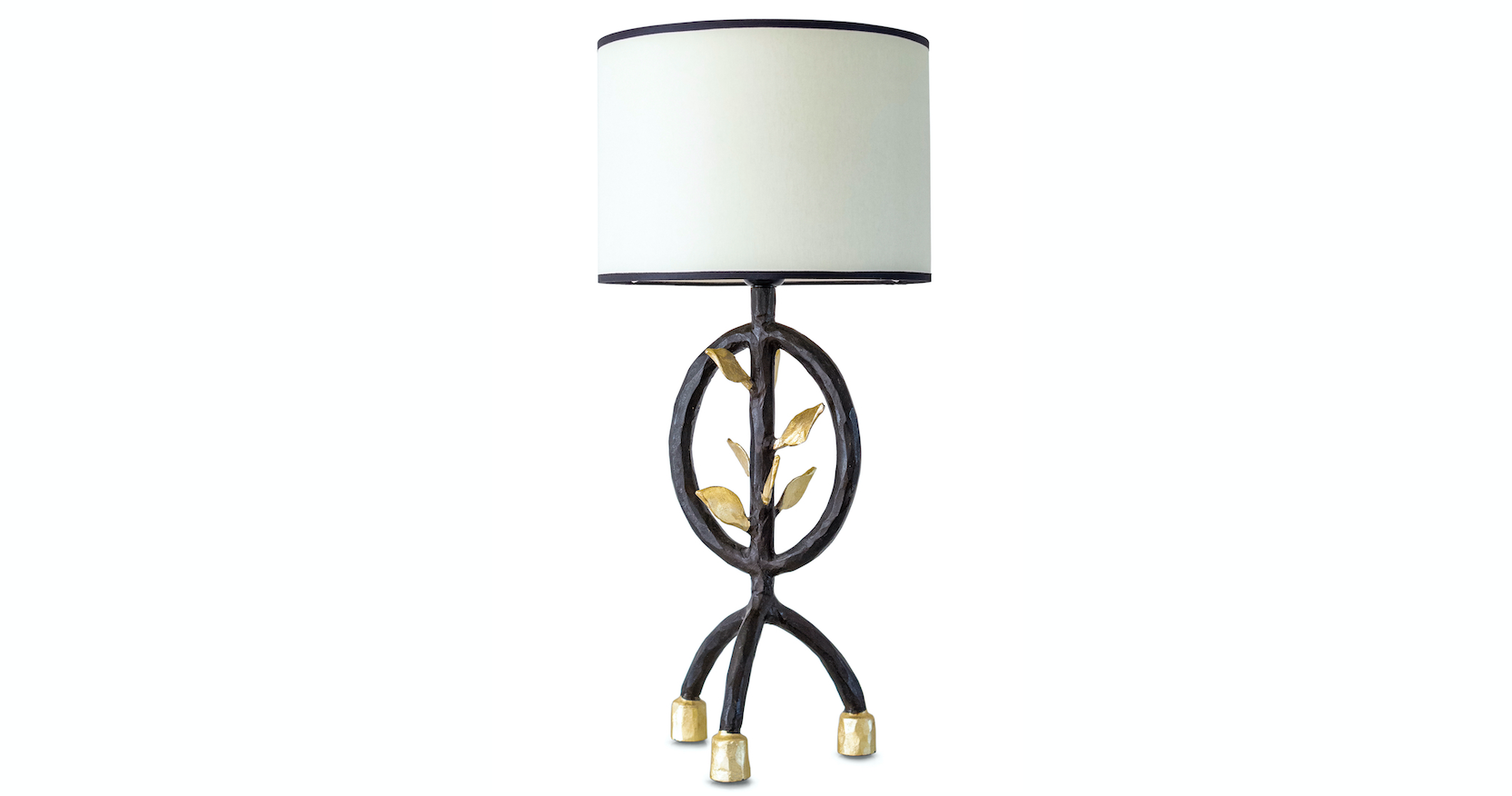
© Simon Kentish
In 1983, Elizabeth Garouste and Mattia Bonetti began working with the gallery En Attendant les Barbares, which published their first creations.
Furniture and lighting, draw the outlines of a very personal universe, which abolishes the border between decorative art and design. The duo laid the foundations for what would later be called “collectible design”, combining modernity and rarity.
The pieces made of wrought iron are grouped together in the form of “lines” Fourches, Asturias, Feuilles, or Olympiade.
This approach makes it possible to produce made-to-measure pieces.
A coffee table can be declined as a console or a dining room table, with a top of your choice and the desired dimensions.
In the early 2000s, Garouste and Bonetti separated. They leave it to the En Attendant les Barbares gallery to continue publishing their joint creations.
Today, their popularity with collectors has grown, with some results in the auction room reaching impressive heights. A wrought iron mirror was sold in 2013 at Sothebys for 103,000 euros.
Pierre Basse,
ironworker of Diego Giacometti
 © Simon Kentish
© Simon Kentish
At 14, Pierre Basse began working with Diego Giacometti, who would become both his mentor and his friend. Over time, a very strong bond unites these two discreet personalities, a mixture of Pierre Basse’s admiration for his eldest, and Diego Giacometti’s total confidence in his younger brother.
Chairs, tables, consoles, chandeliers are born, in a joyful mix of furniture-sculptures that add fantasy to neo-classical forms.
Their last collaboration will be the opening of the Picasso Museum, for which Diego Giacometti imagines the furniture and the lighting.
Then Diego dies, leaving Pierre Basse a little orphan.
Diego Giacometti and Garouste & Bonetti,
a relationship established by an exceptional craftsman.
In 1985, after the disappearance of Diego Giacometti, a meeting will be decisive: that of Elizabeth Garouste and Mattia Bonetti.
Almost forty years later, Pierre Basse is still the gallery’s exclusive ironworker. He makes all the wrought iron pieces by hand, in the great tradition of French Decorative Arts.
In addition to his activity as a craftsman, Pierre Basse is involved in appraisals of works by Diego Giacometti with prestigious auction houses, such as Sothebys and Christies.



